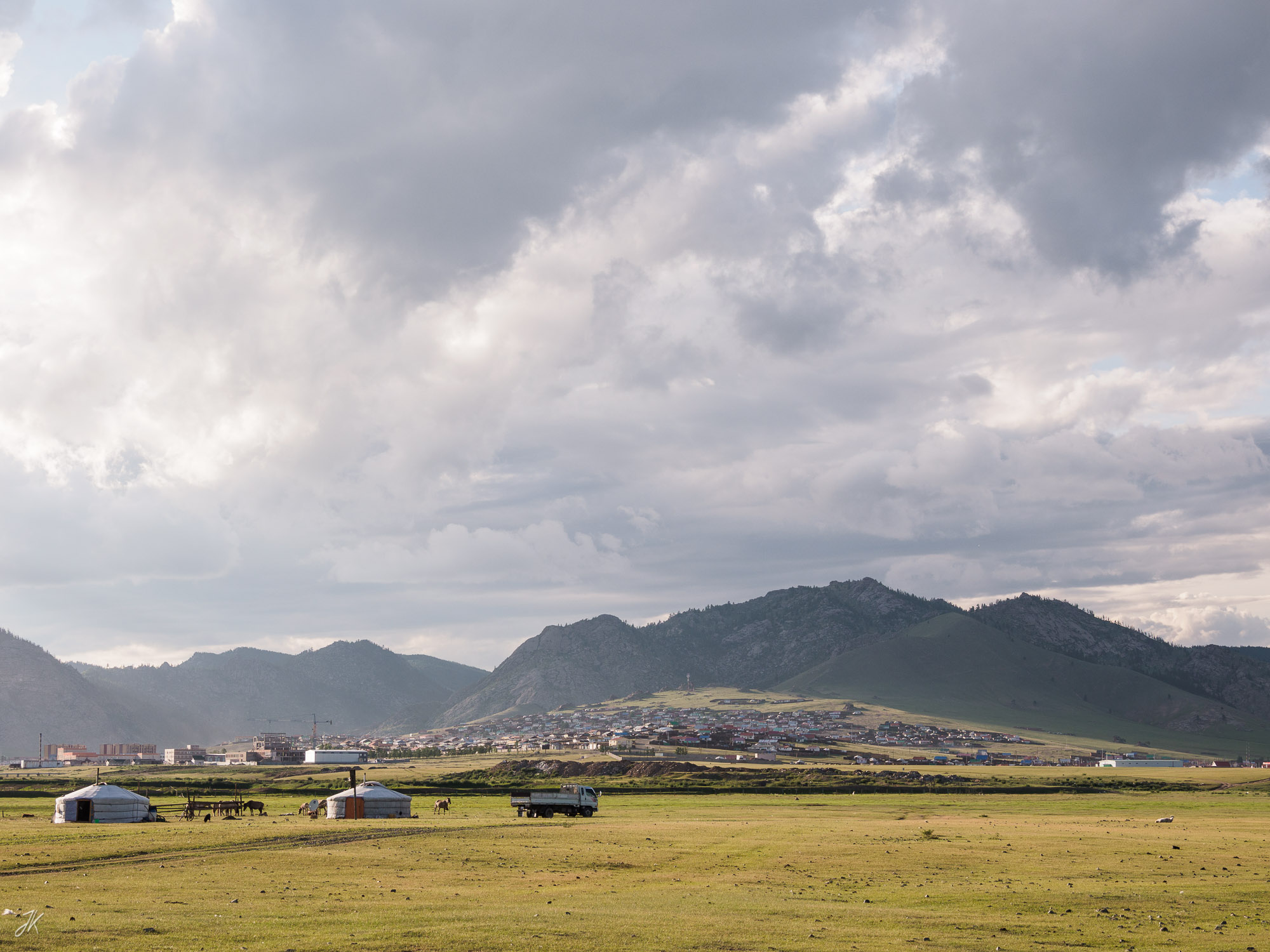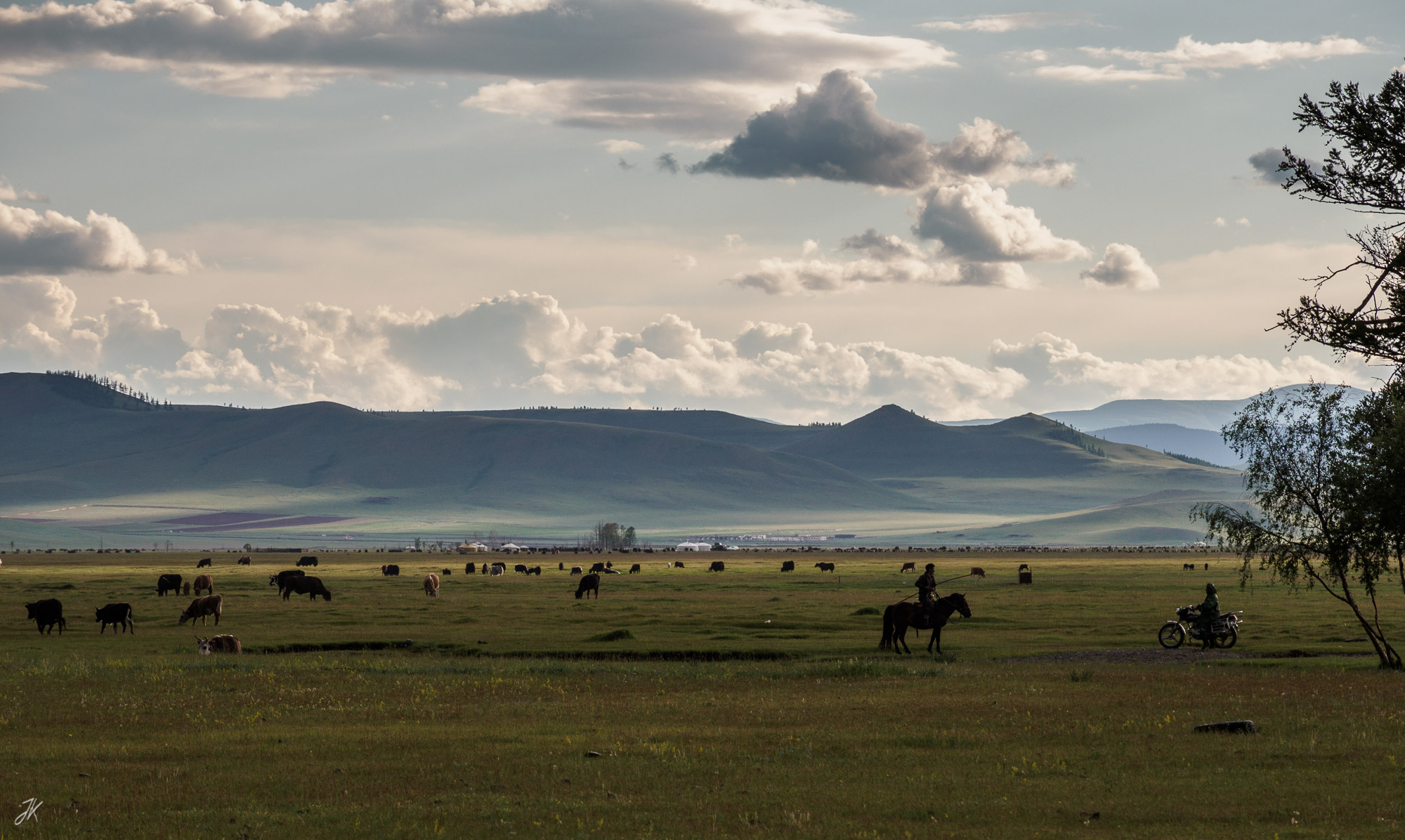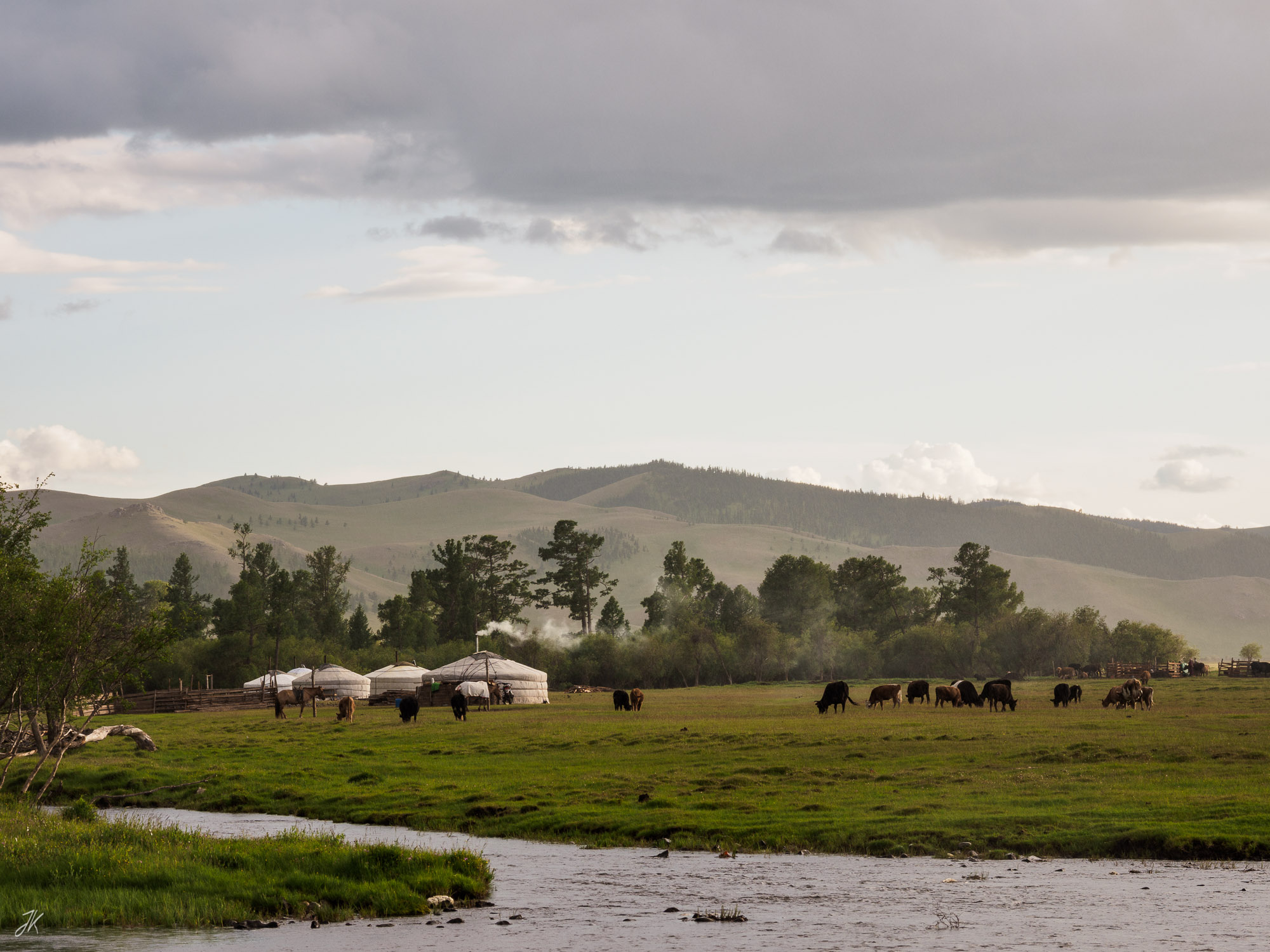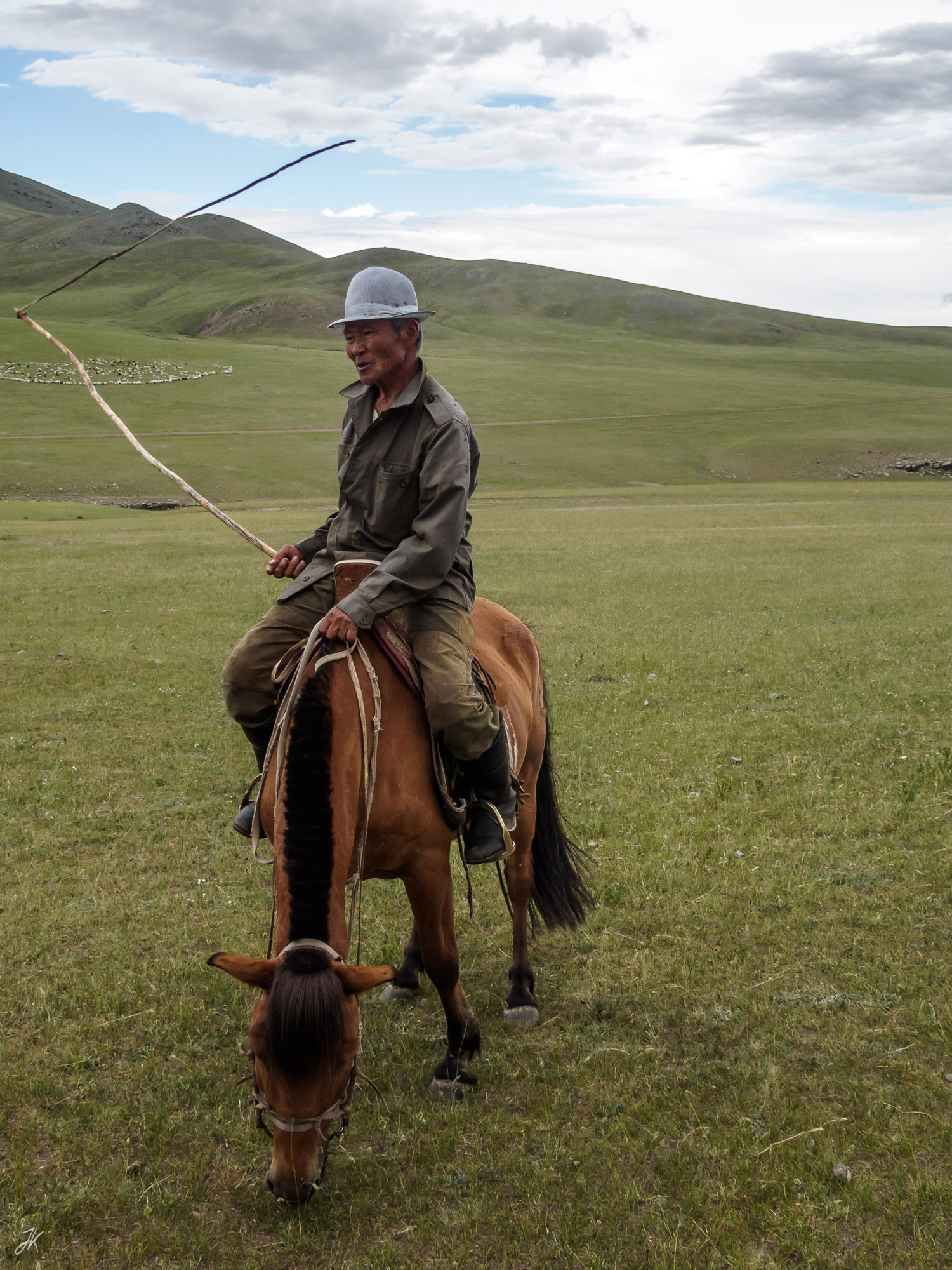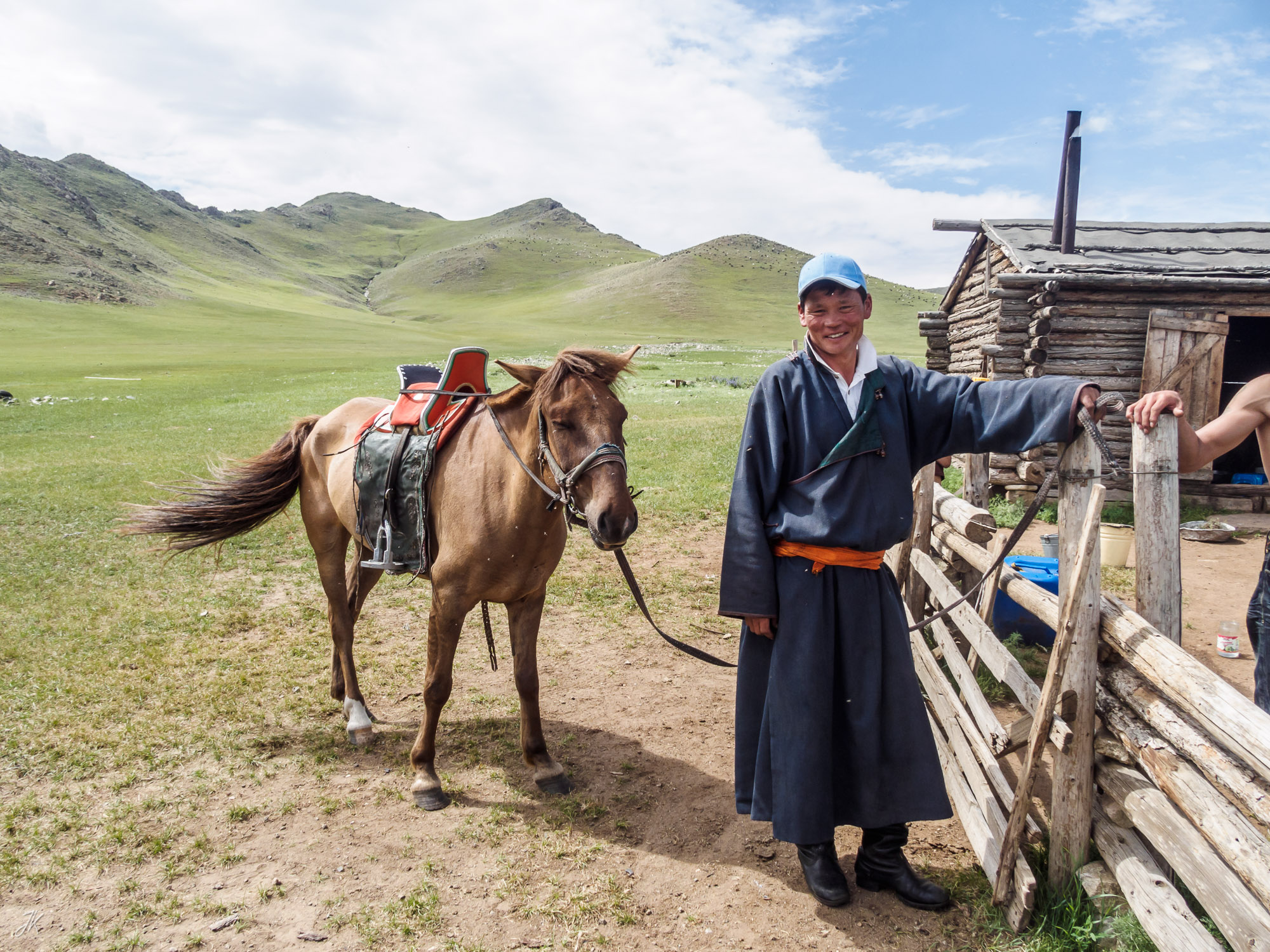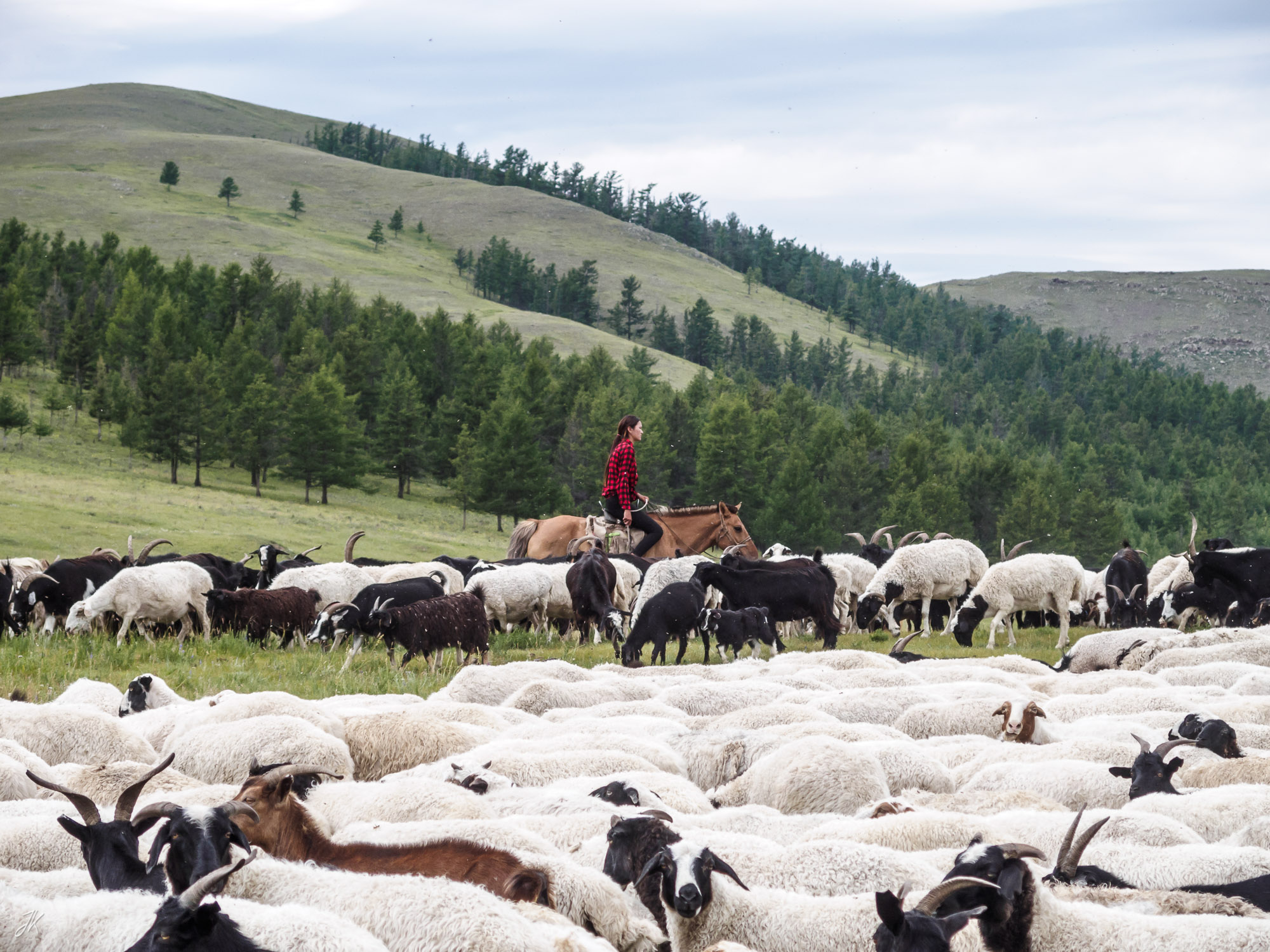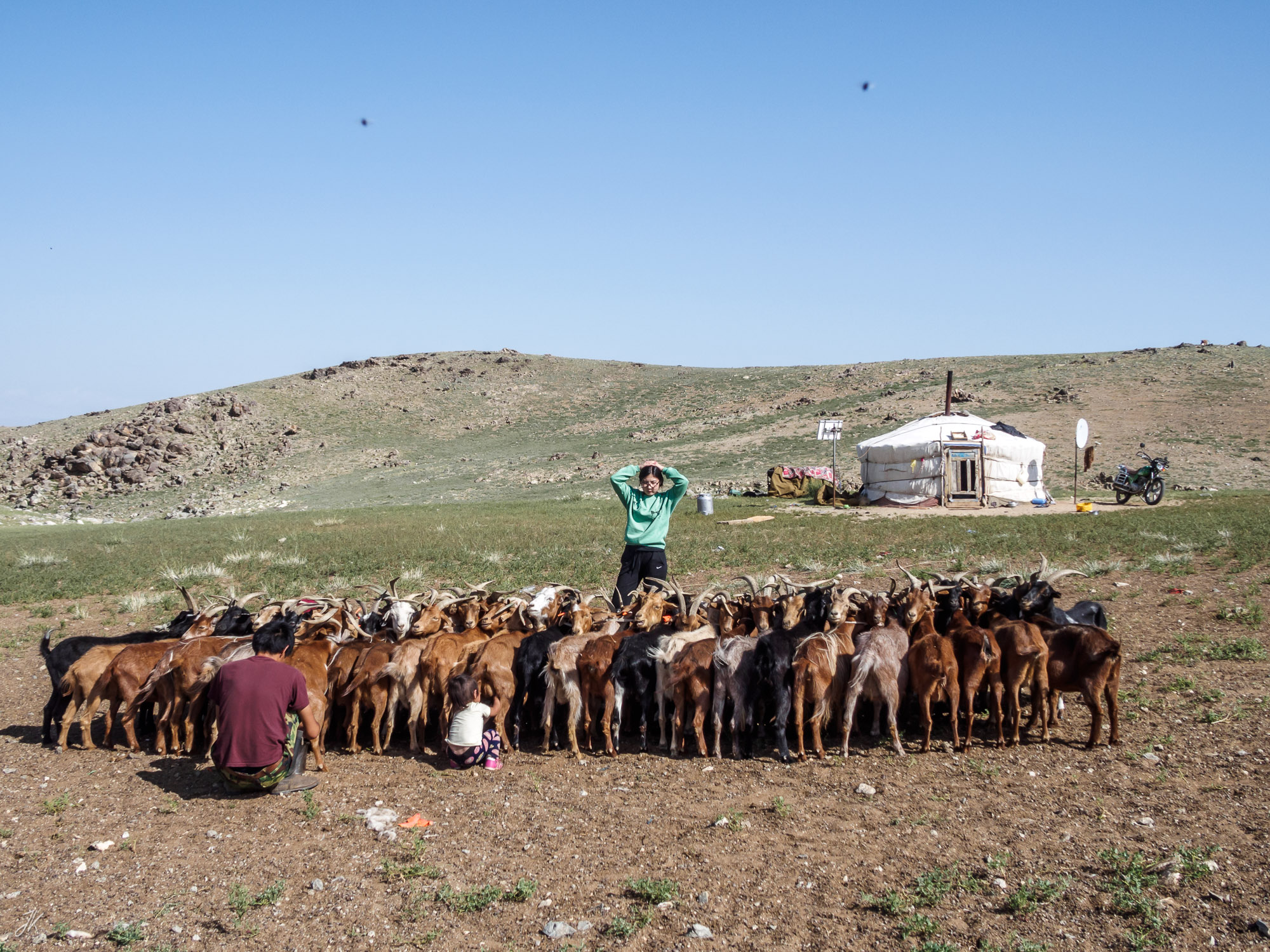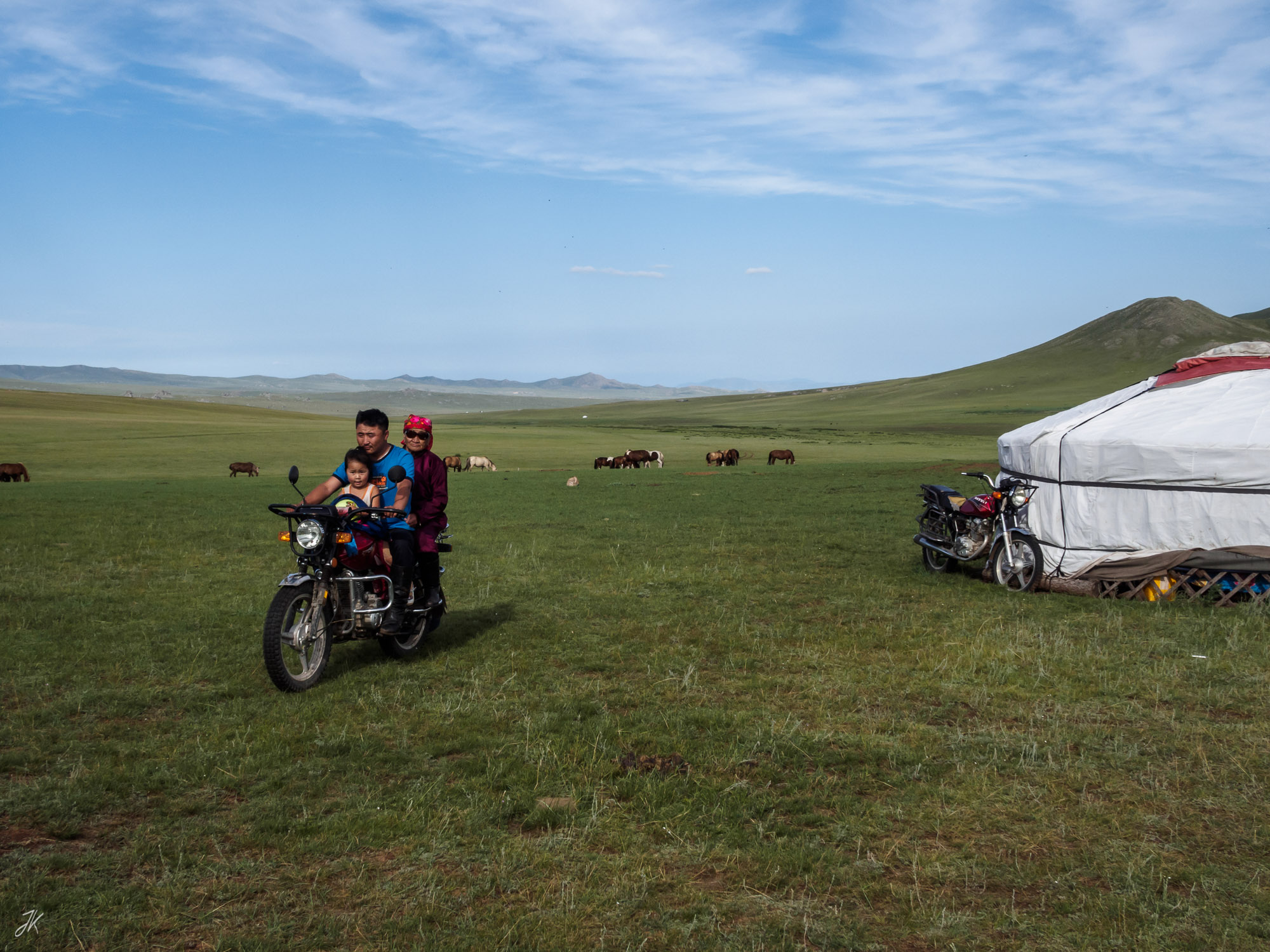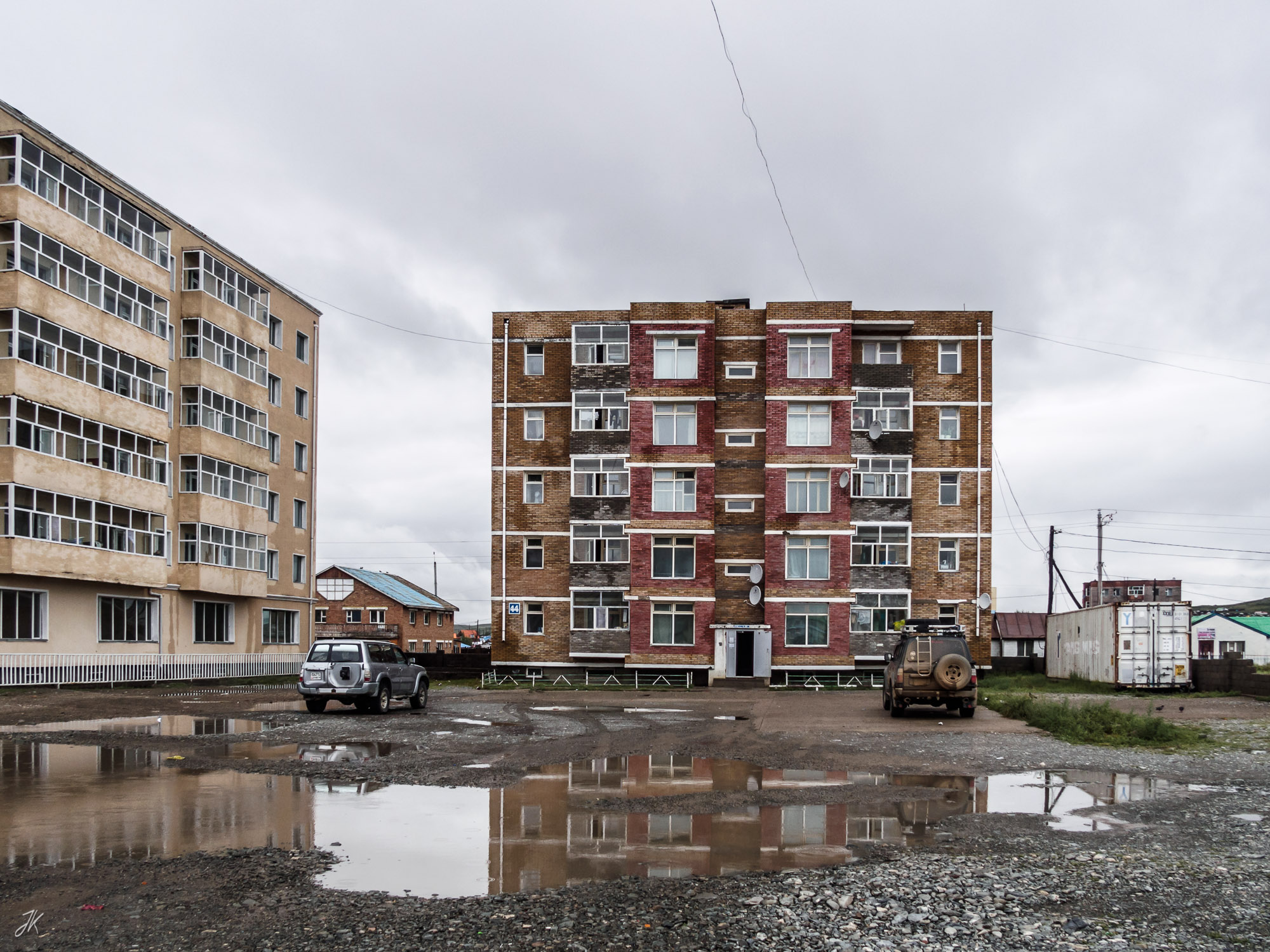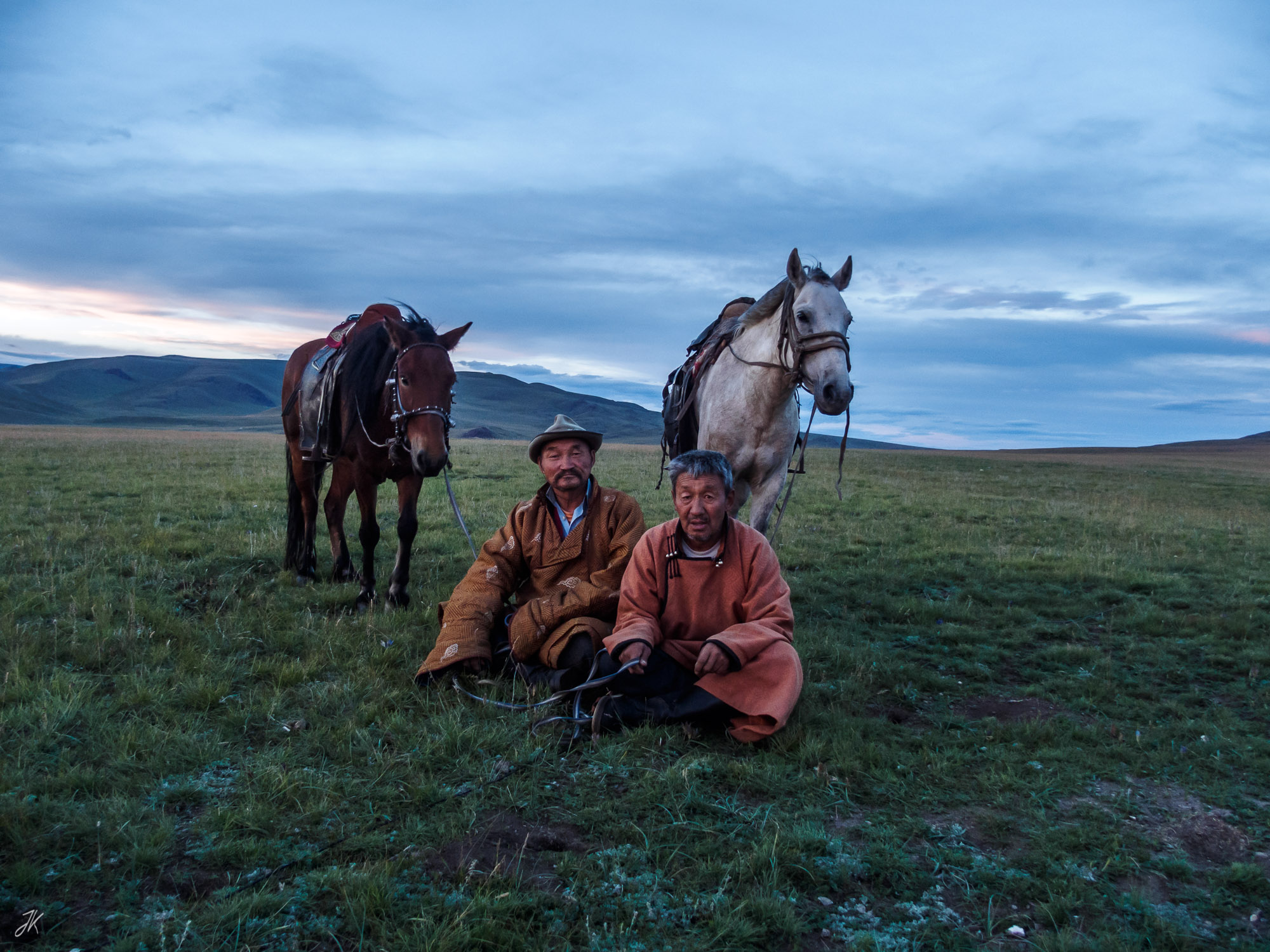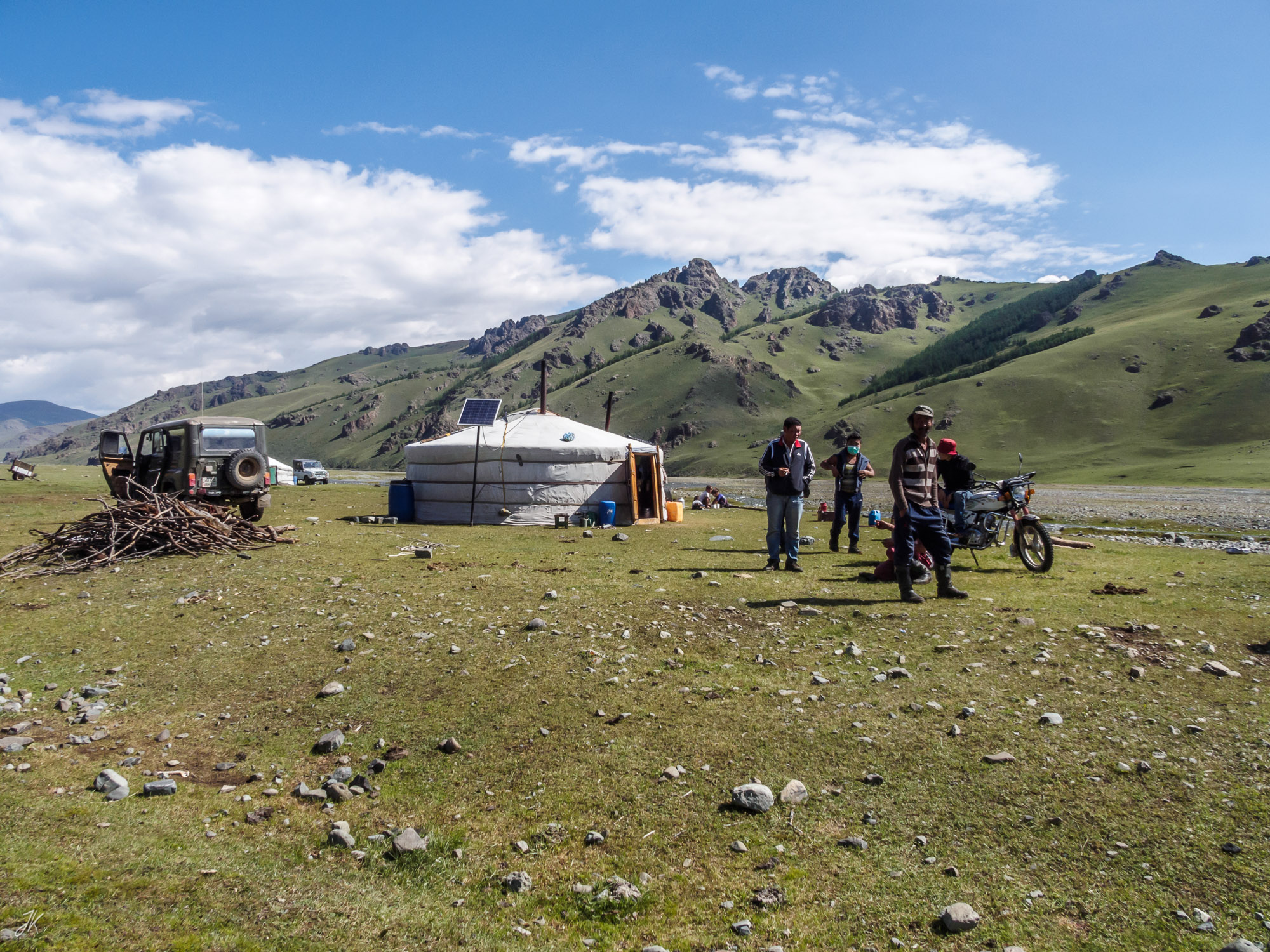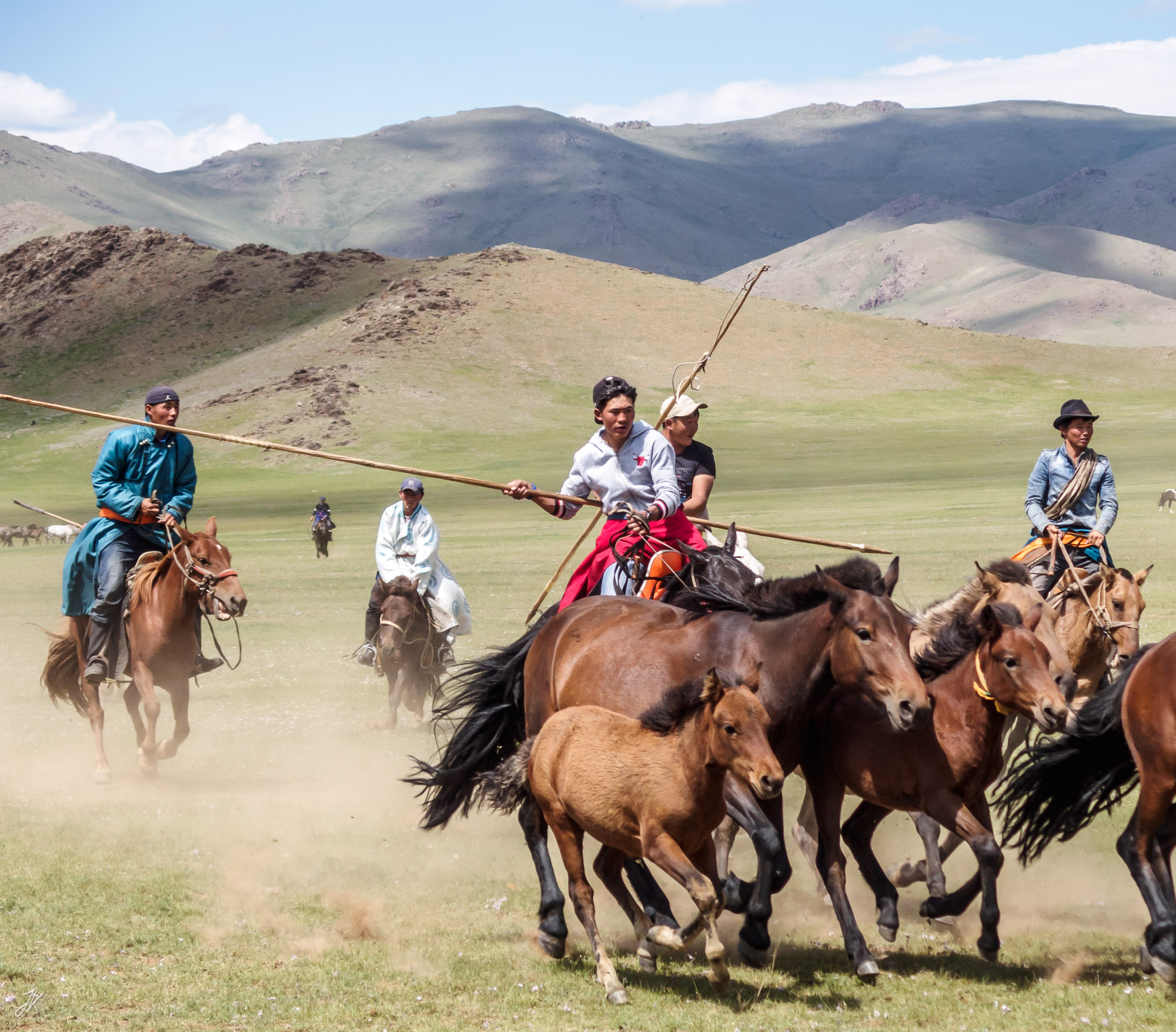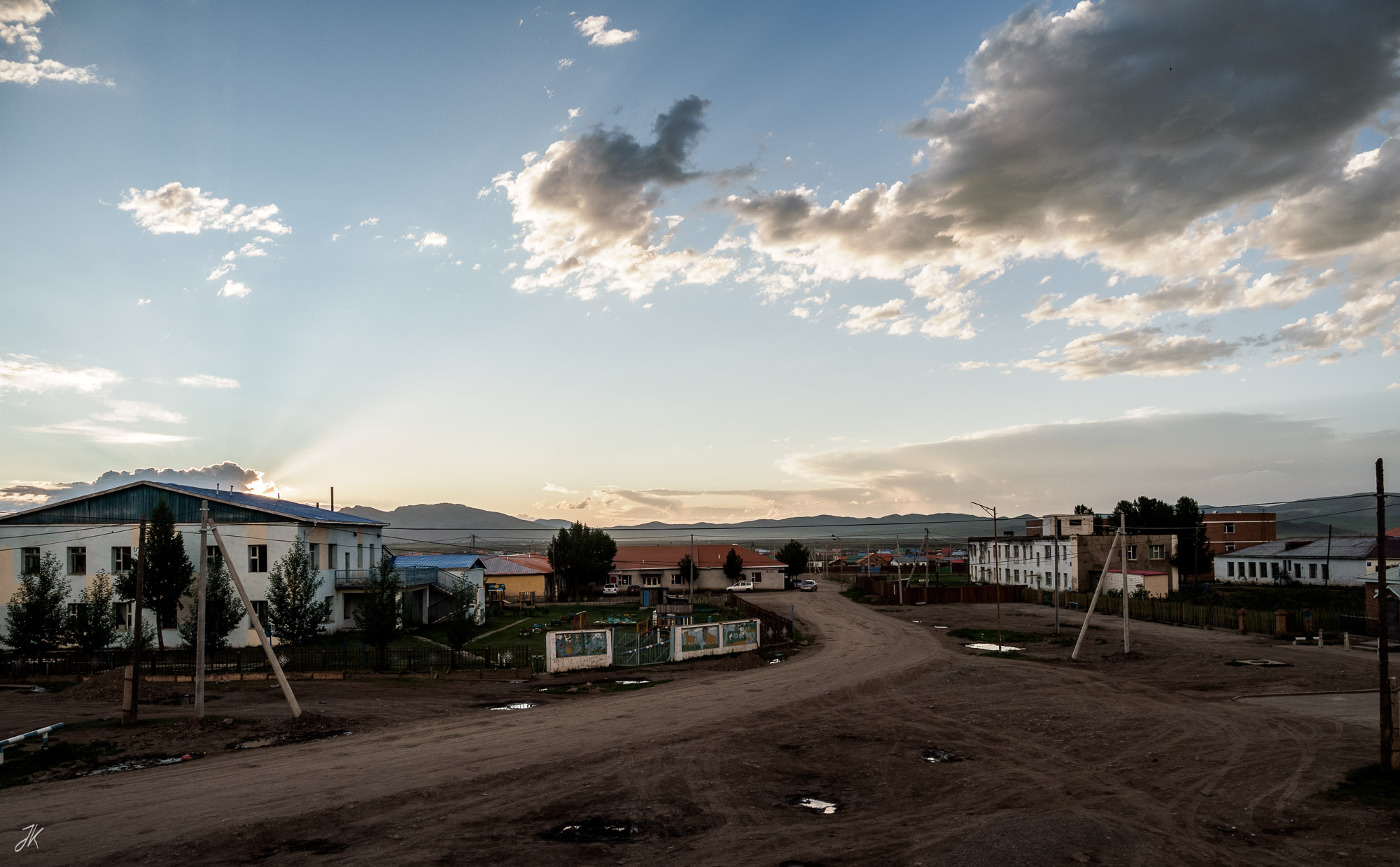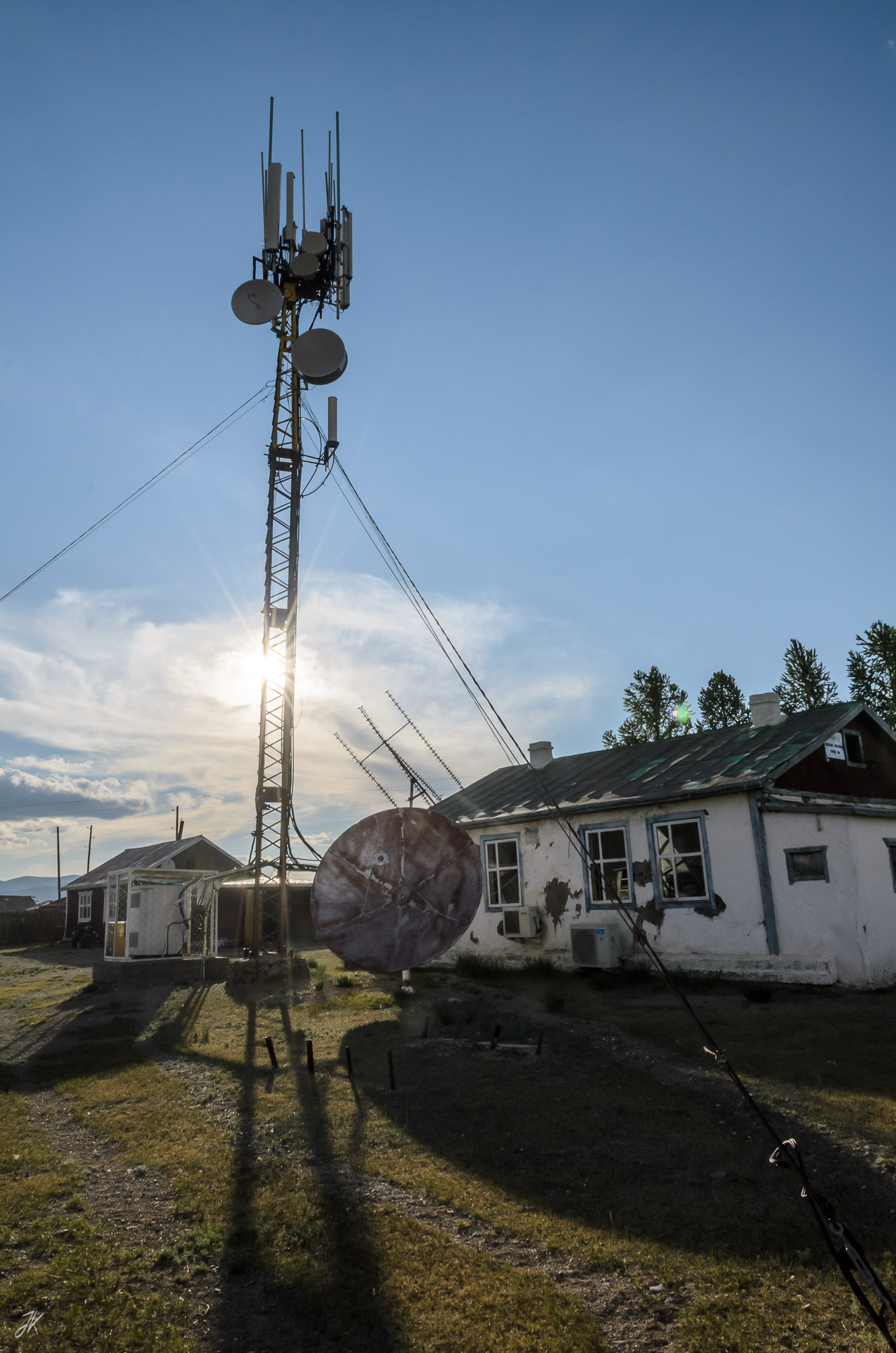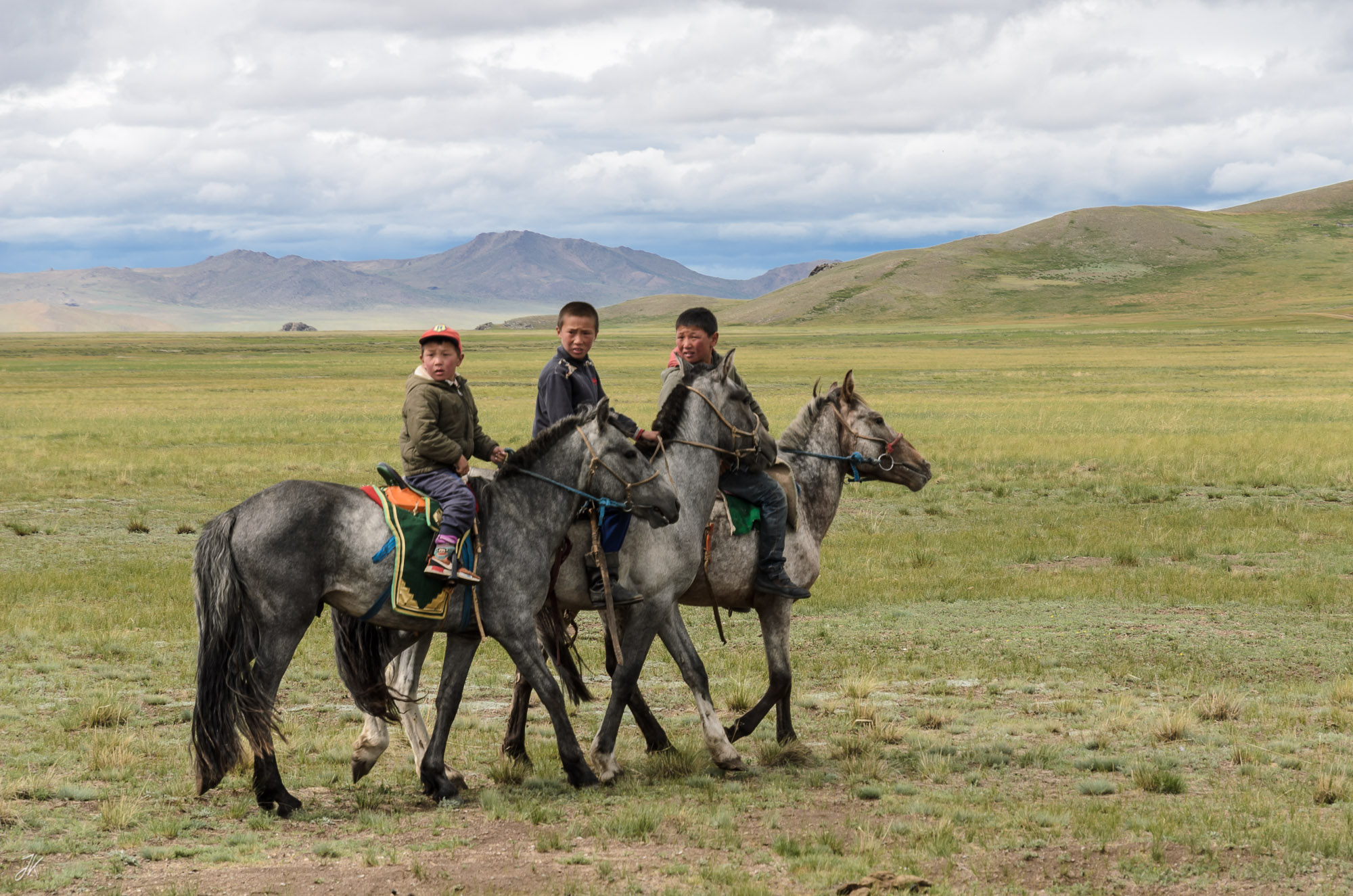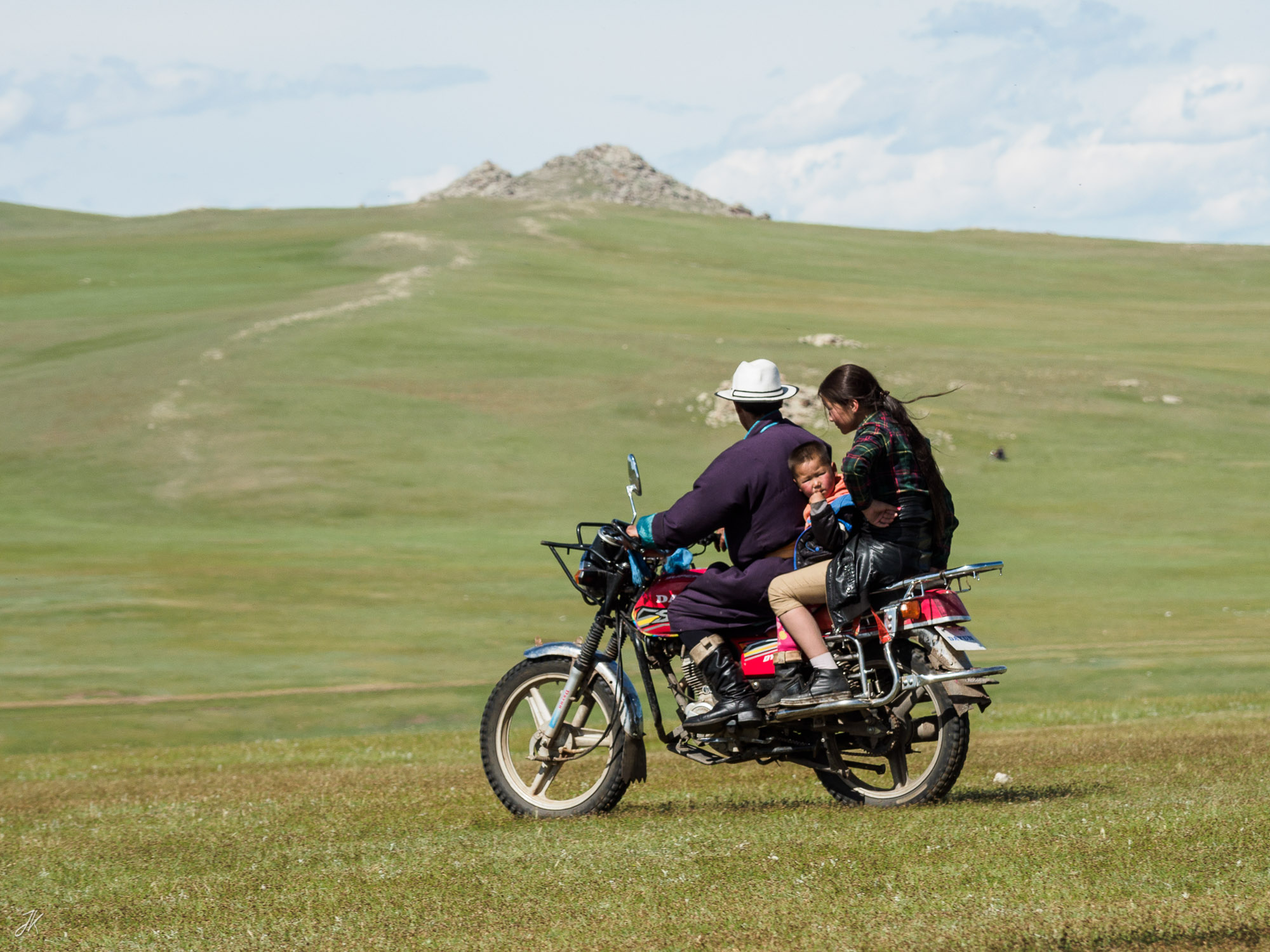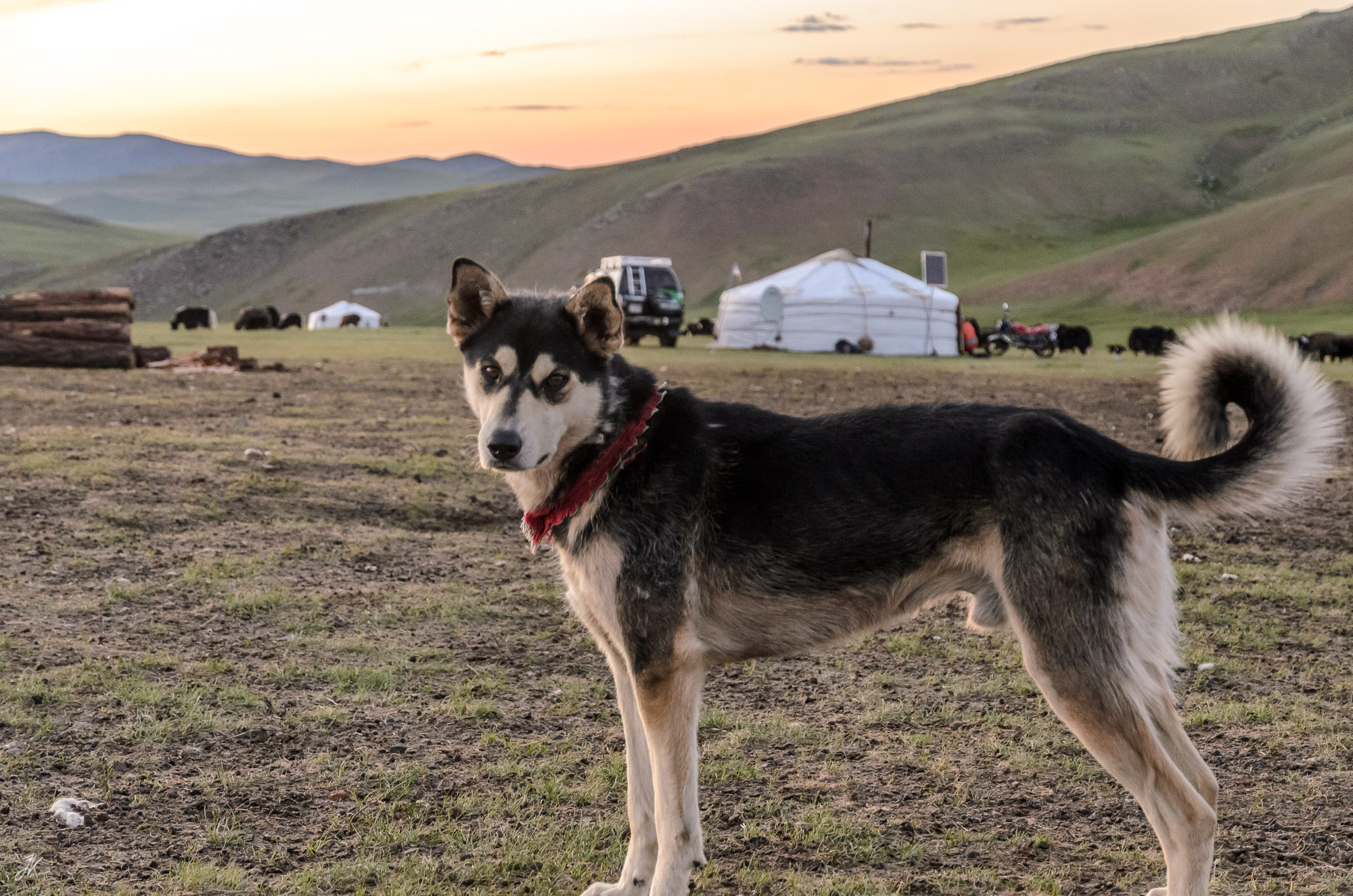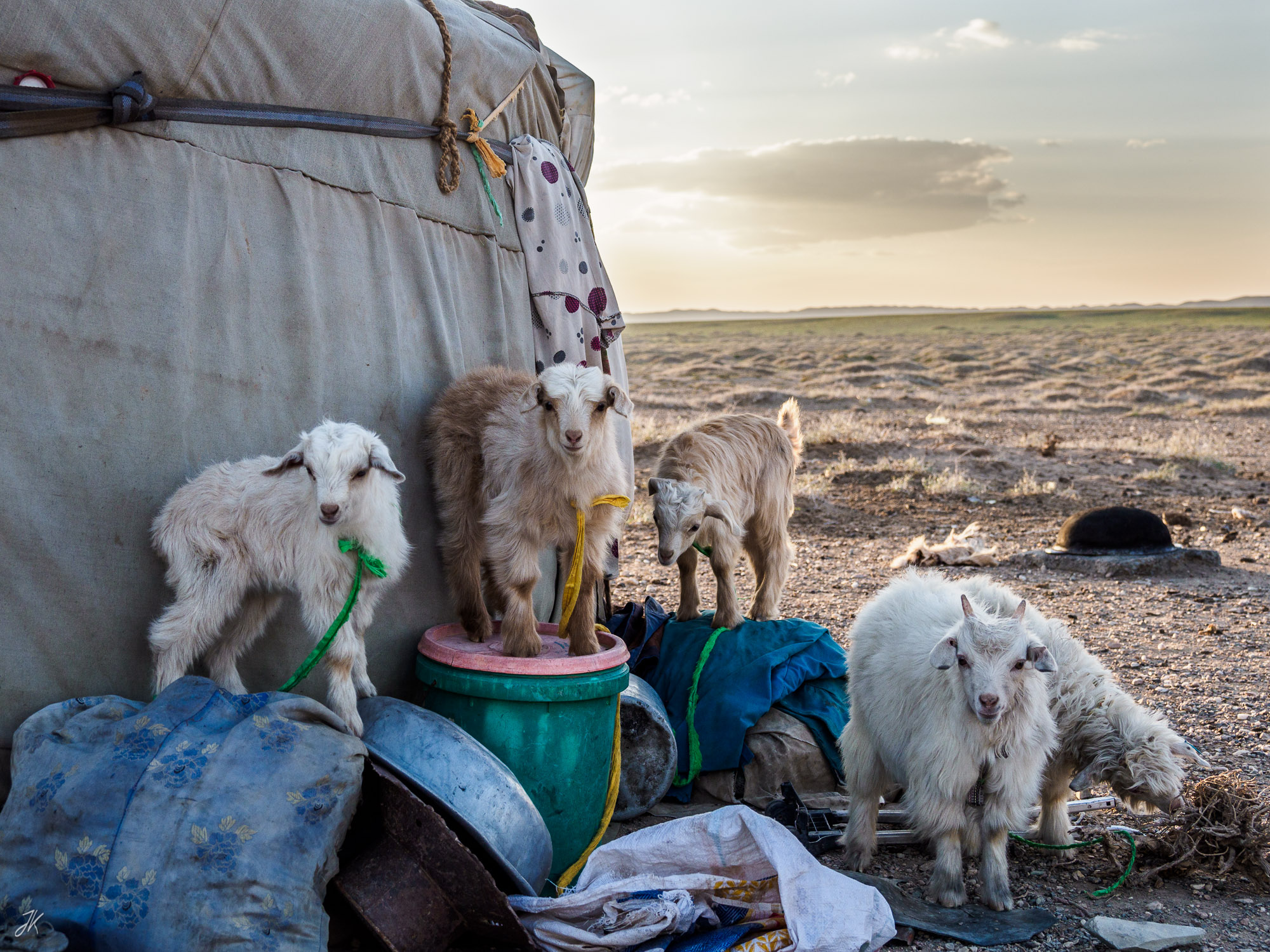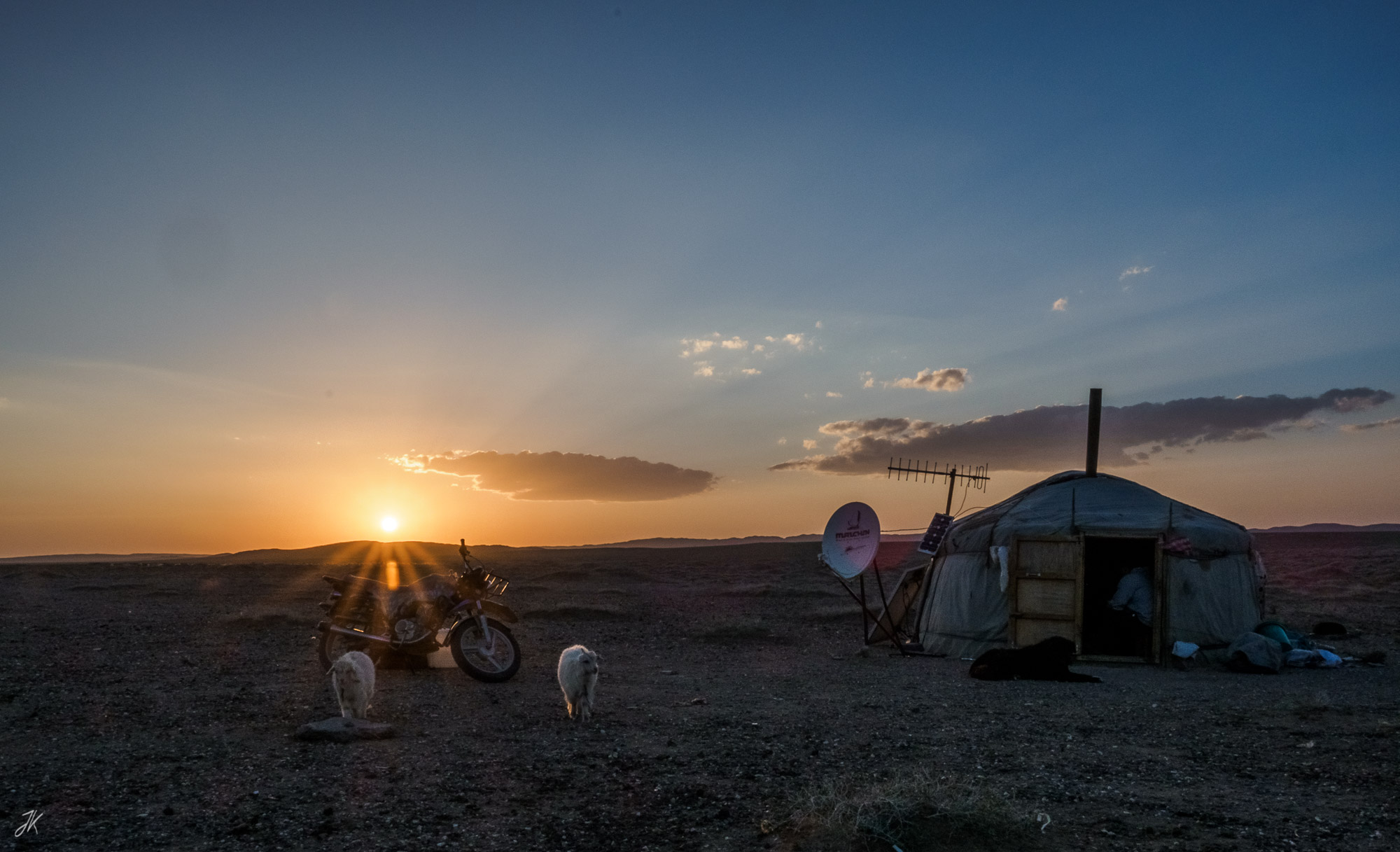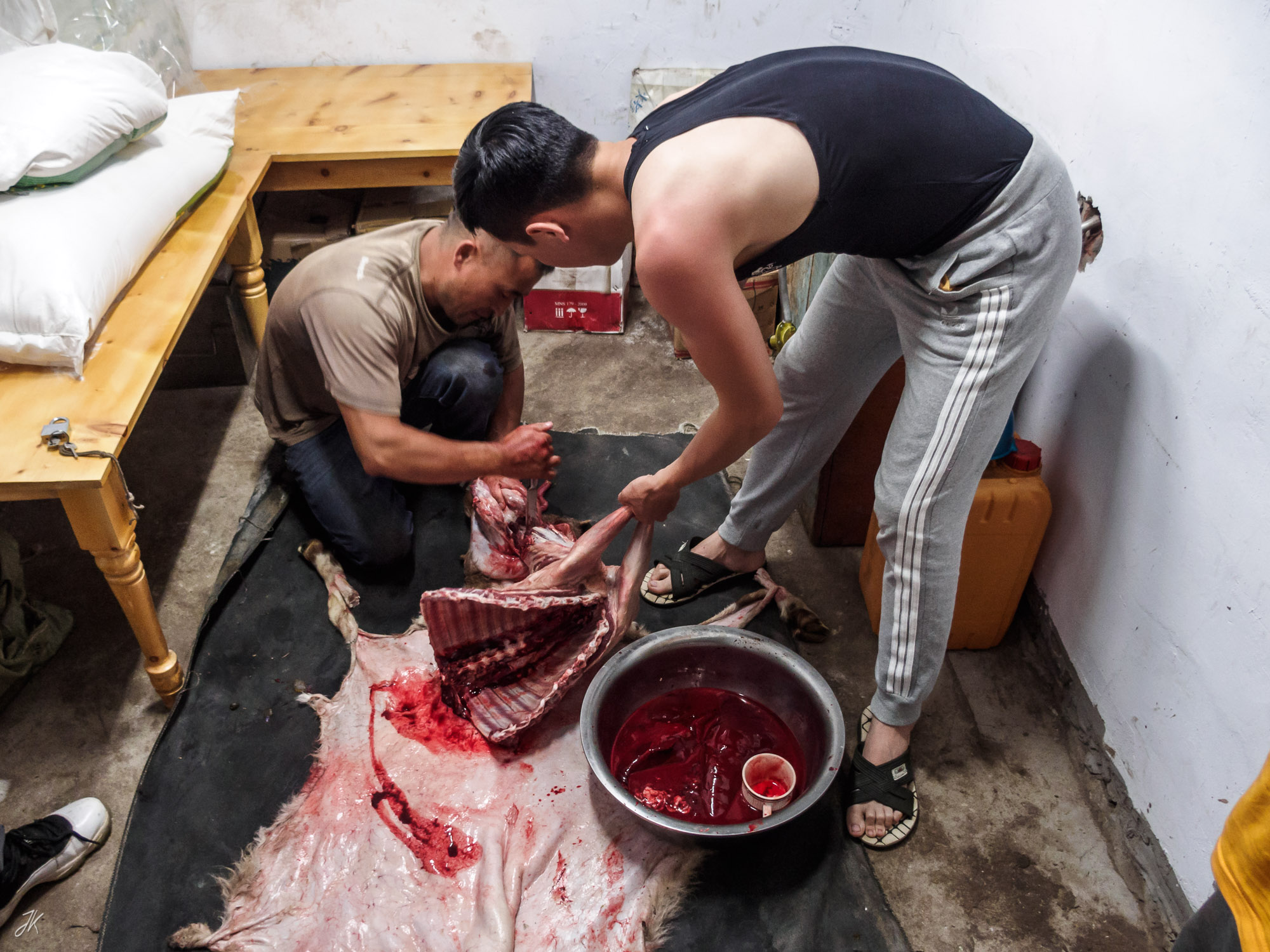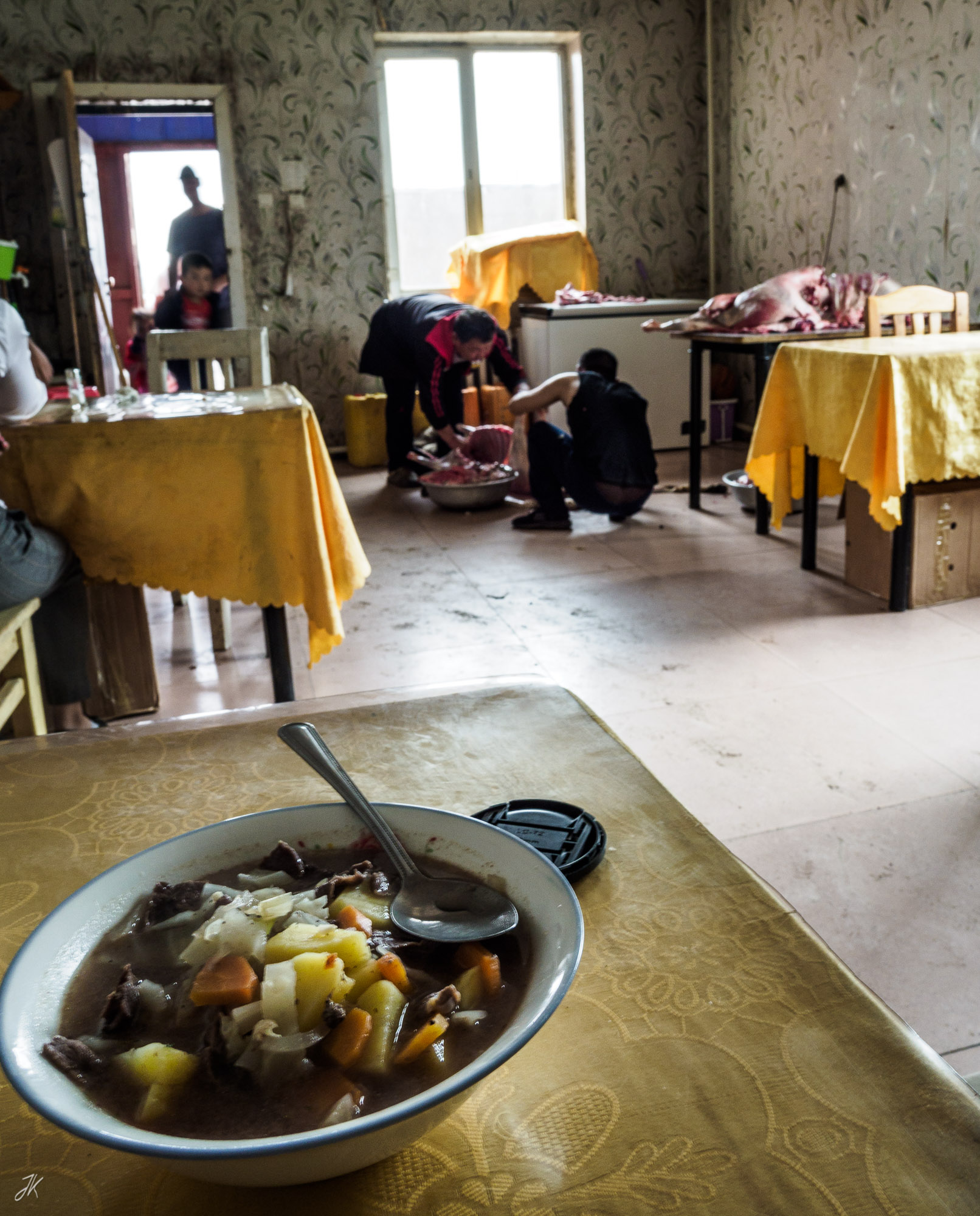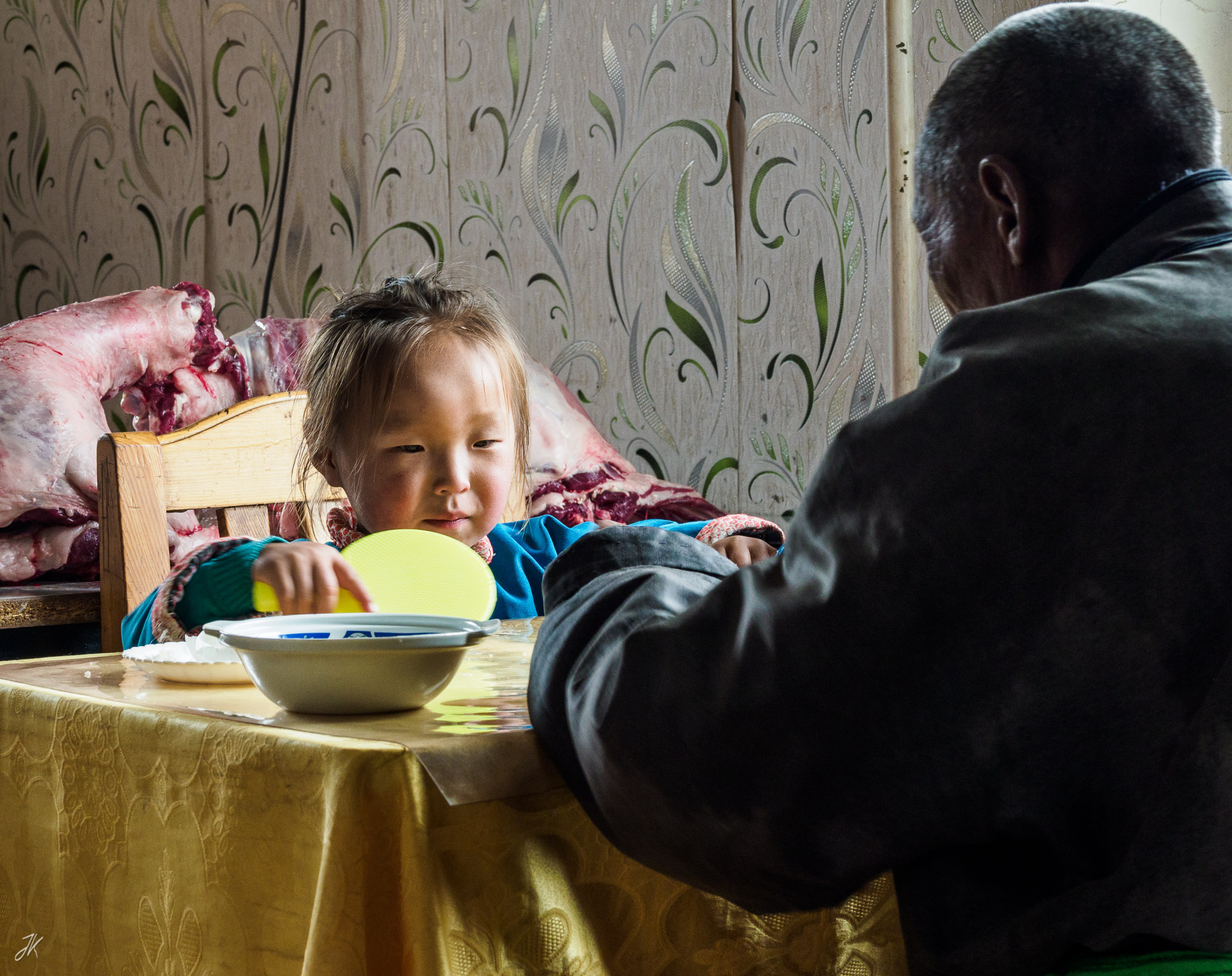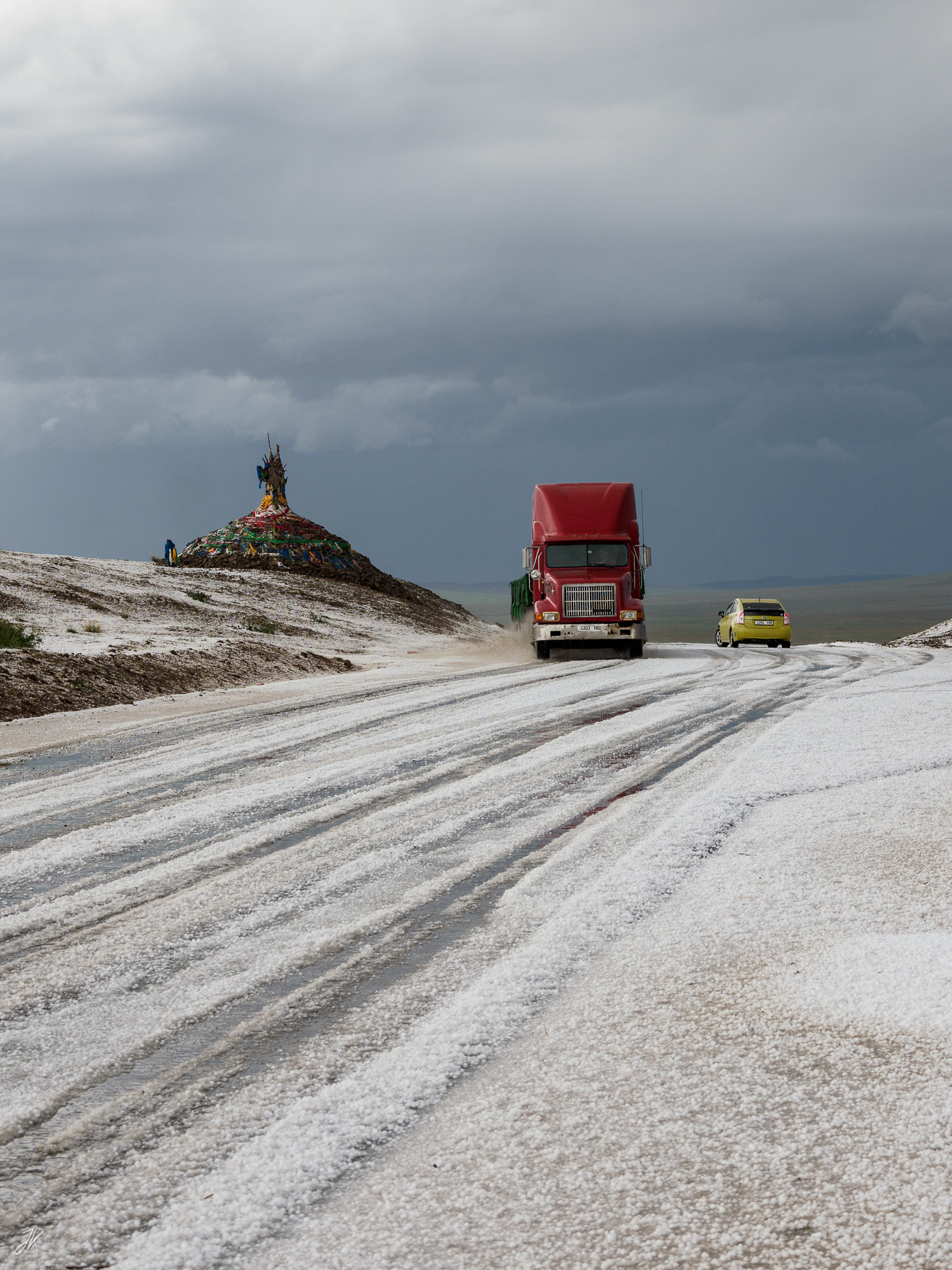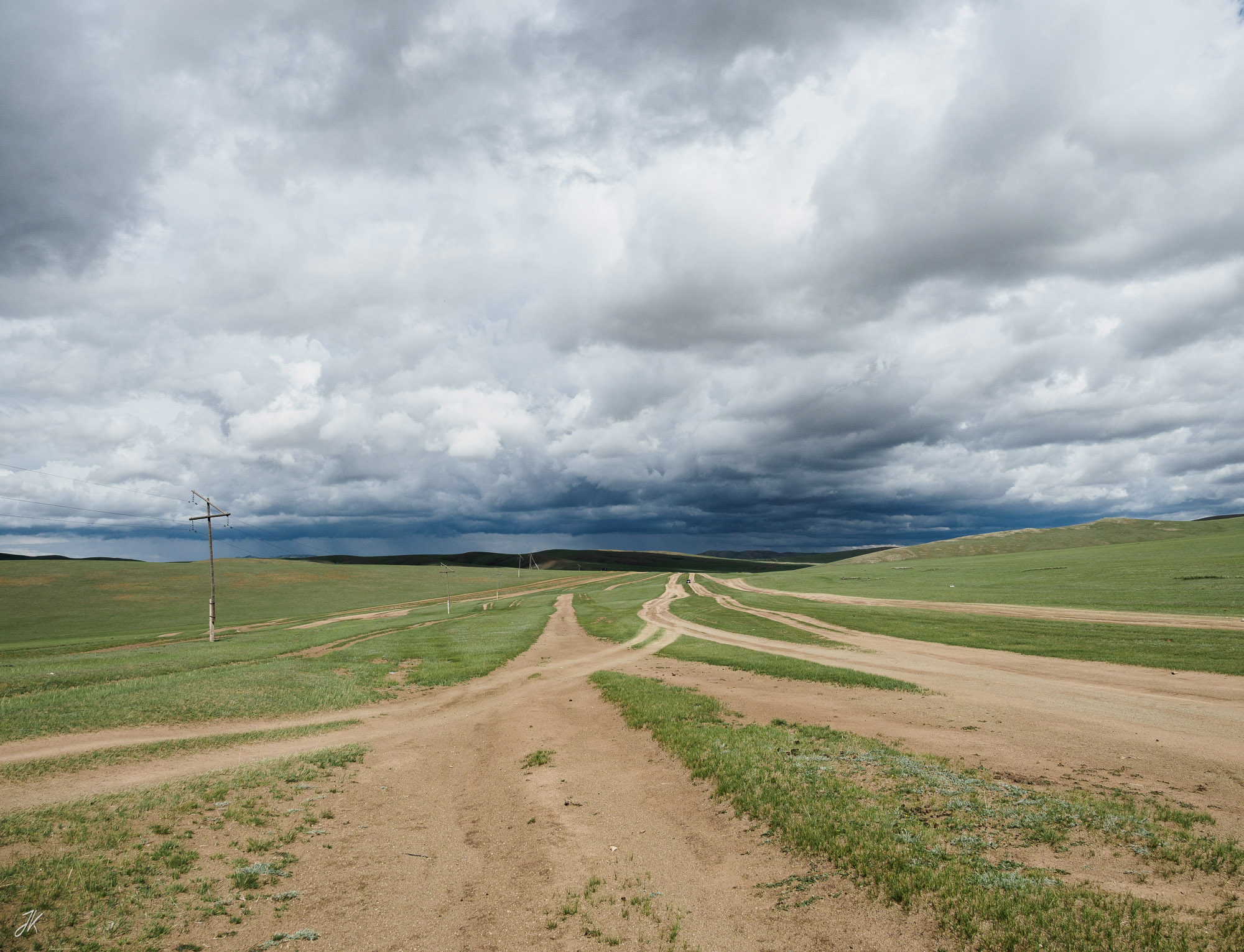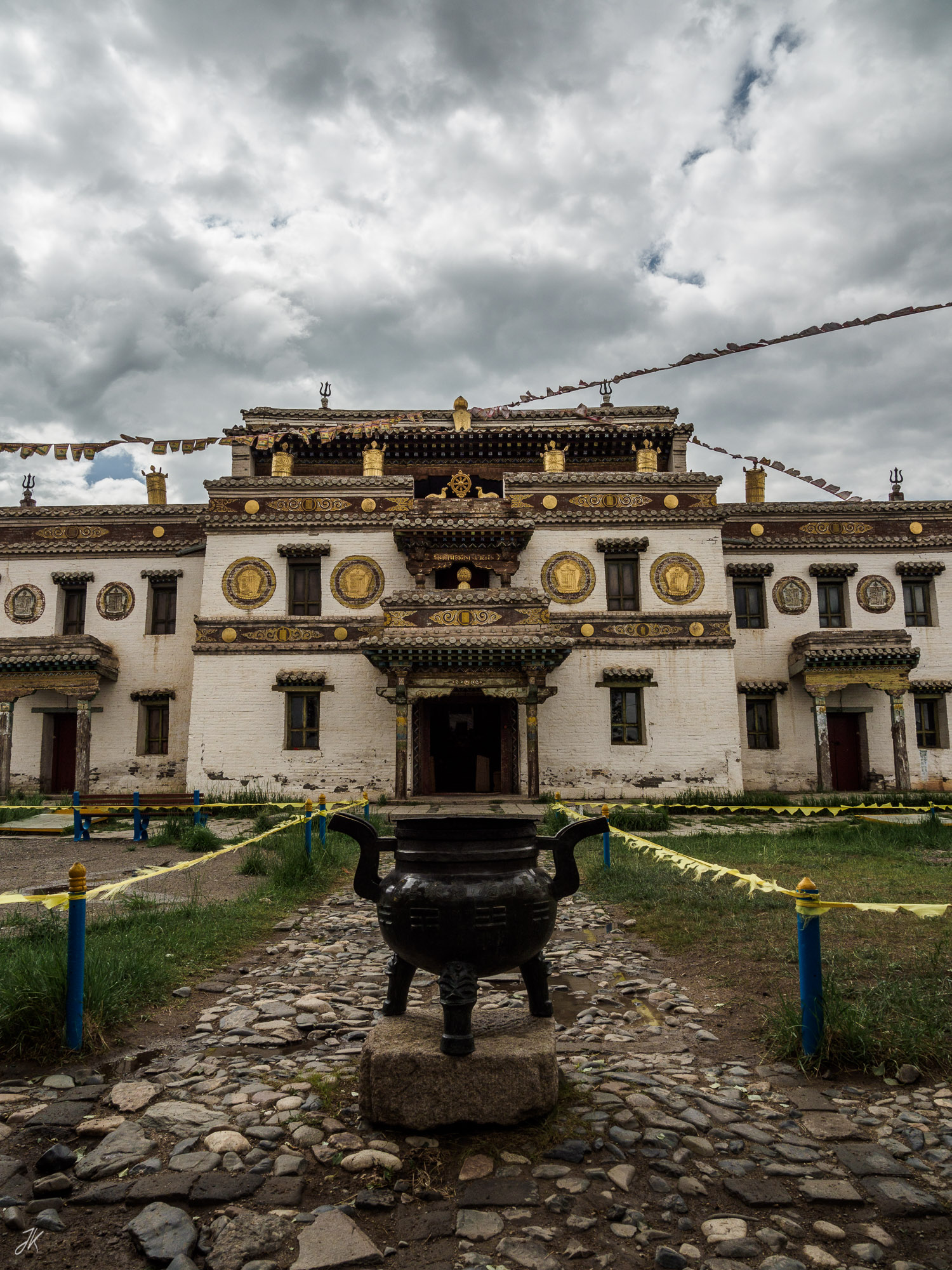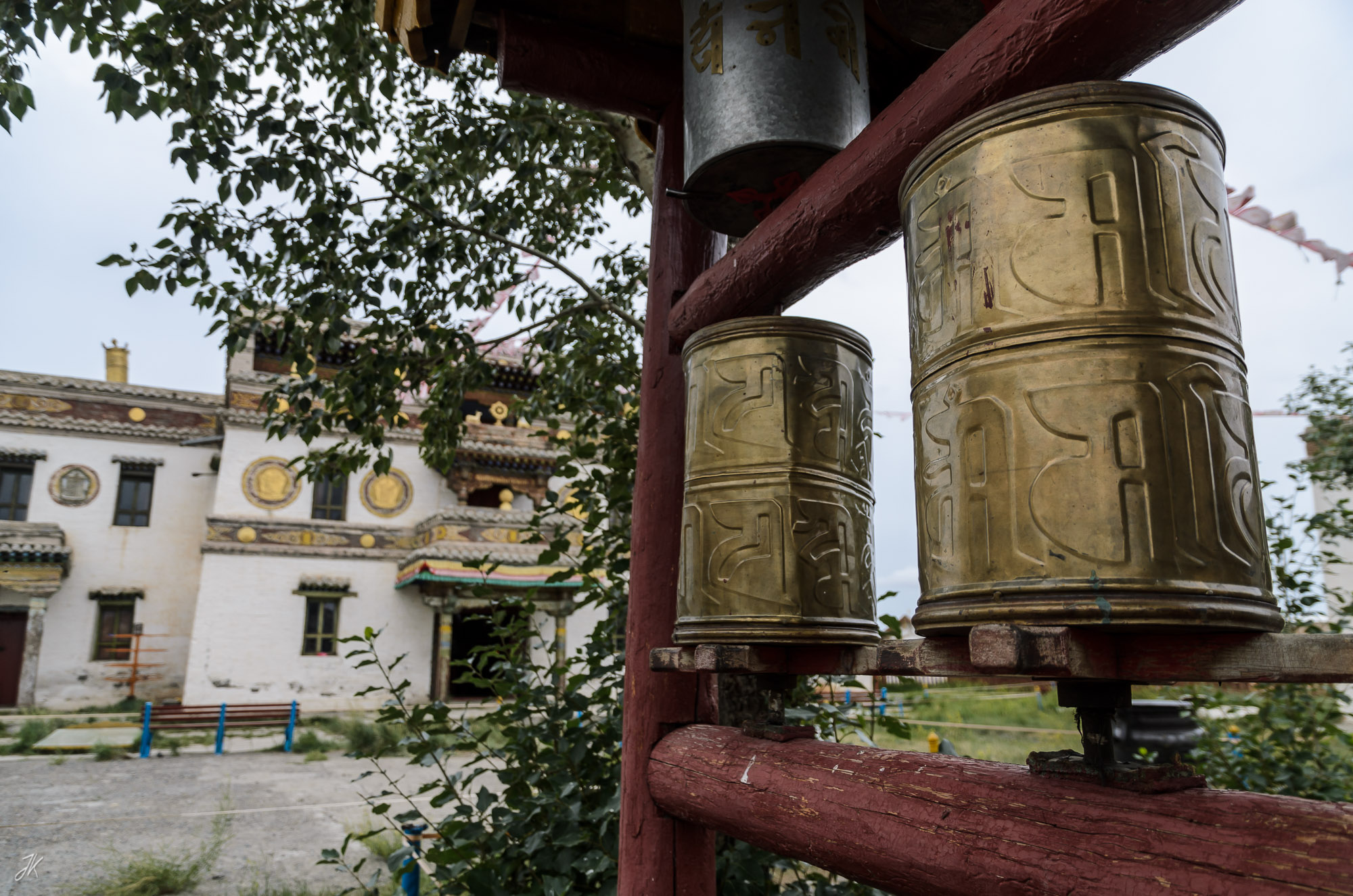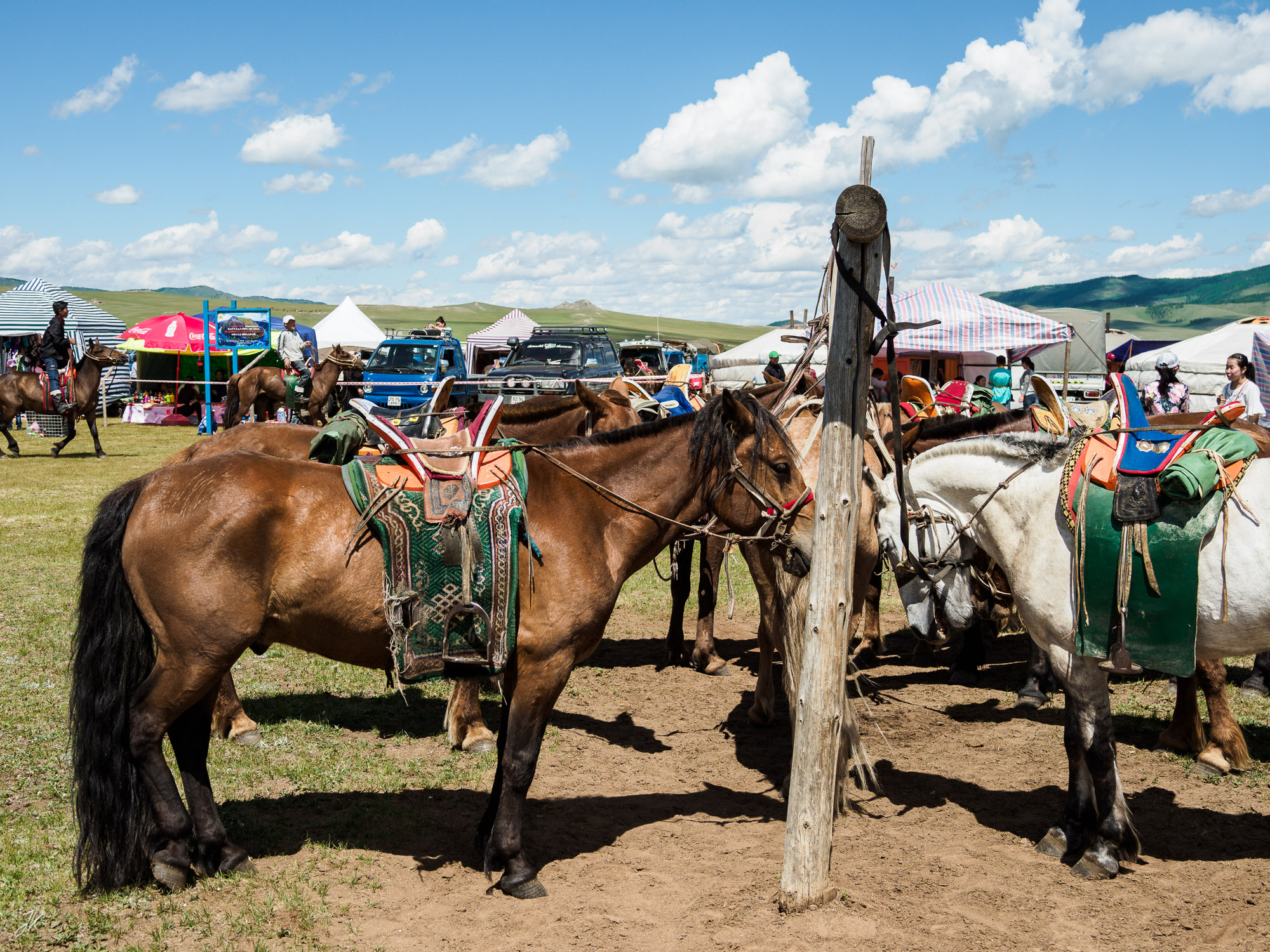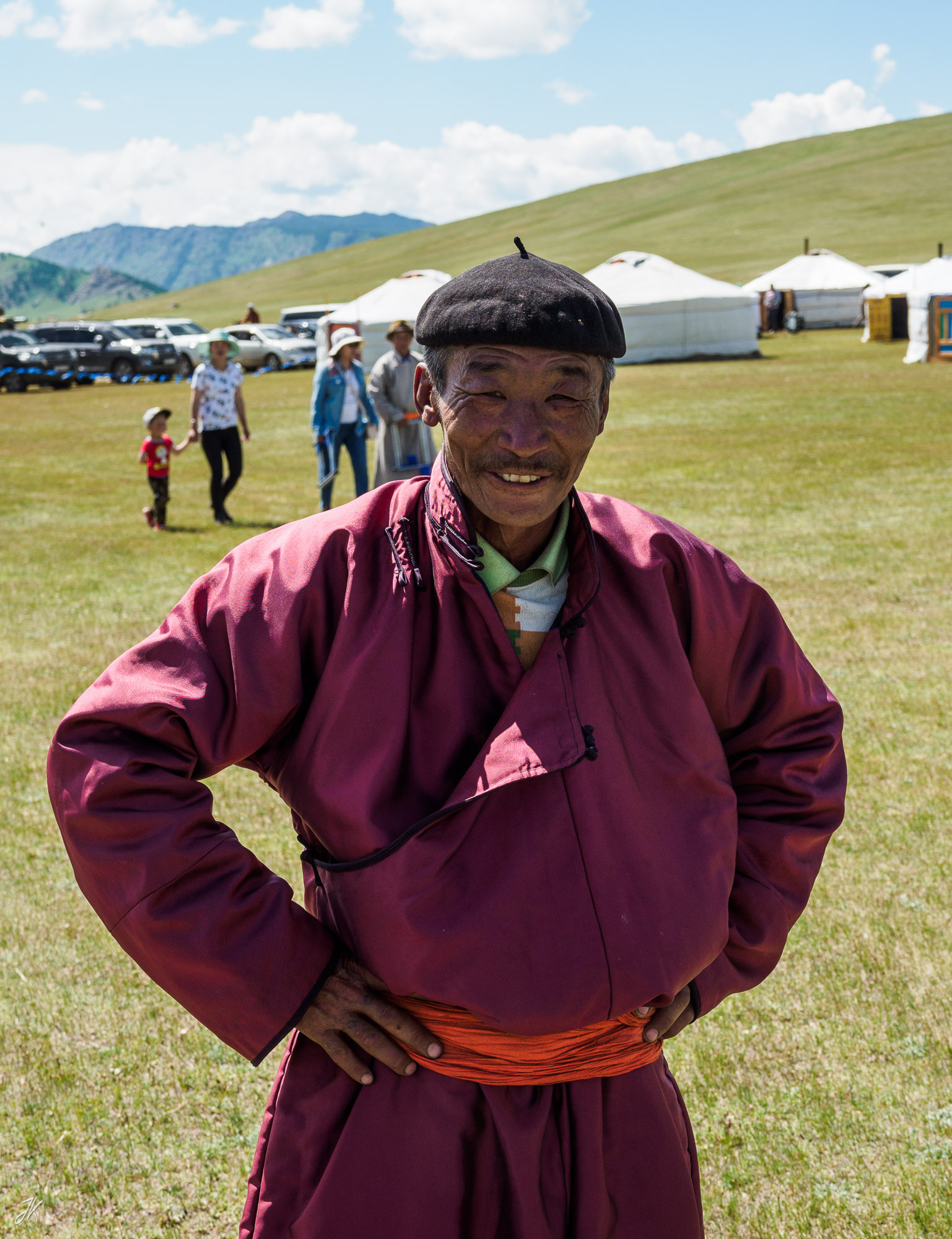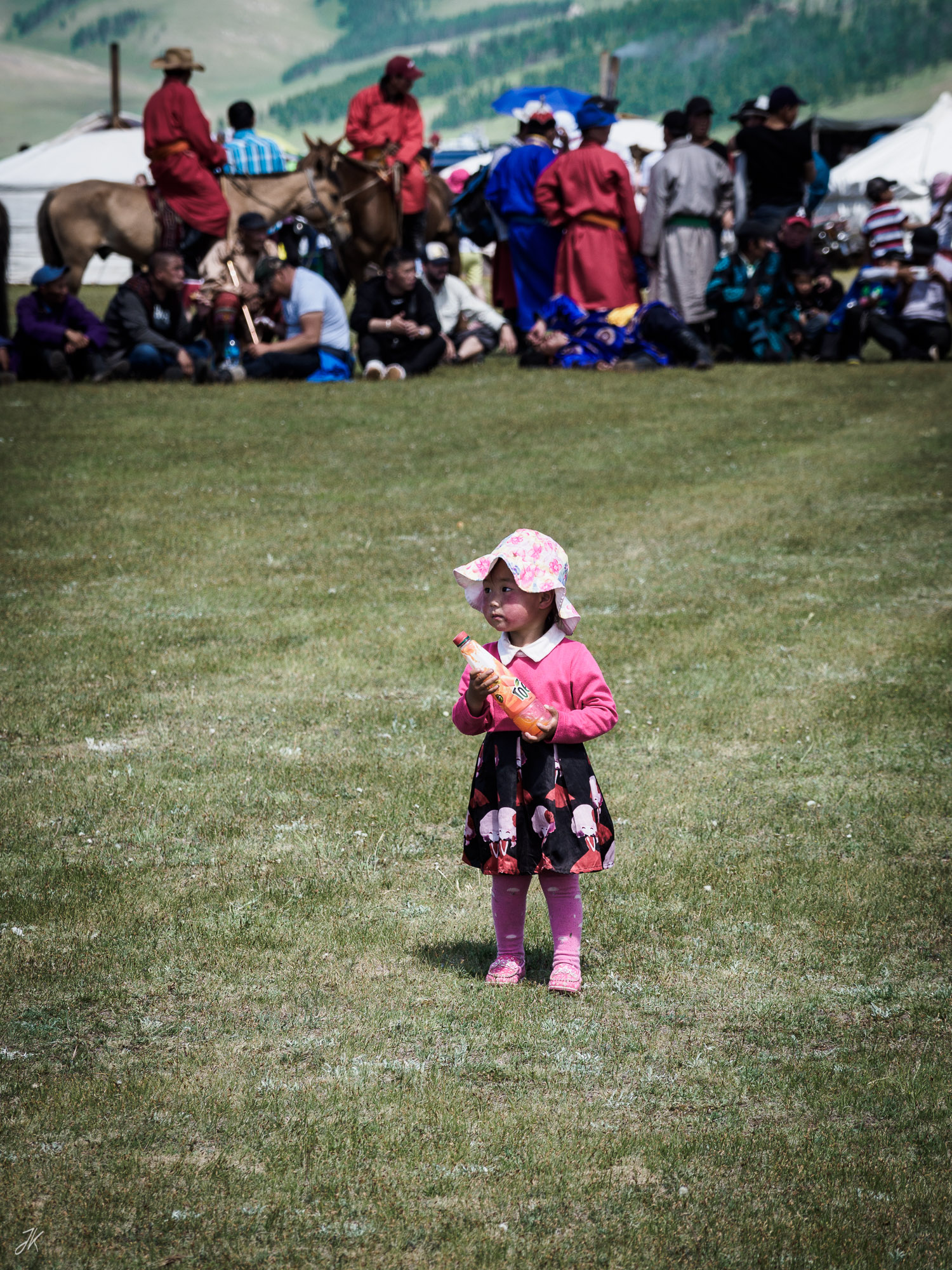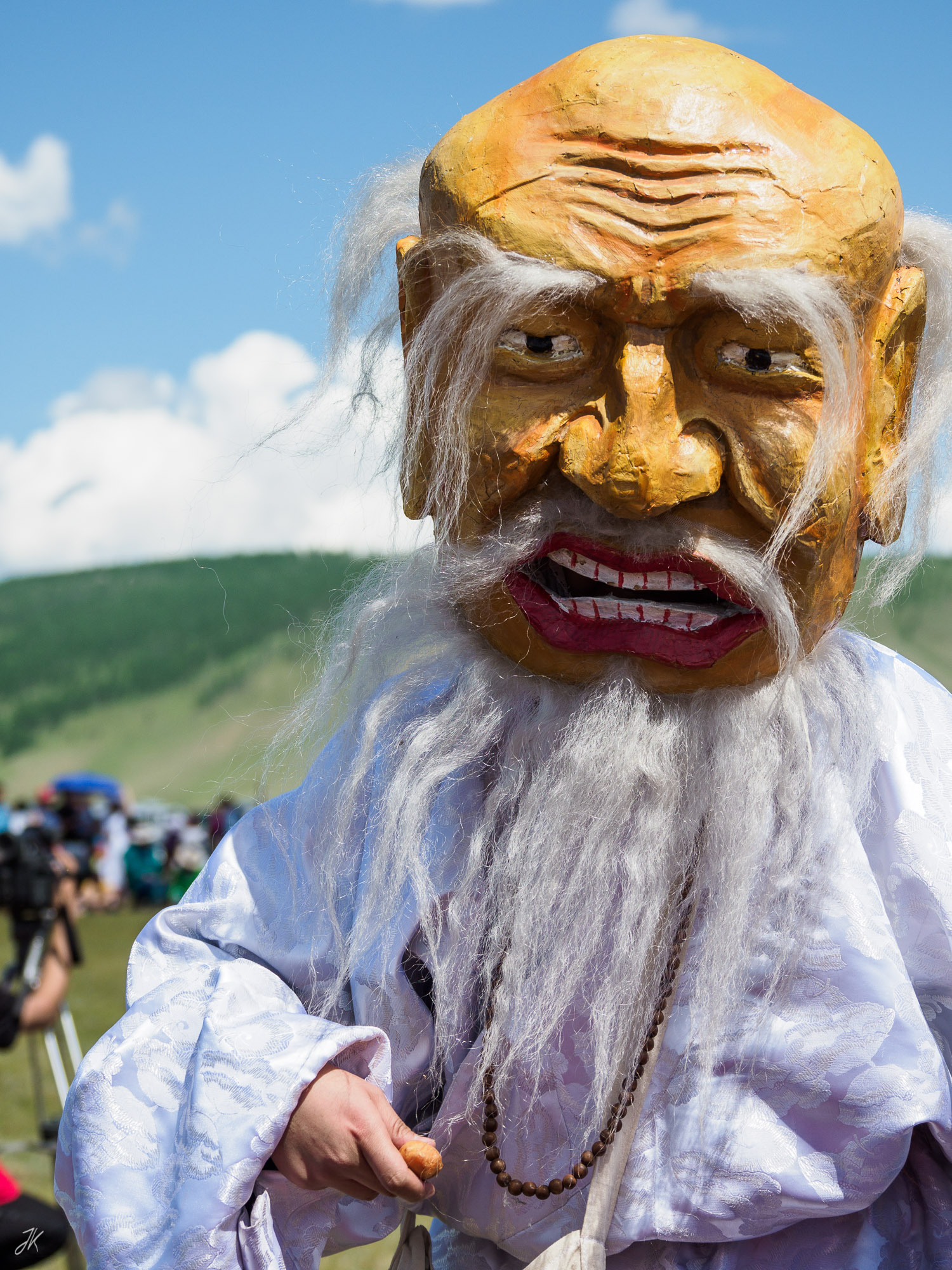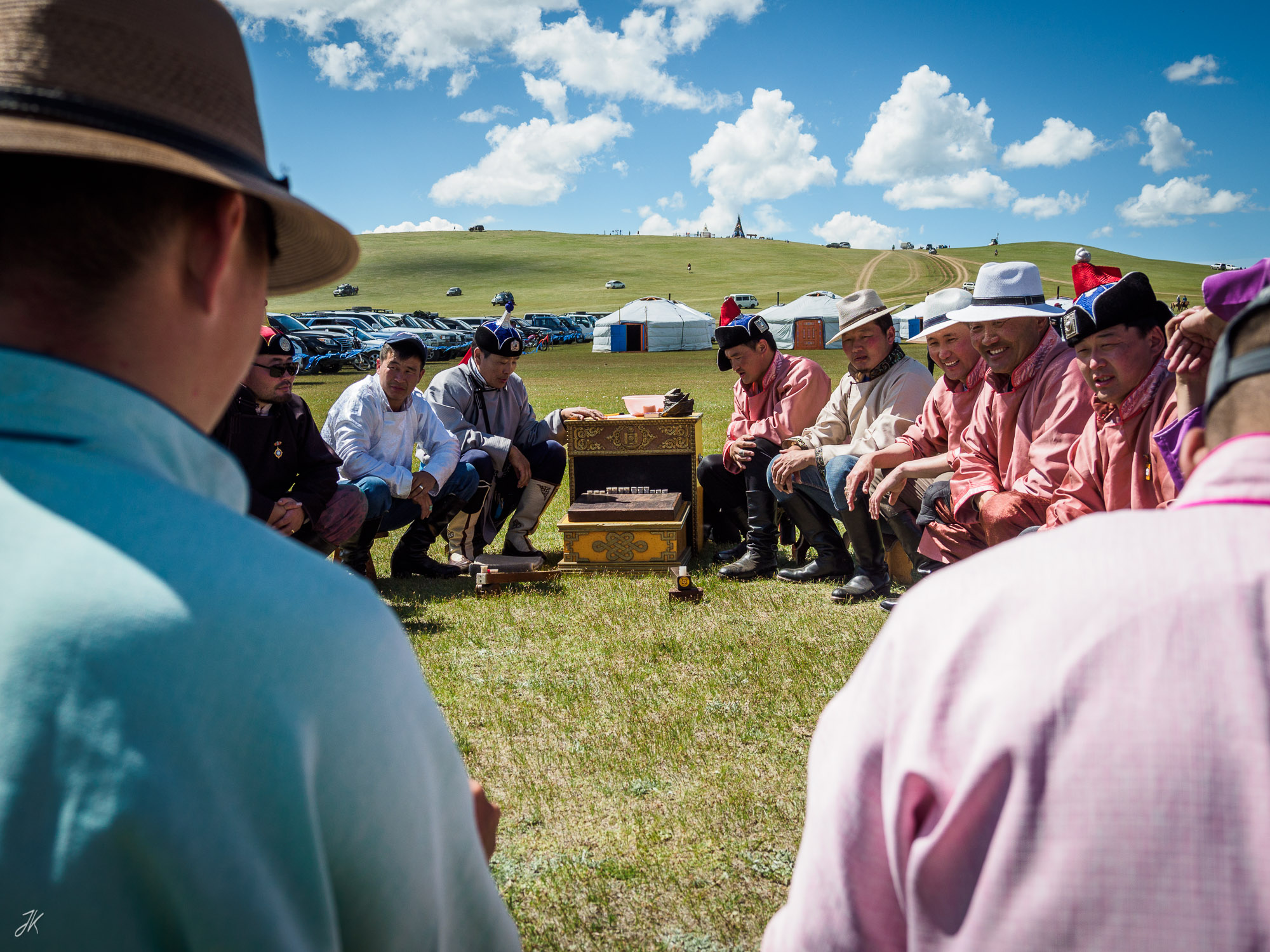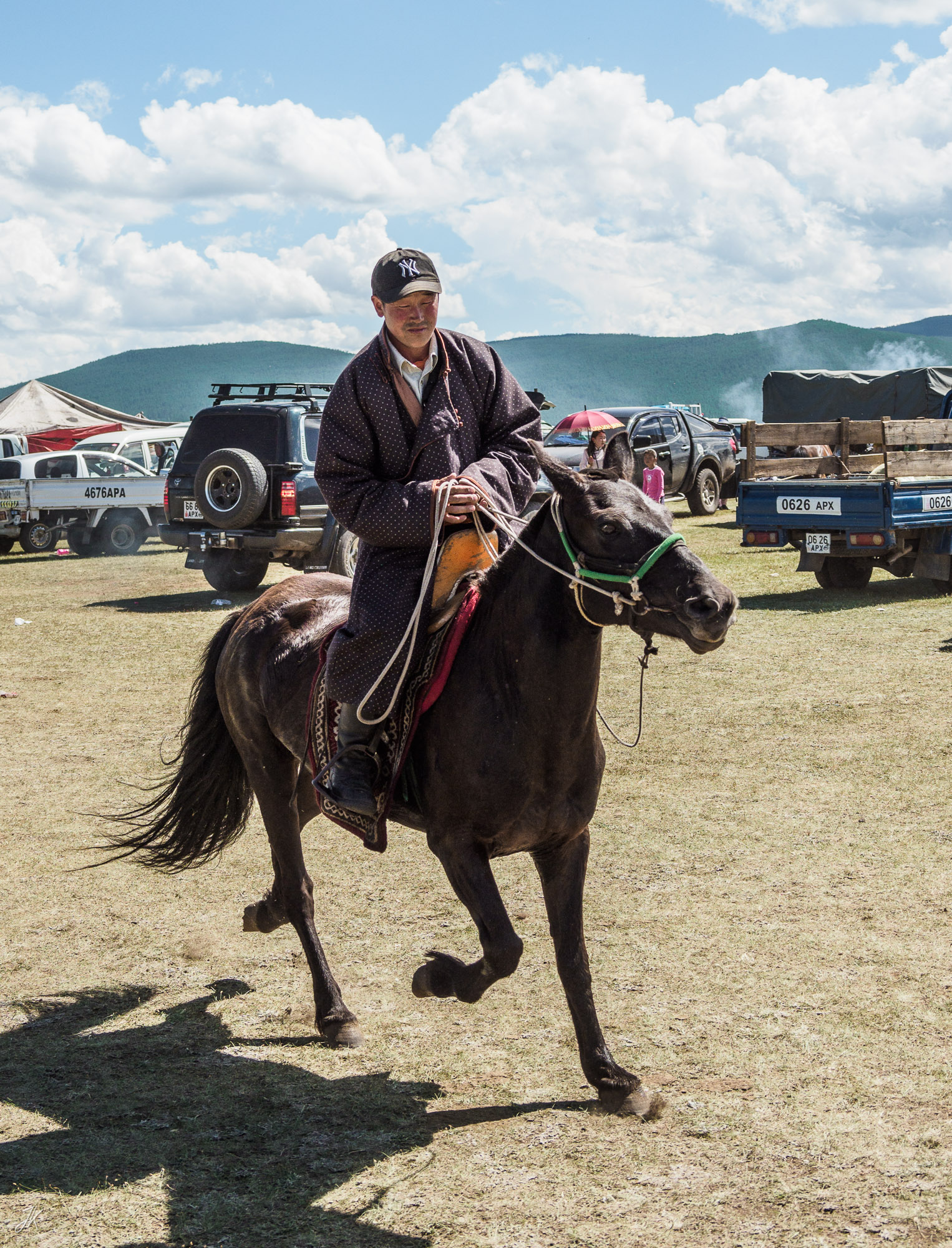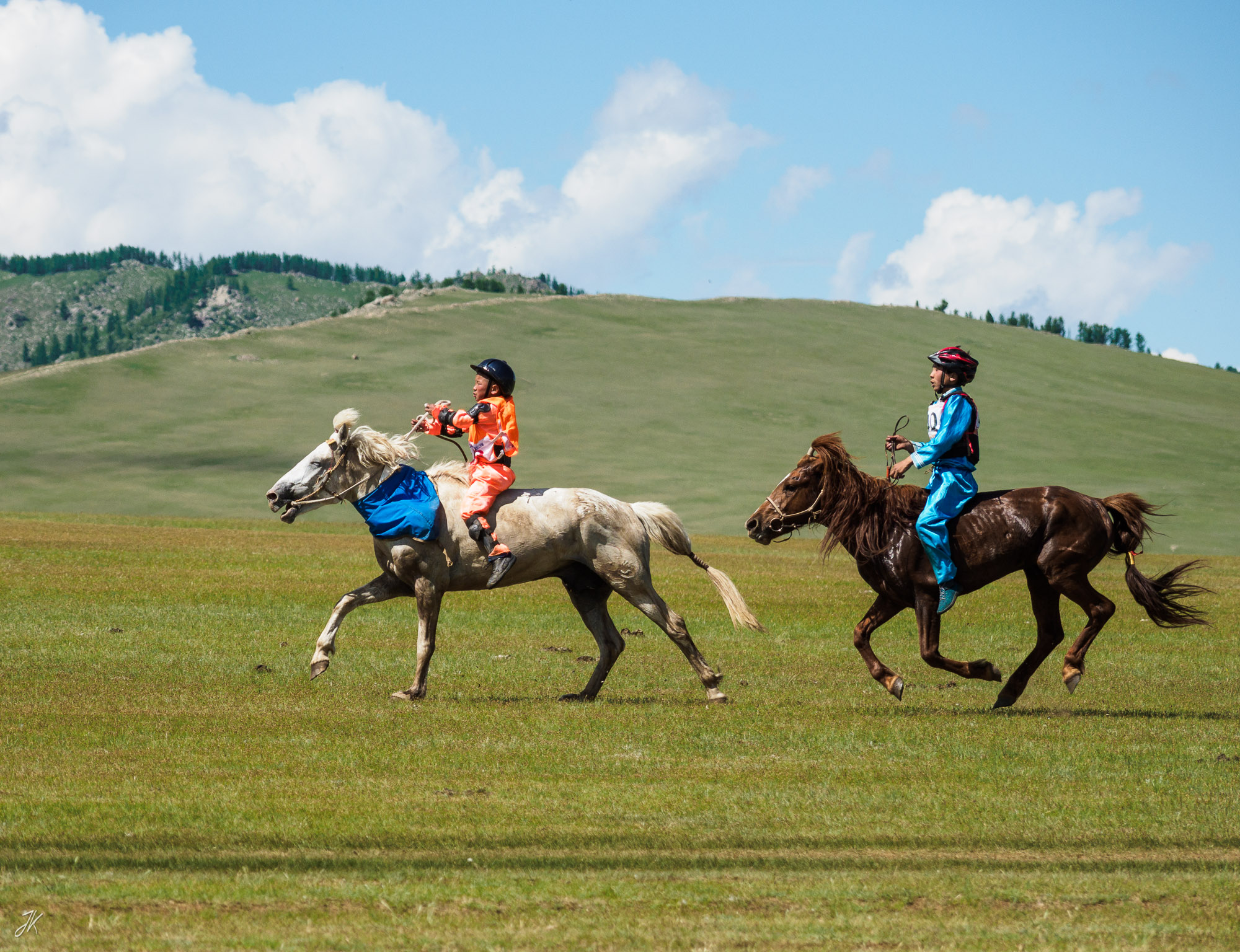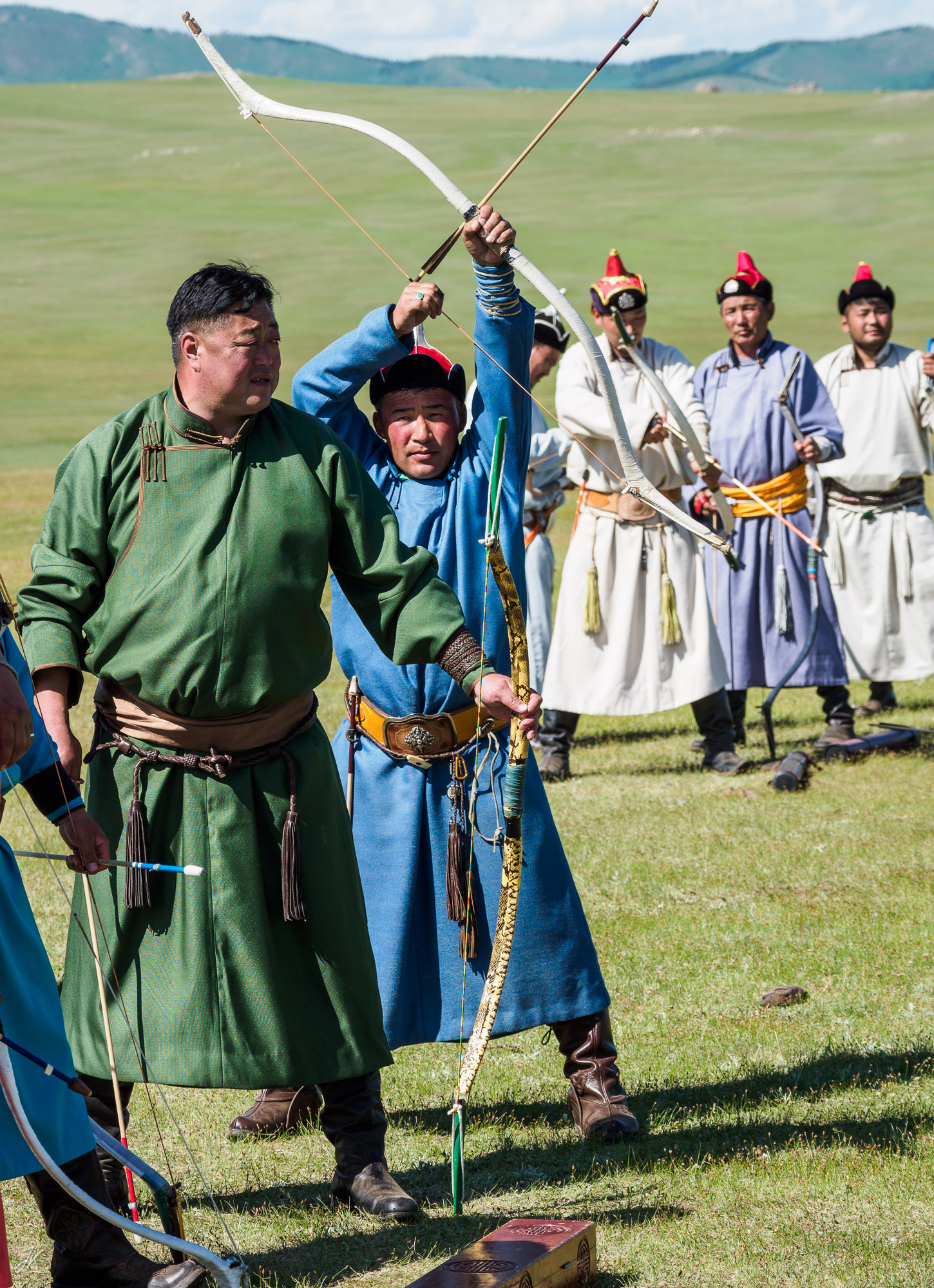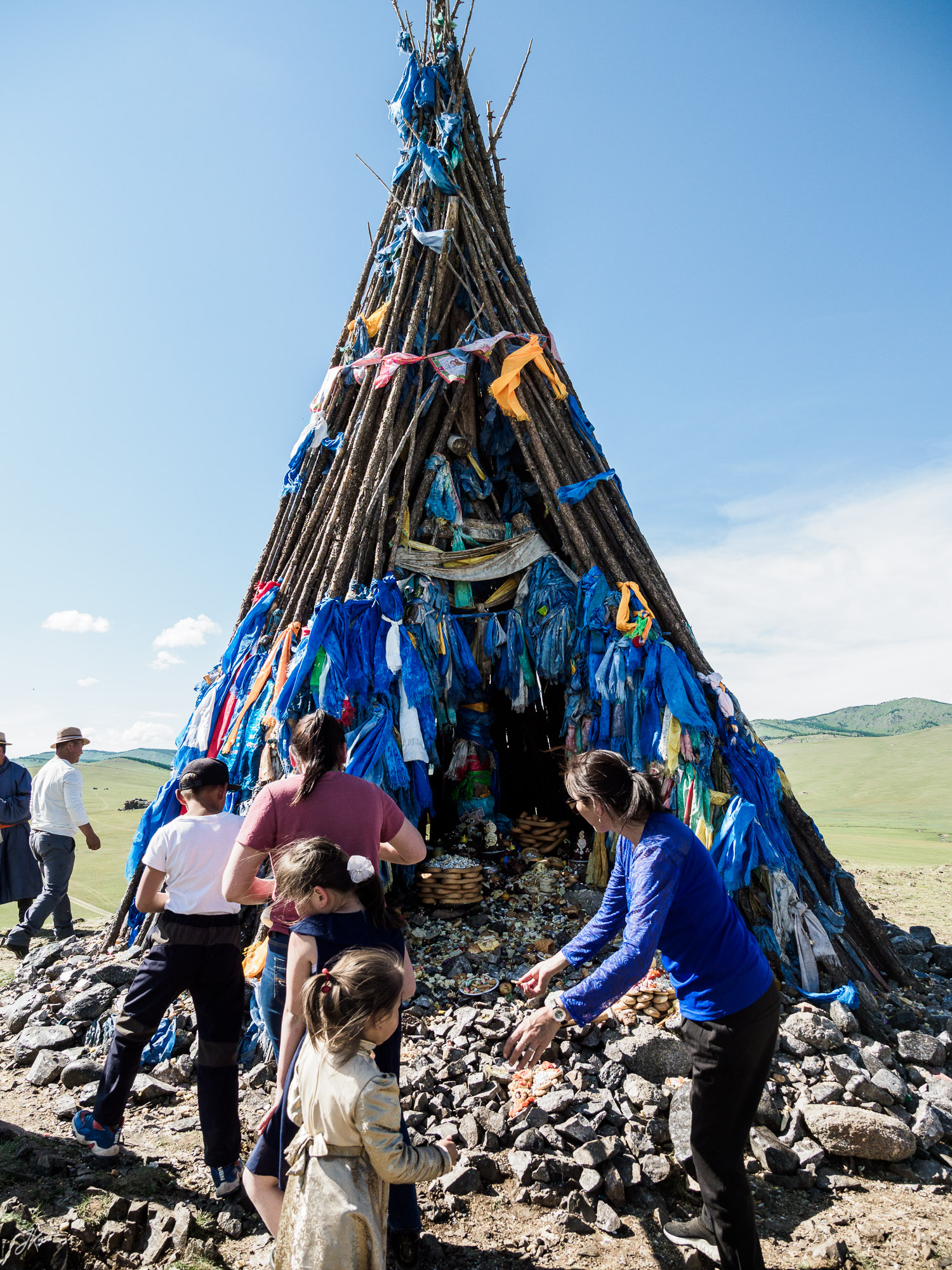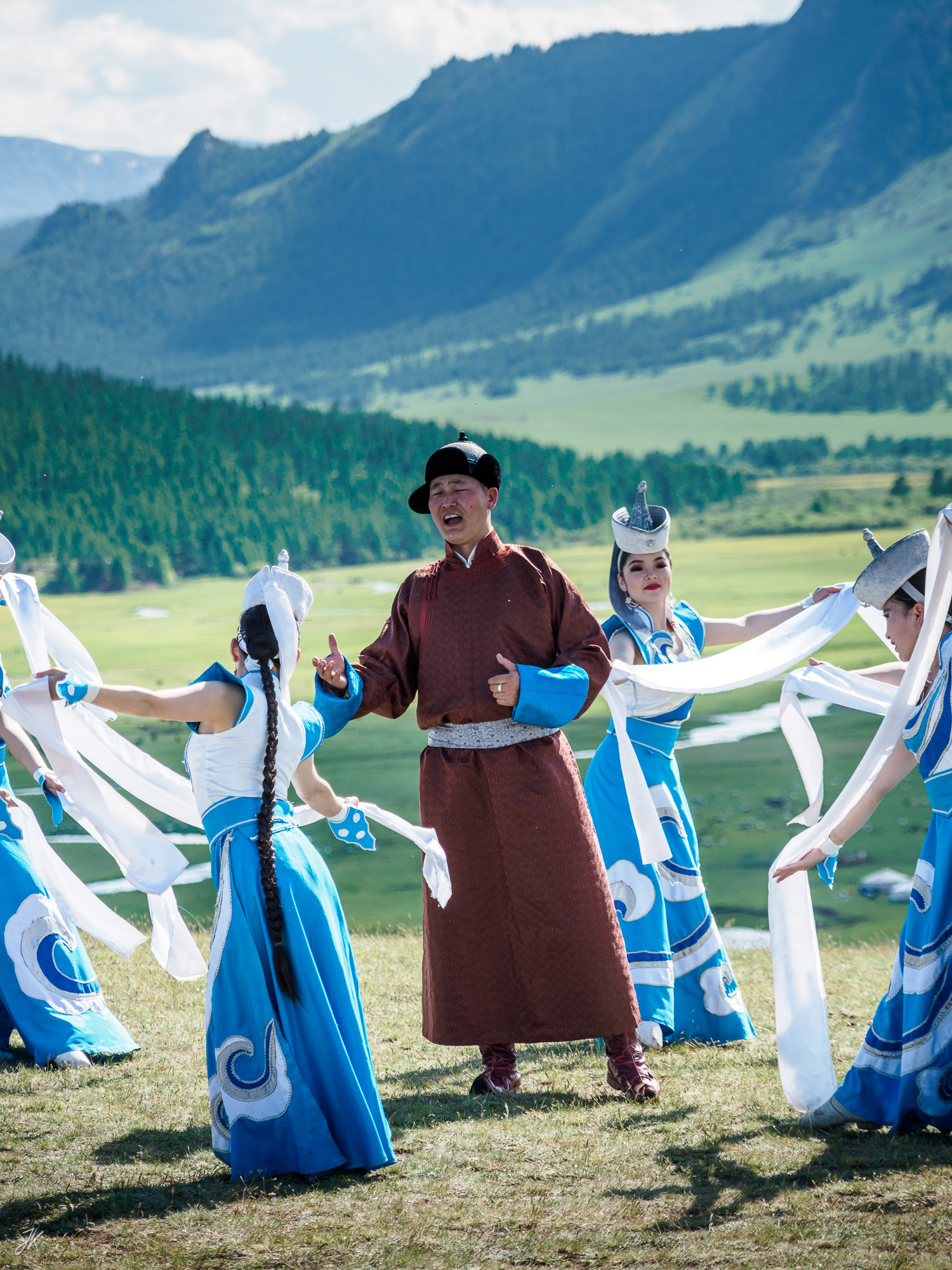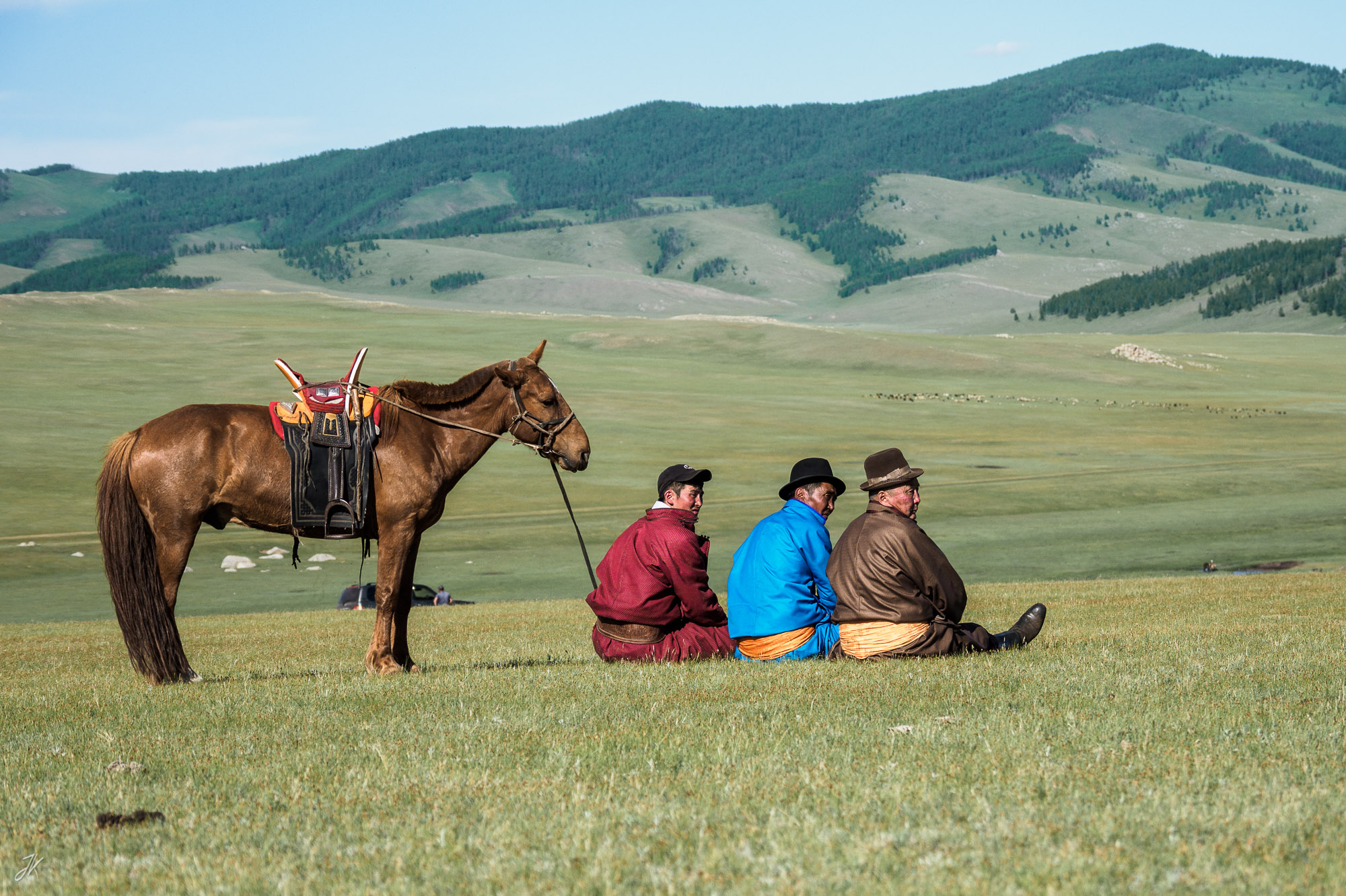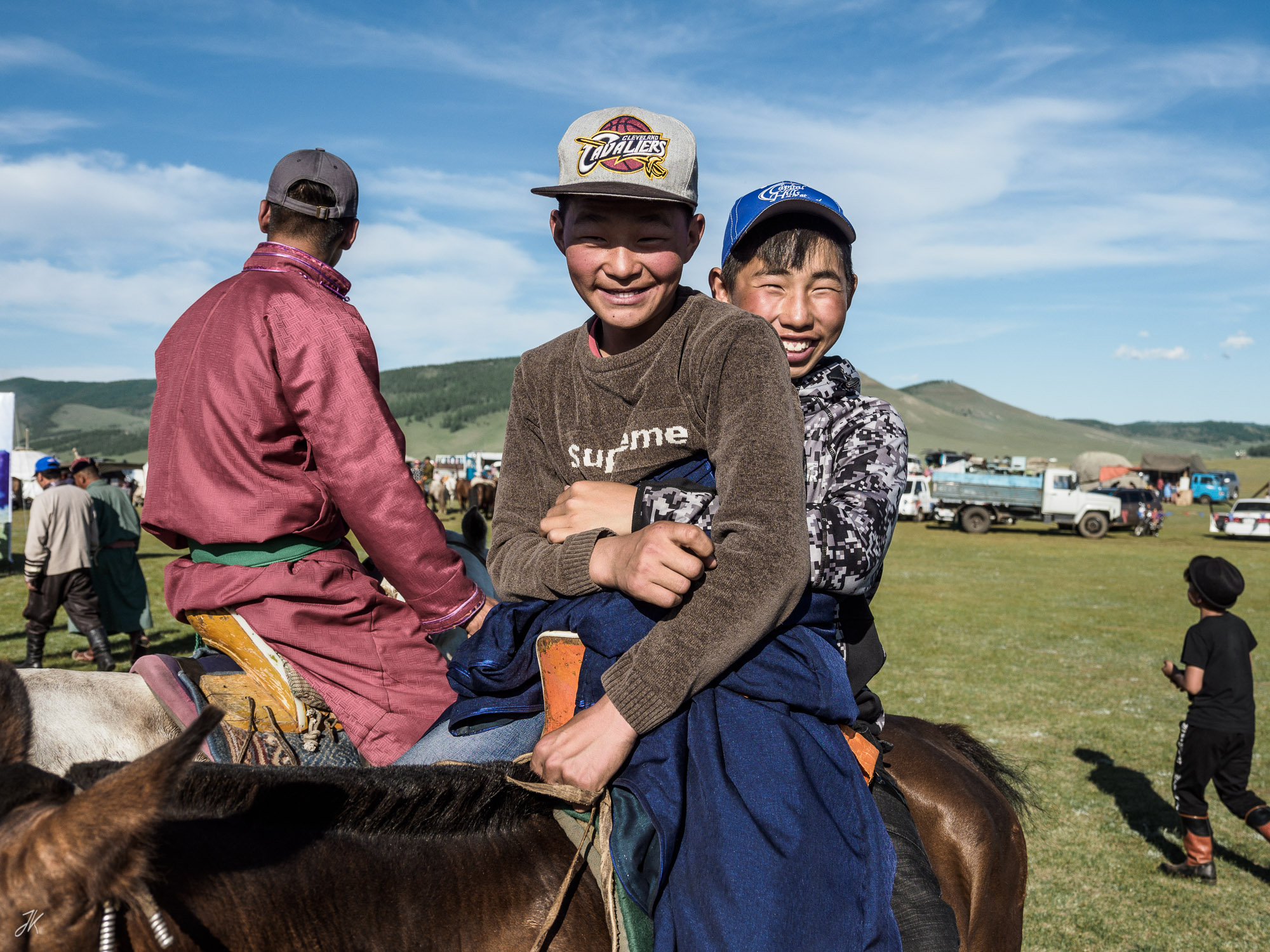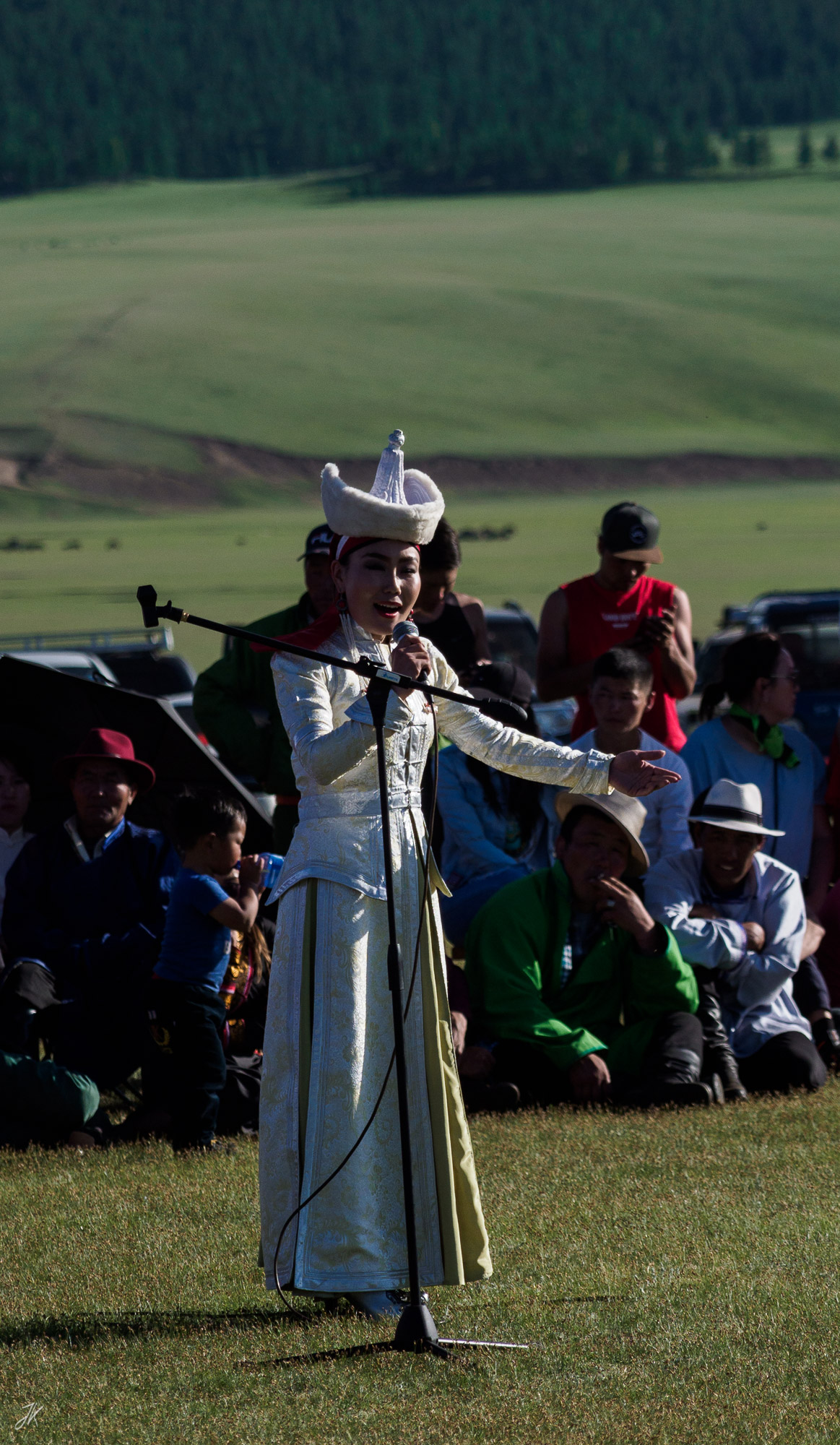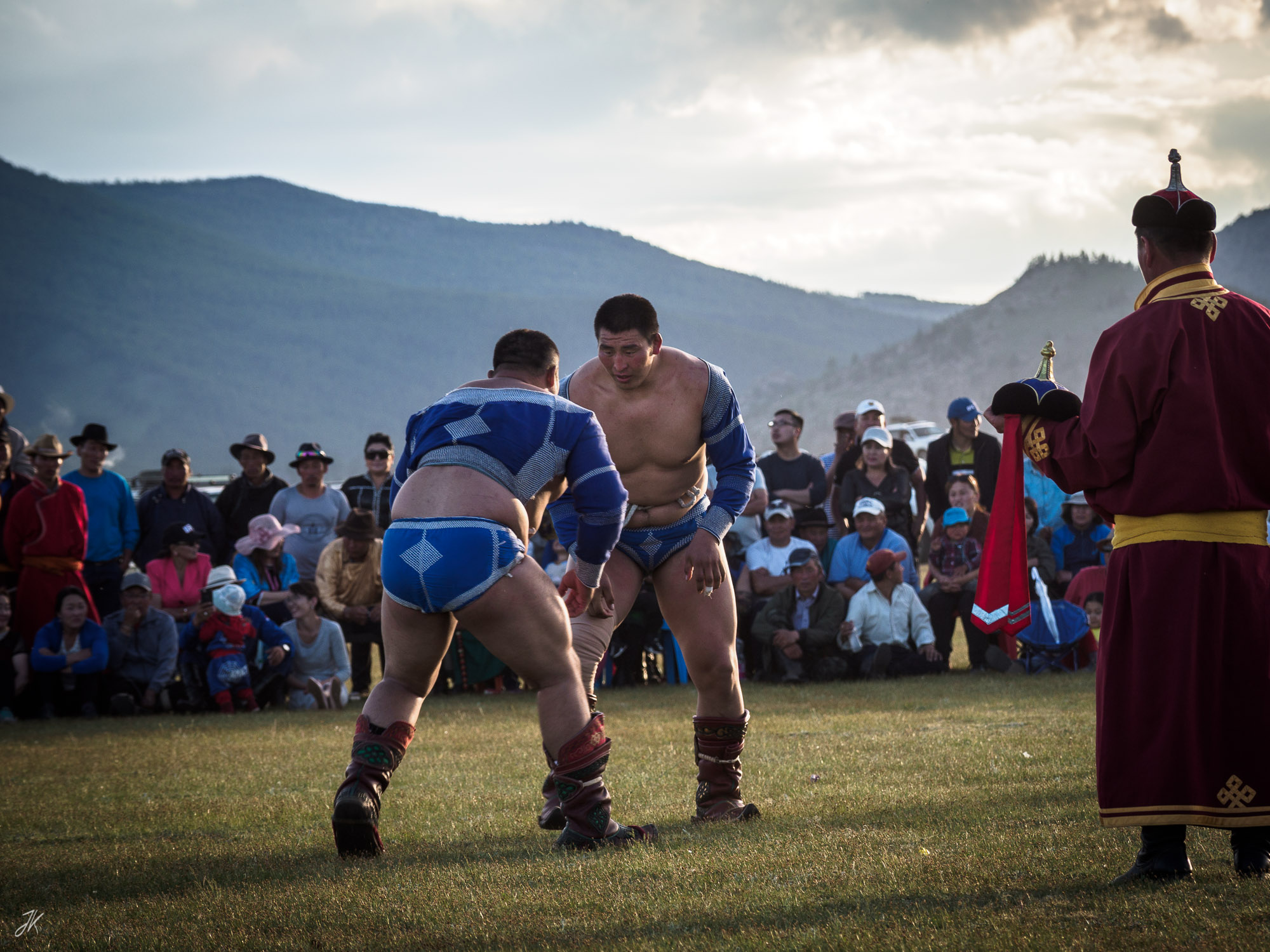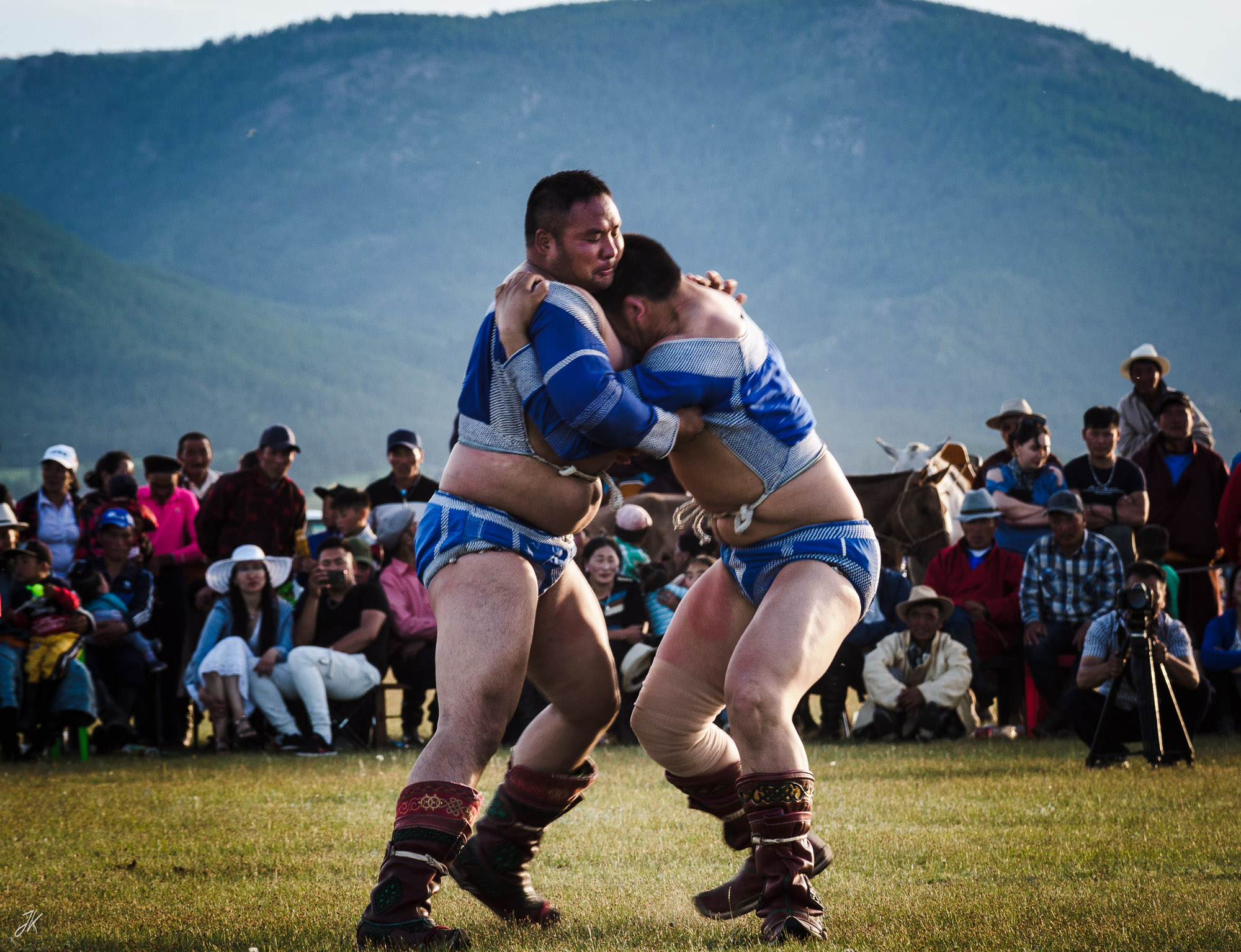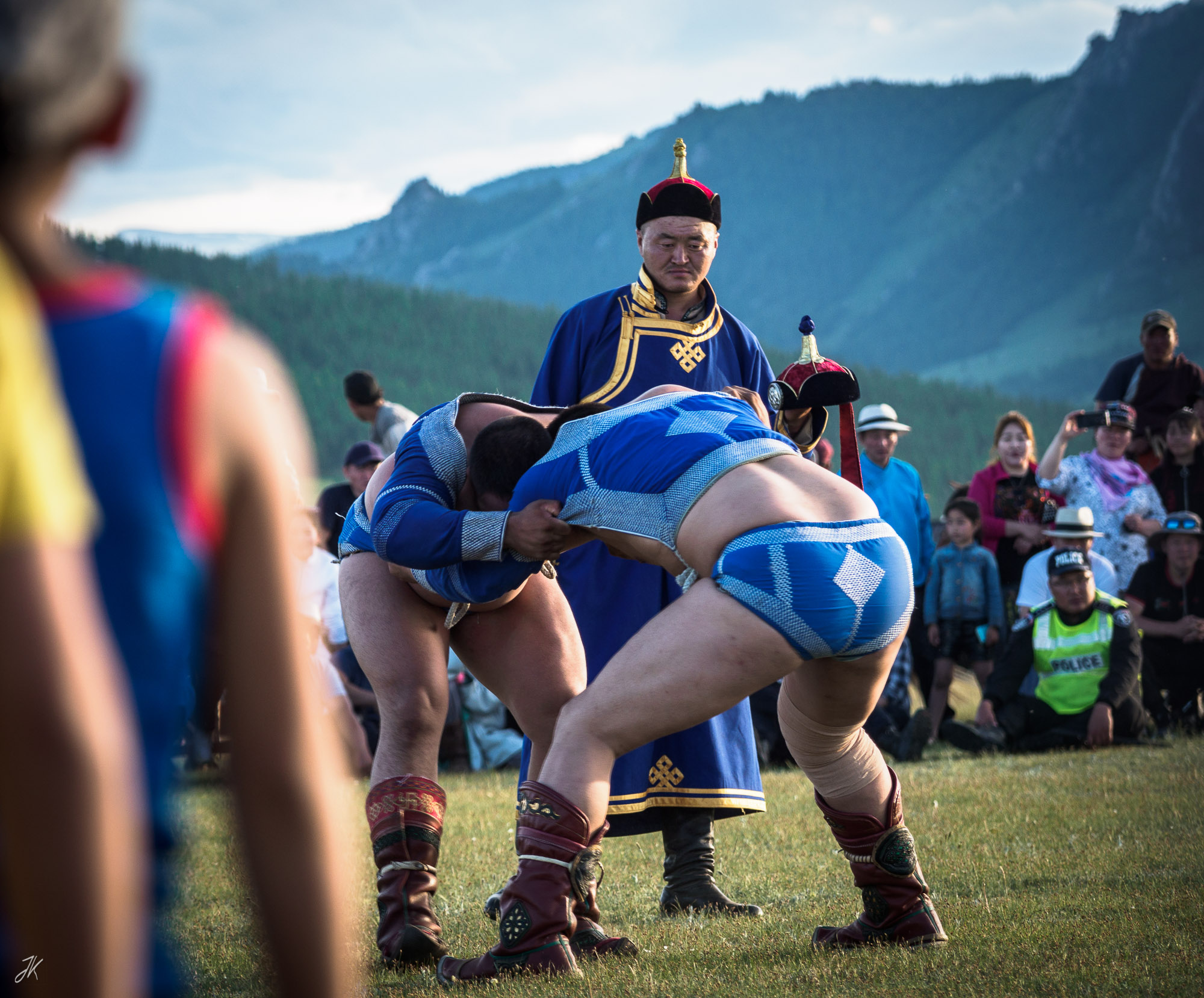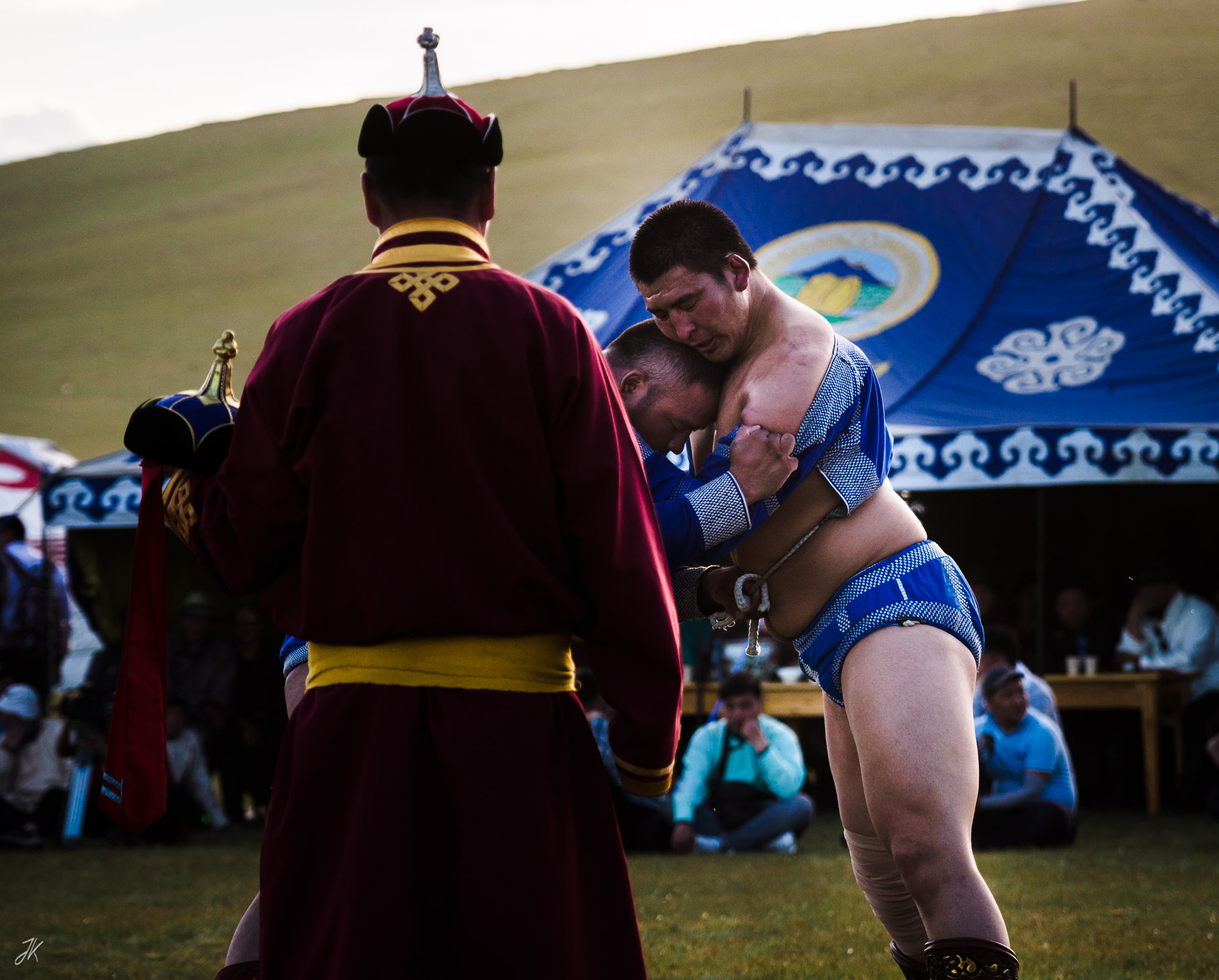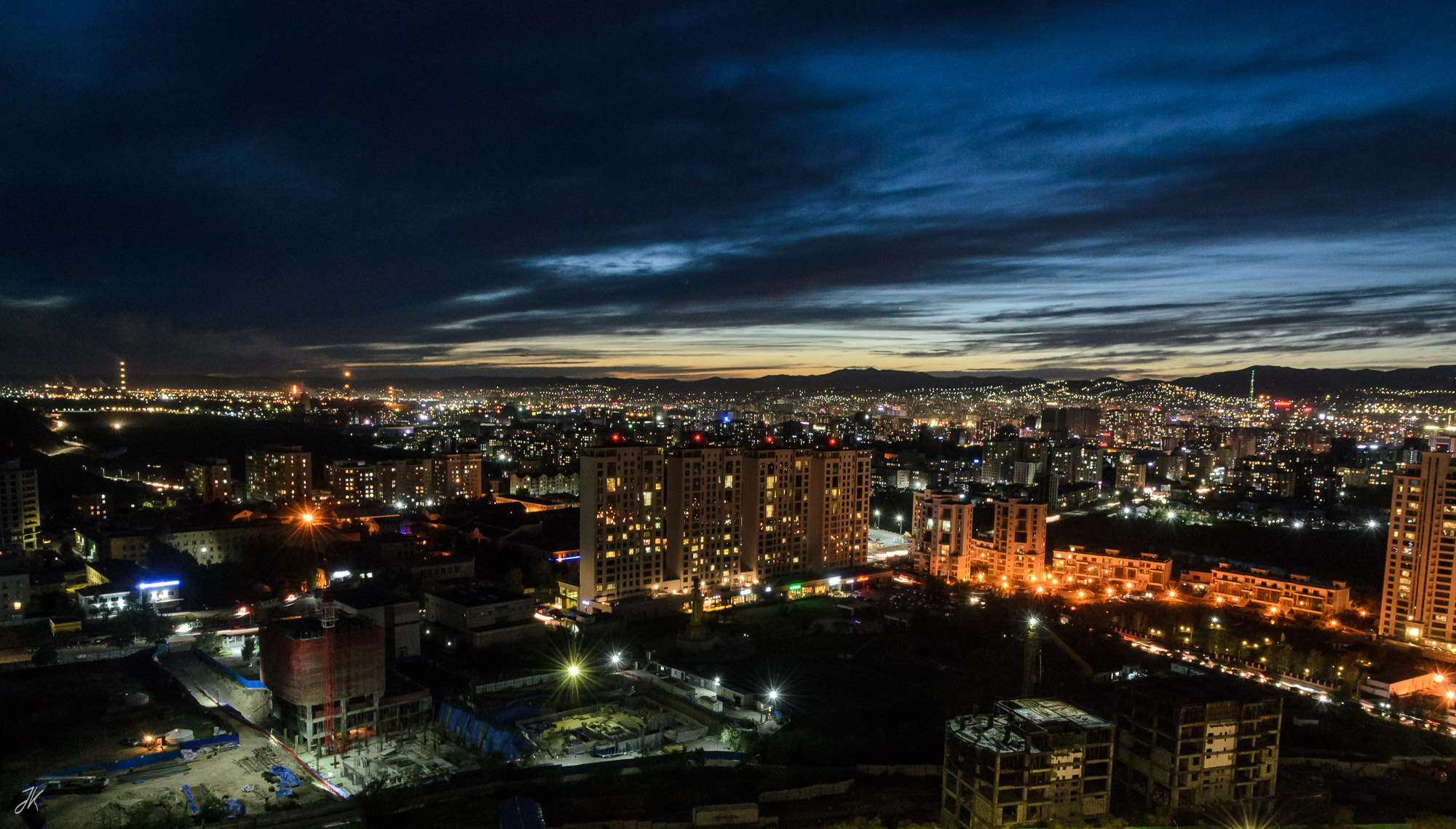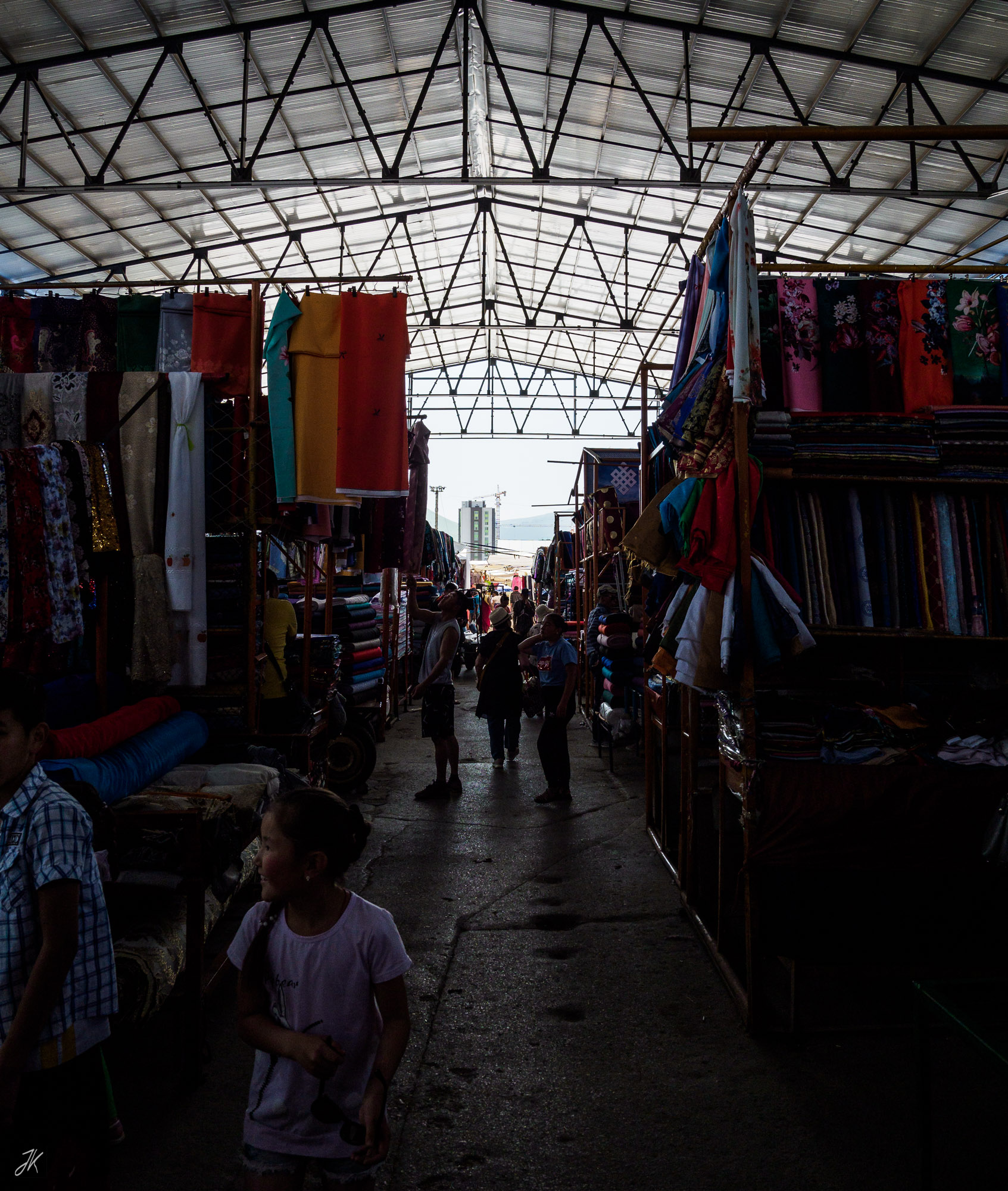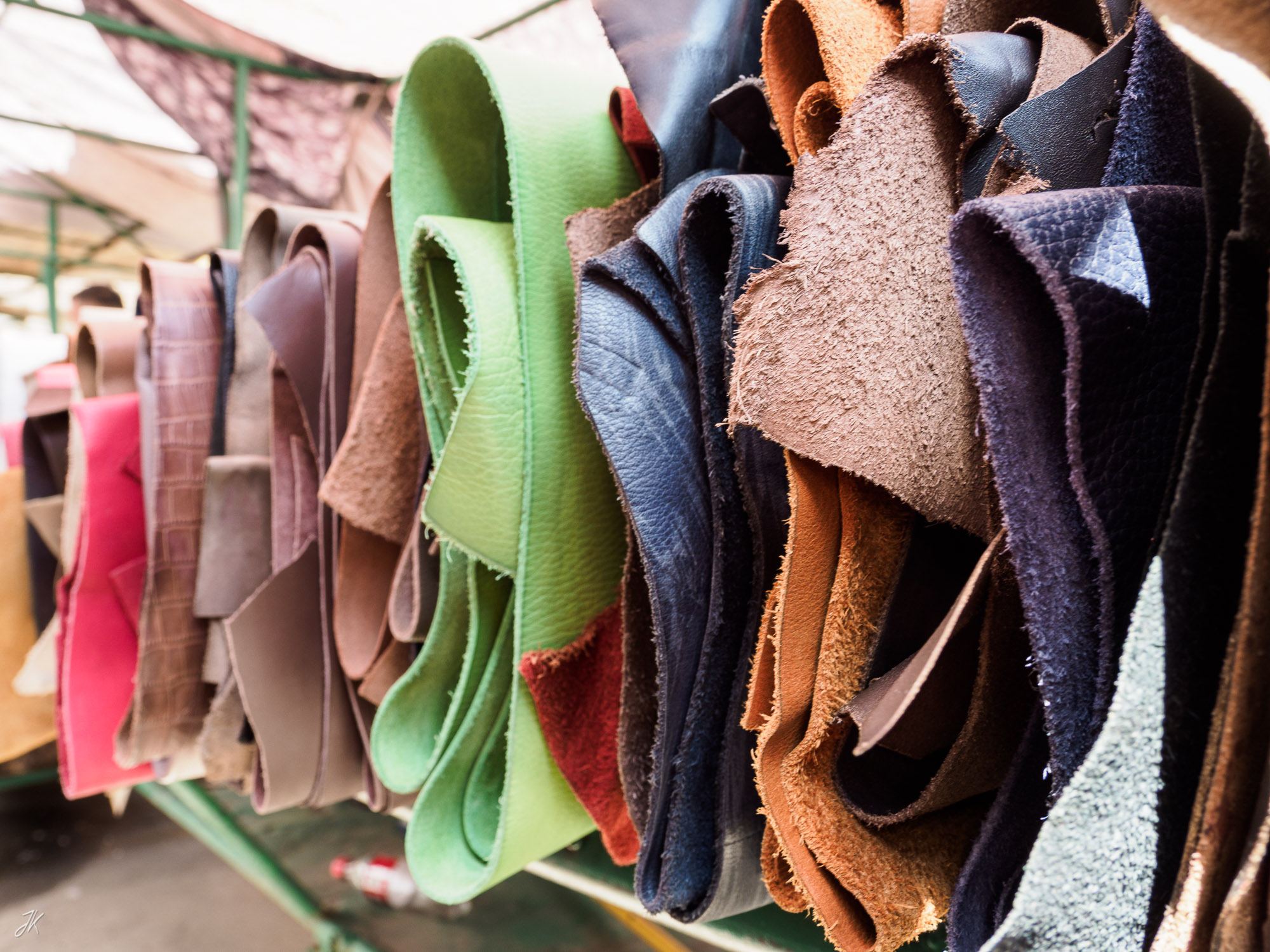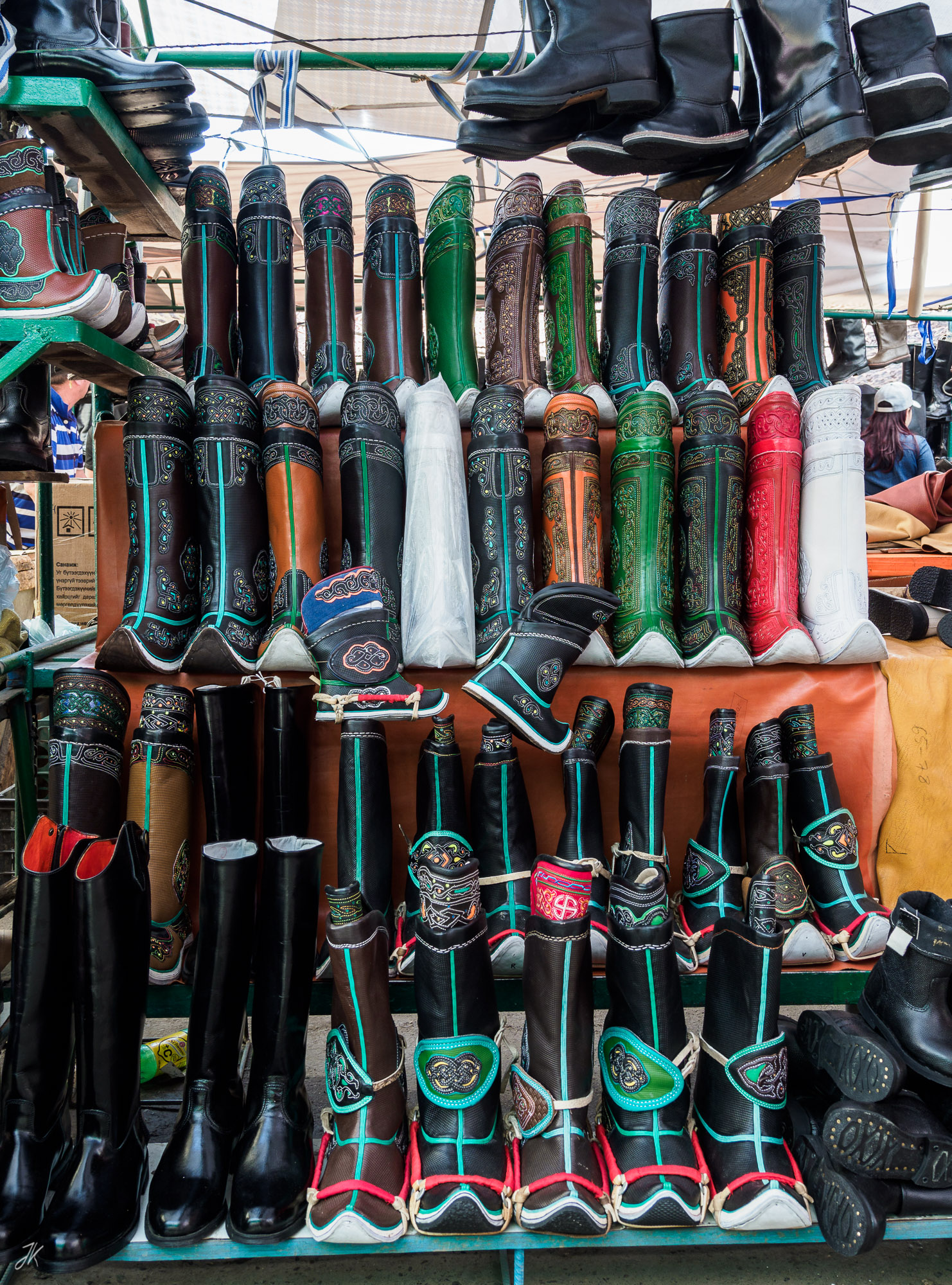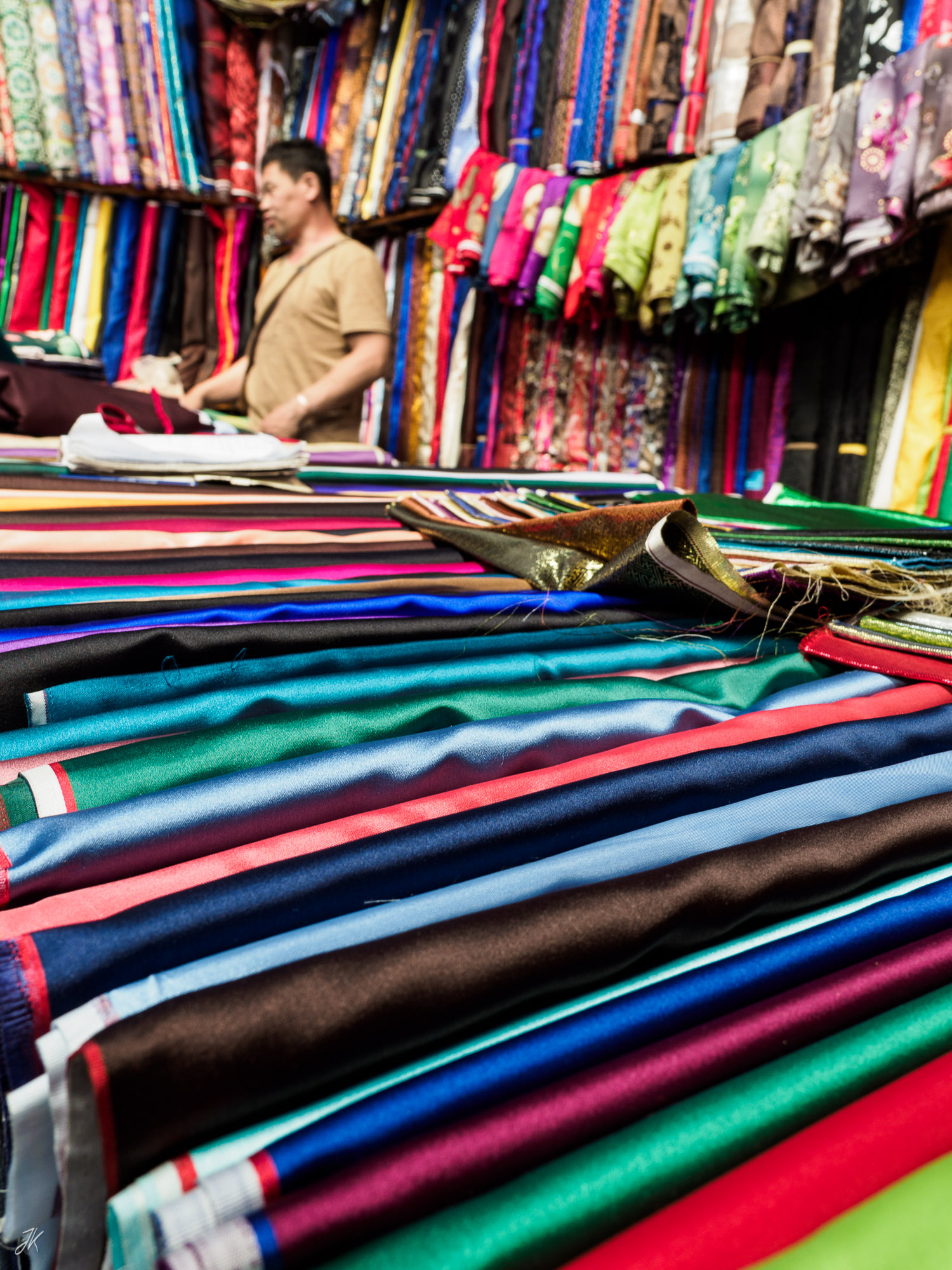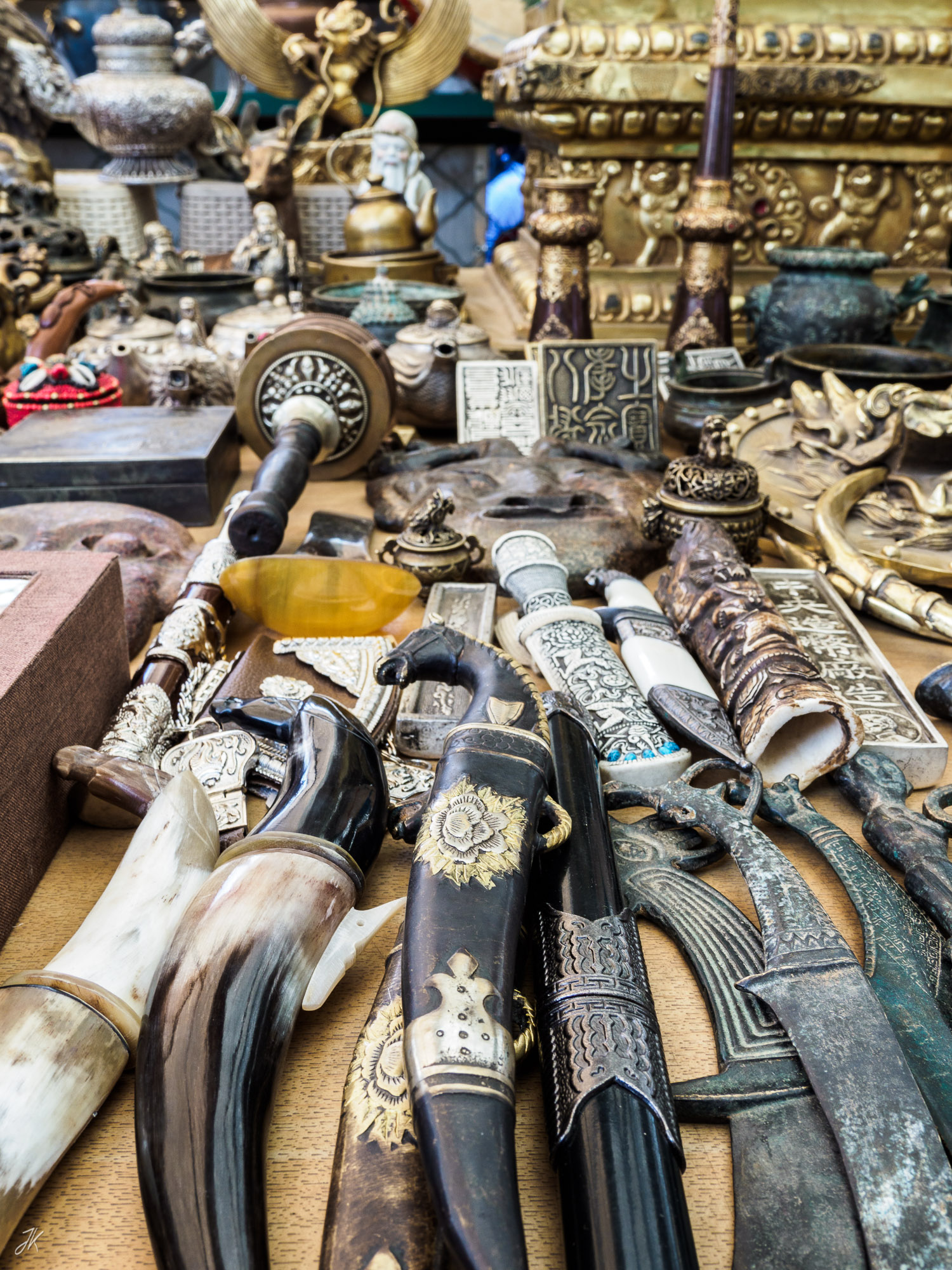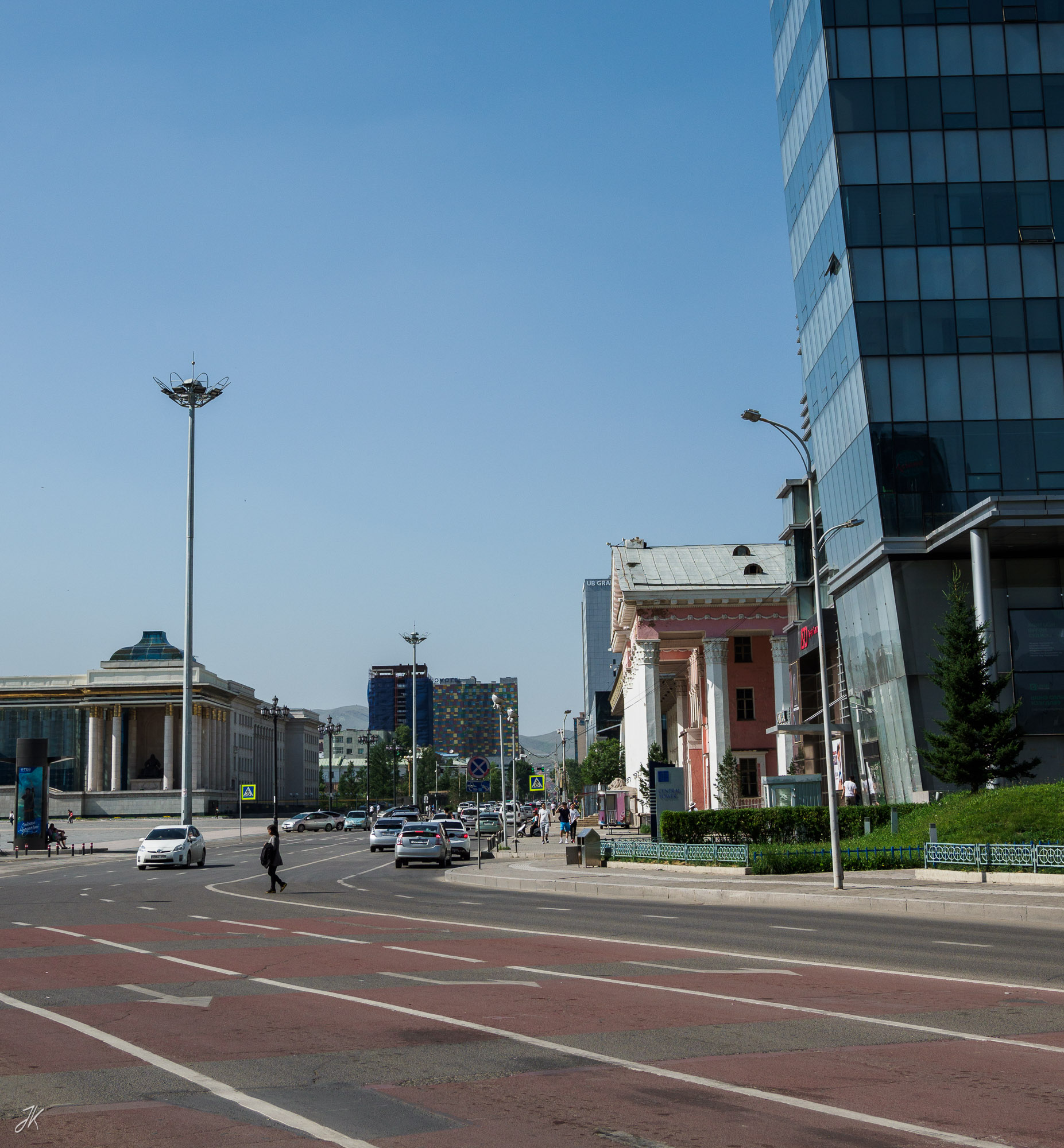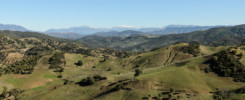Nomadic would be the single most fitting but insufficient word to describe the Mongolian culture. While half of the 3 million Mongolians live in the capital of Ulaanbaatar, many still practice a nomadic lifestyle not unlike their ancestors. Please note, that this is a personal and very limited view on this diverse culture, biased by the fact that I only visited the Hangai region. Ulaanbaatar, for example, is a sprawling modern city, with it’s own unique and urban flair, which I almost don’t mention here.
See also the album, Impressions from Mongolia, for some more pictures of the landscape and nature.
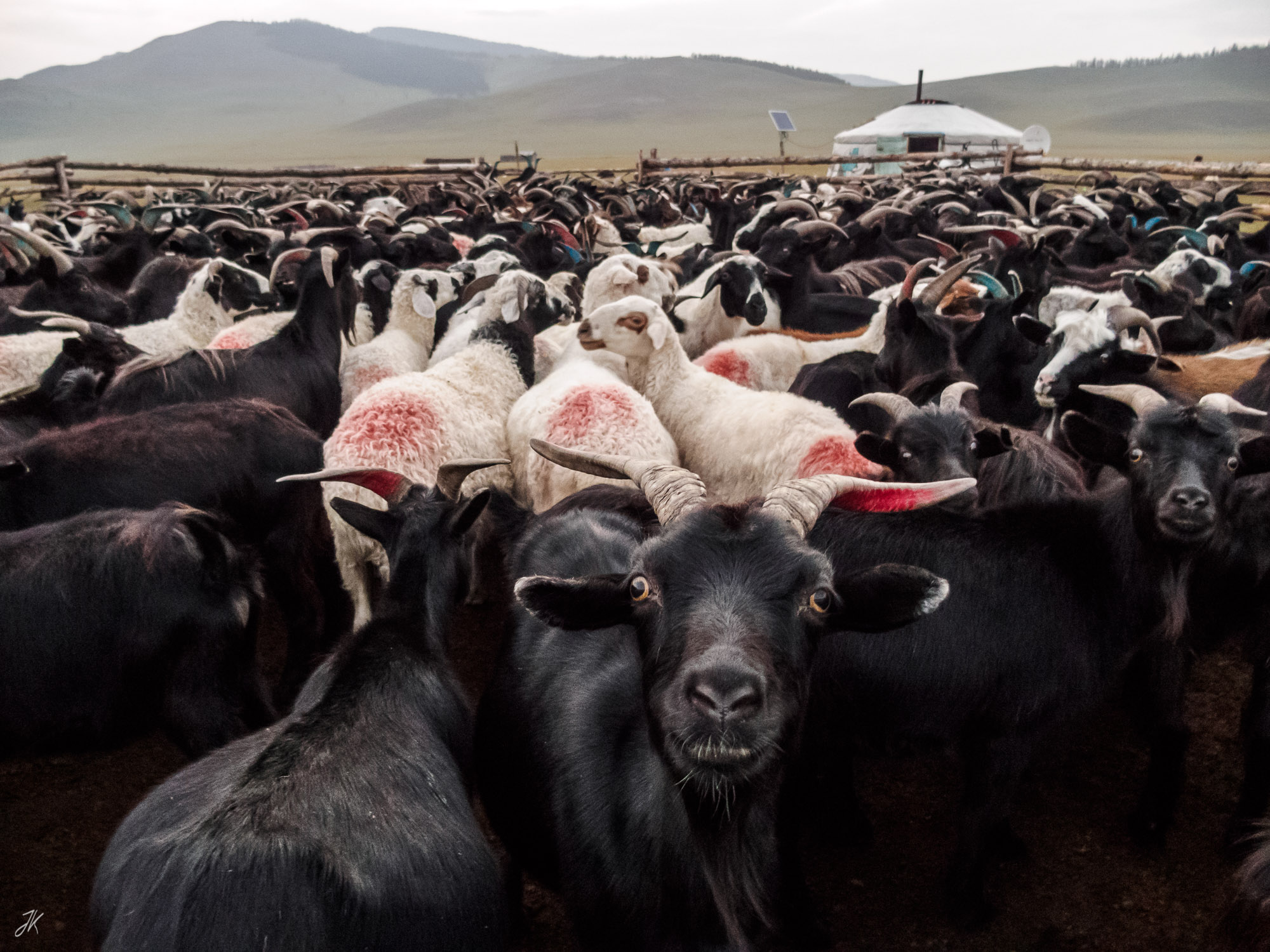
A Mongolian nomad’s wealth is counted in the number of animals he possesses. These goats and sheep are penned up for the night to prevent losses due to wolves.

Mongolian nomads rely on their livestock for food and the children, often on horseback, are tasked with sheep herding.
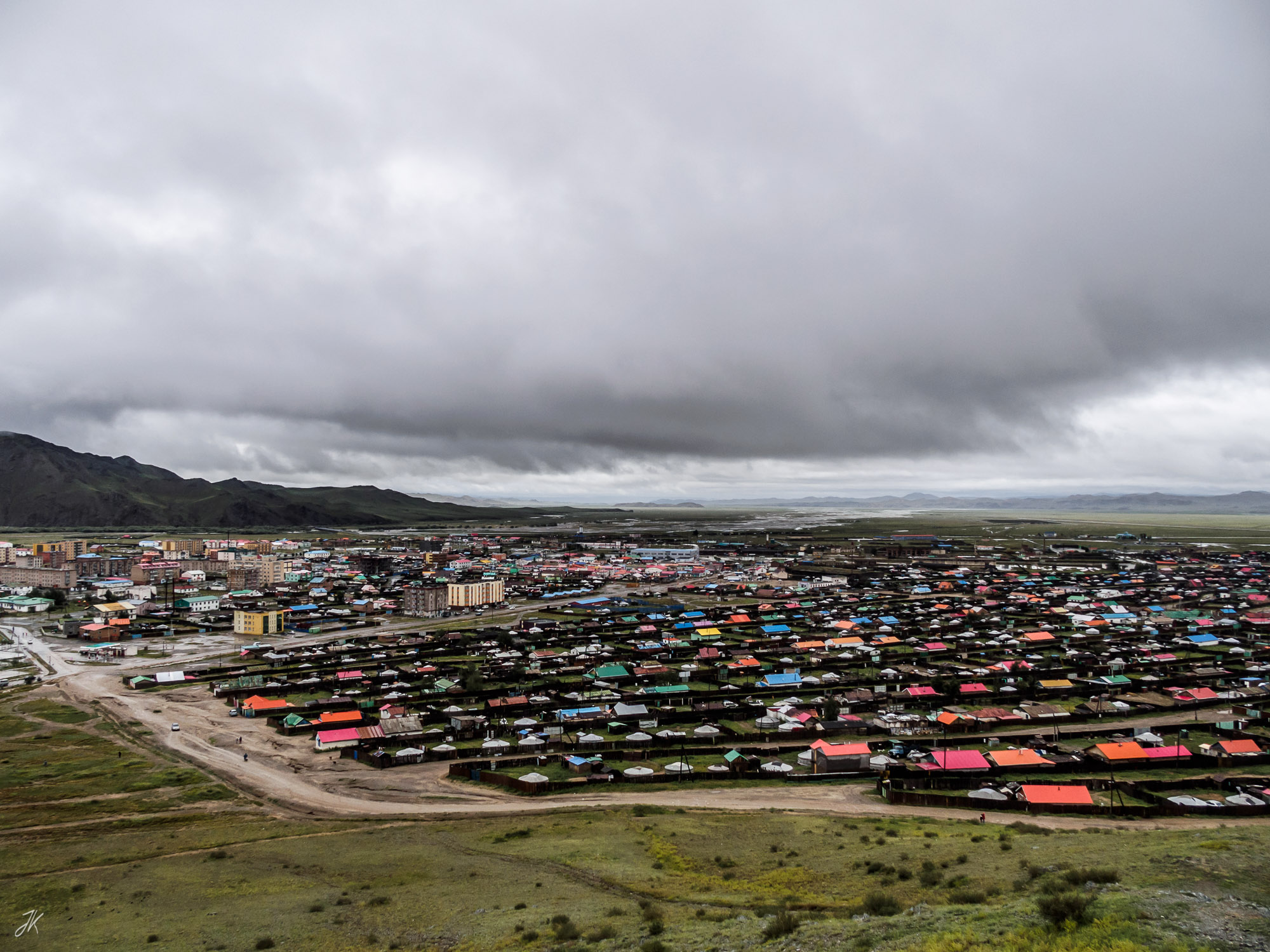
Bayankhongor, capital of the aimag (region) with the same name. While there are several apartment blocks, many of the 30000 inhabitants live in smaller wooden houses and even gers.
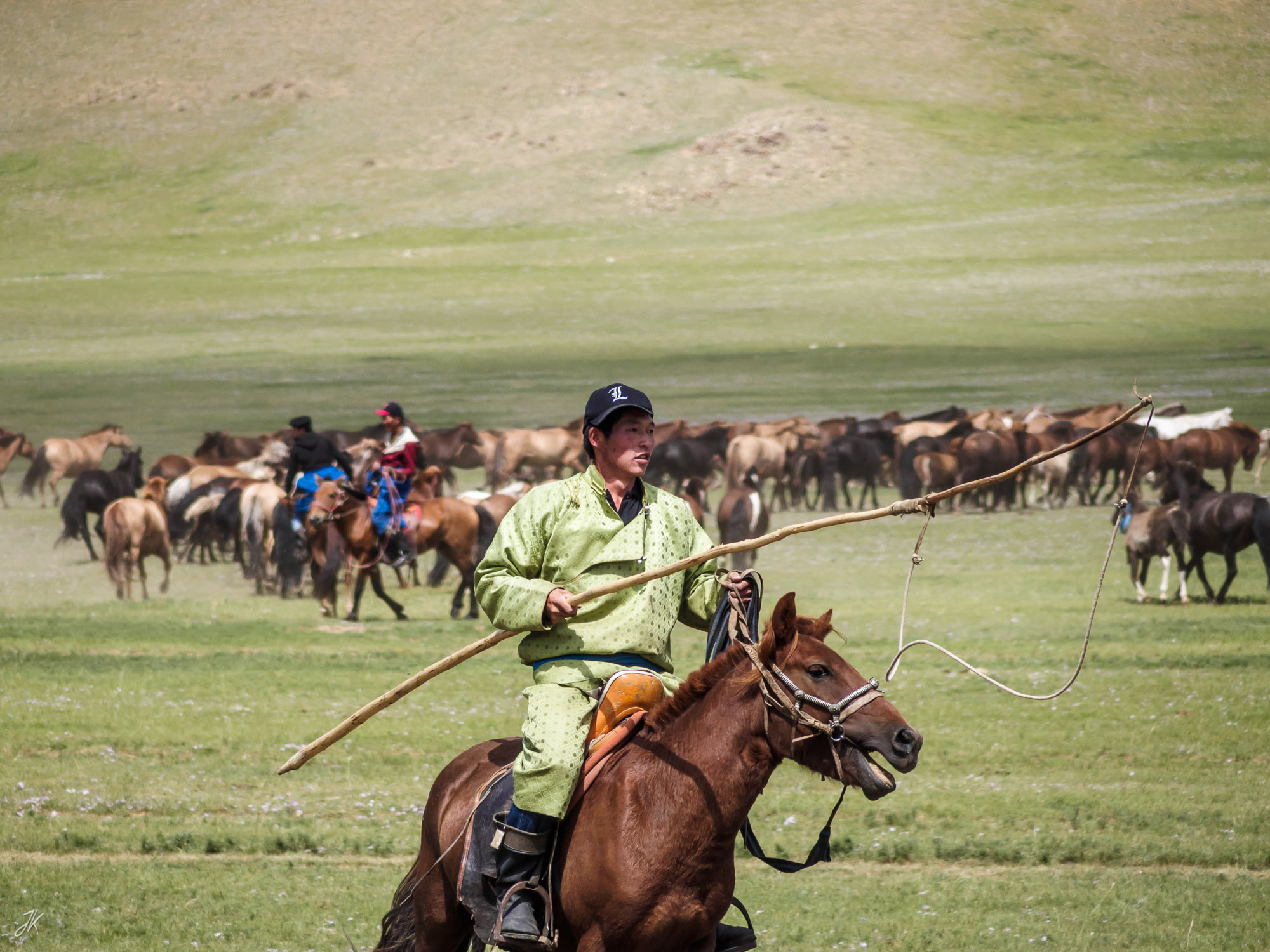
Horsemanship is a valued tradition in Mongolia, here young Mongolians compete against each other and show off their skills.
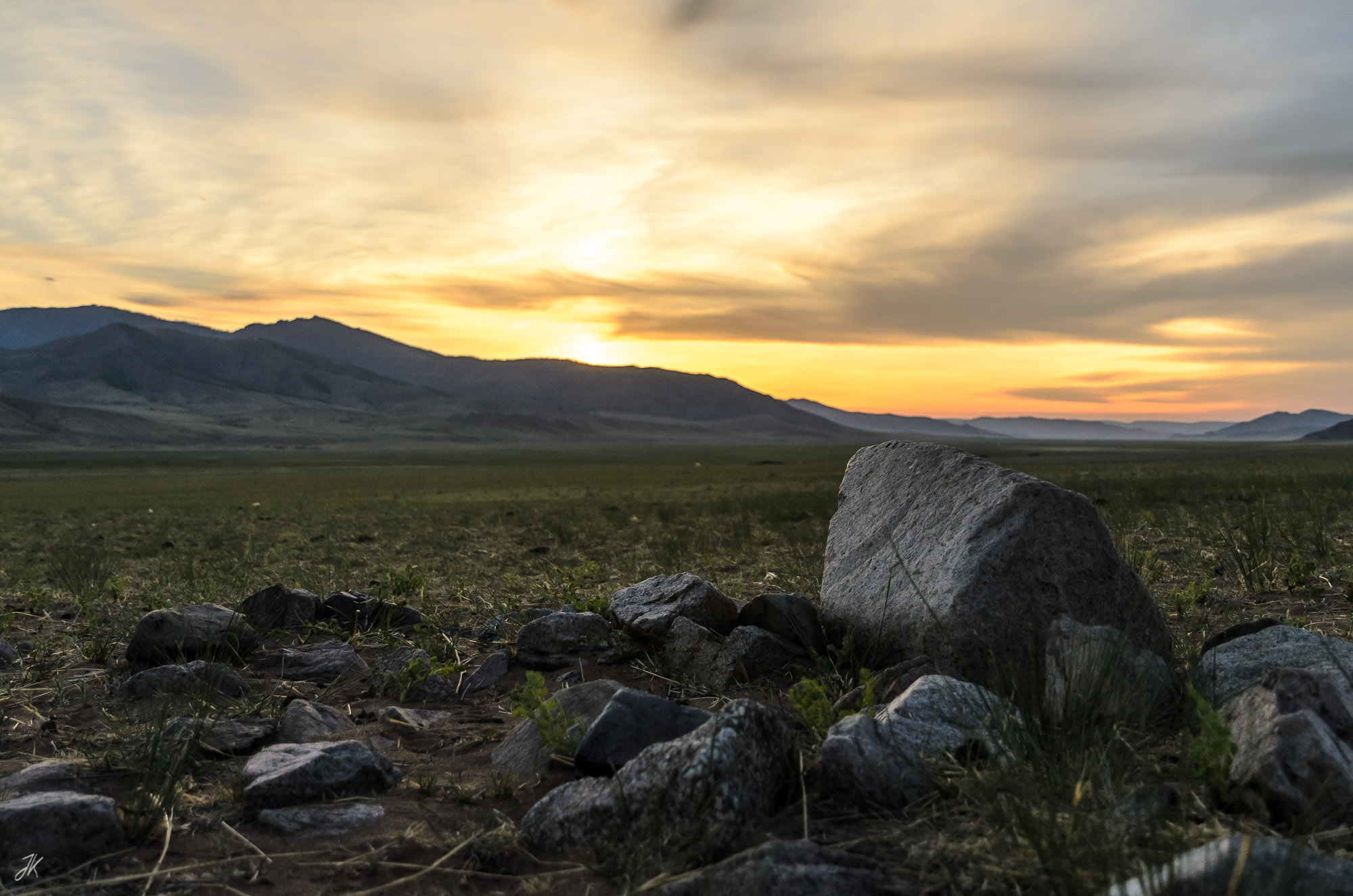
Sunset over ancient hunnic grave stones. The Mongolian countryside is littered with remnants from these ancient nomadic tribes.
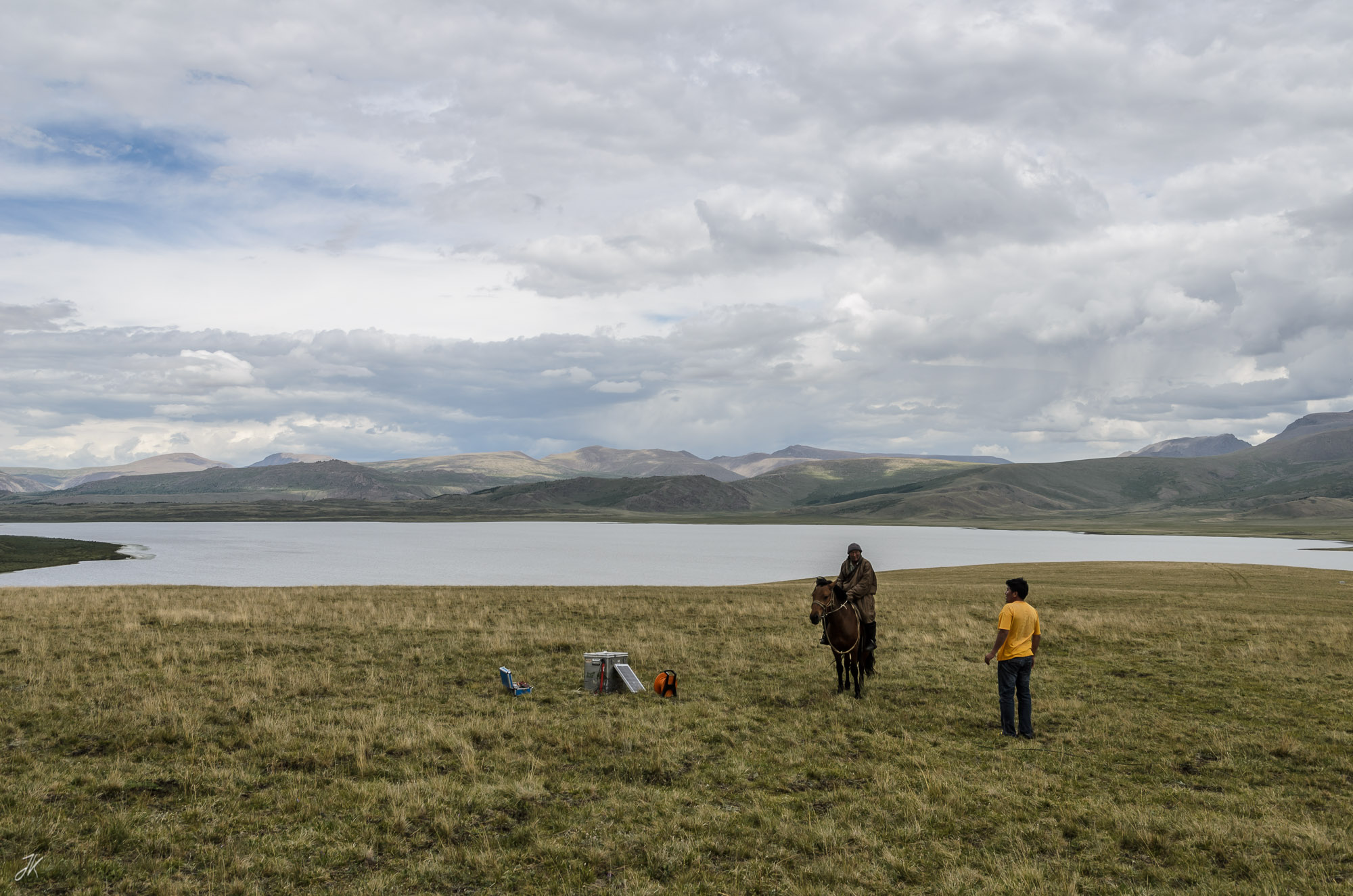
A Mongolian scientist explains the geophysical instrument and measurements to a local nomad on horseback.
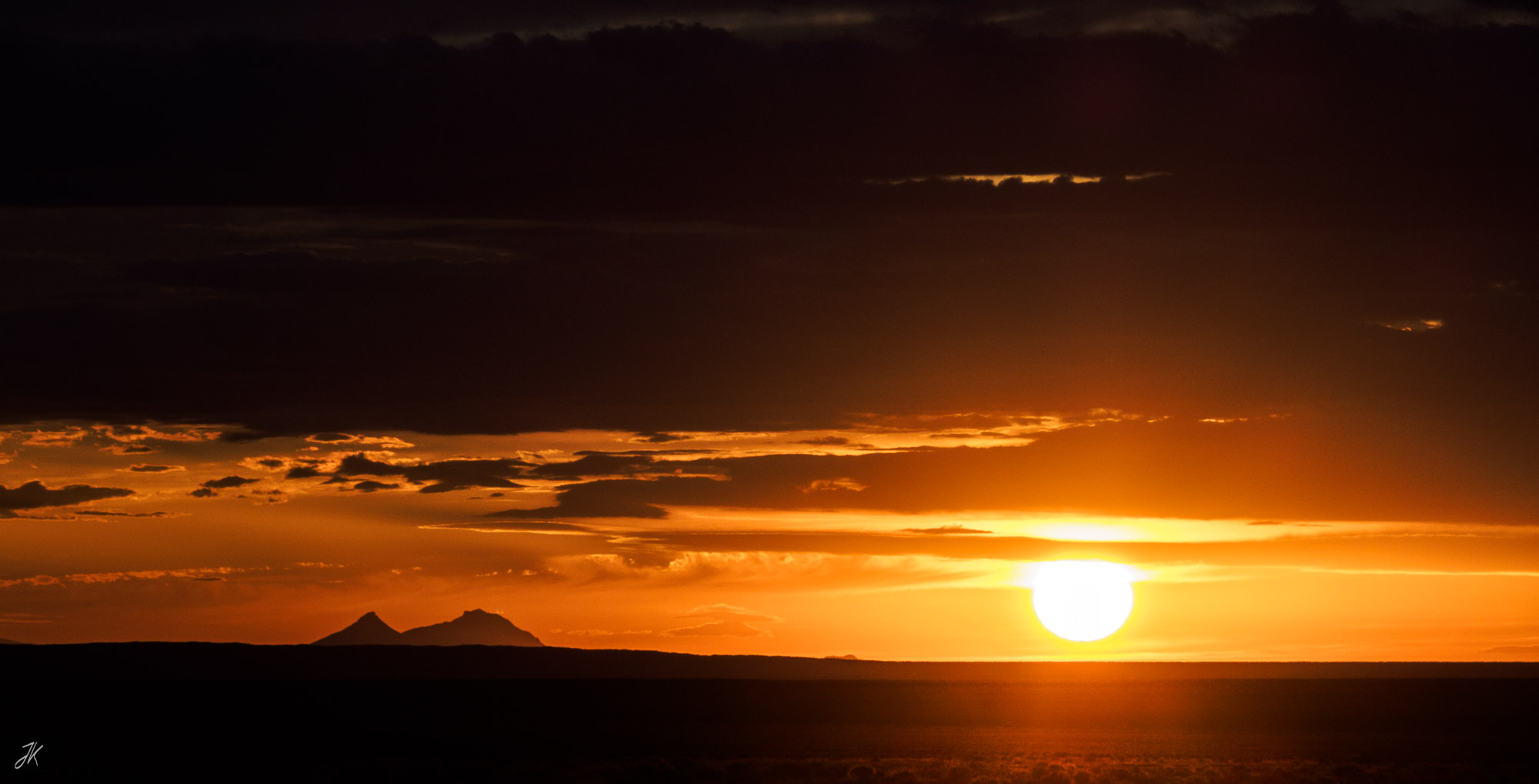
Eej Khairkhan (mong. for Mother Mountain); worshipped by the locals, it is believed that the mountain blesses families with children.
With an altitude of 2275 m, the solitary peak in the Govi-Altai region dominates the horizon, even at a distance of 120km.
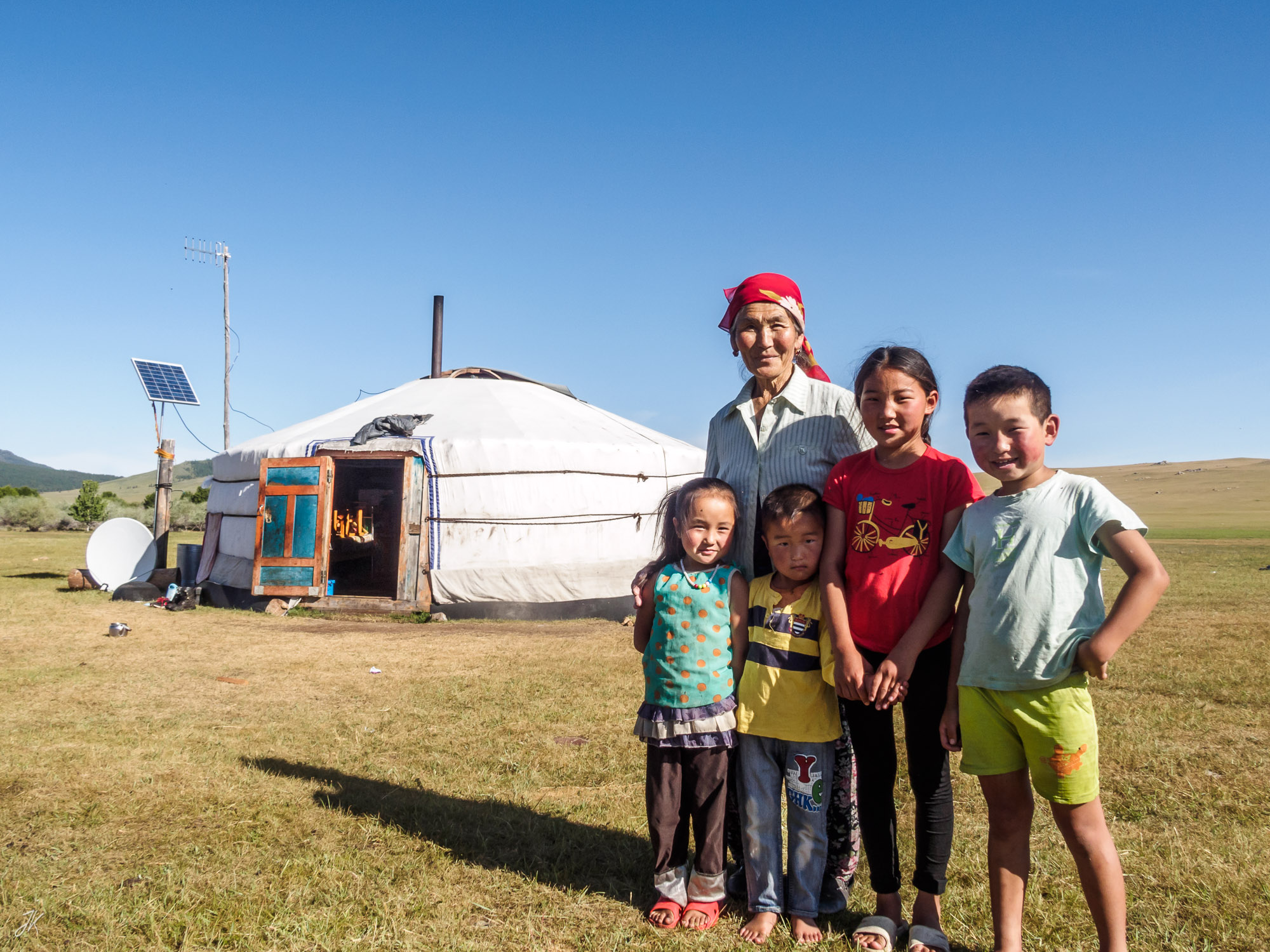
Family in front of their ger, note the satellite dish and solar panel to power the TV and charge a smartphone. Apart from few concessions to modern times, the housing of many nomadic families remains traditional.

Wheather- and windproof, well insulated with thick sheep wool but with natural ventilation, lightweight and easy to install and take down, the Mongolian ger is an ideal accommodation for the nomadic population.
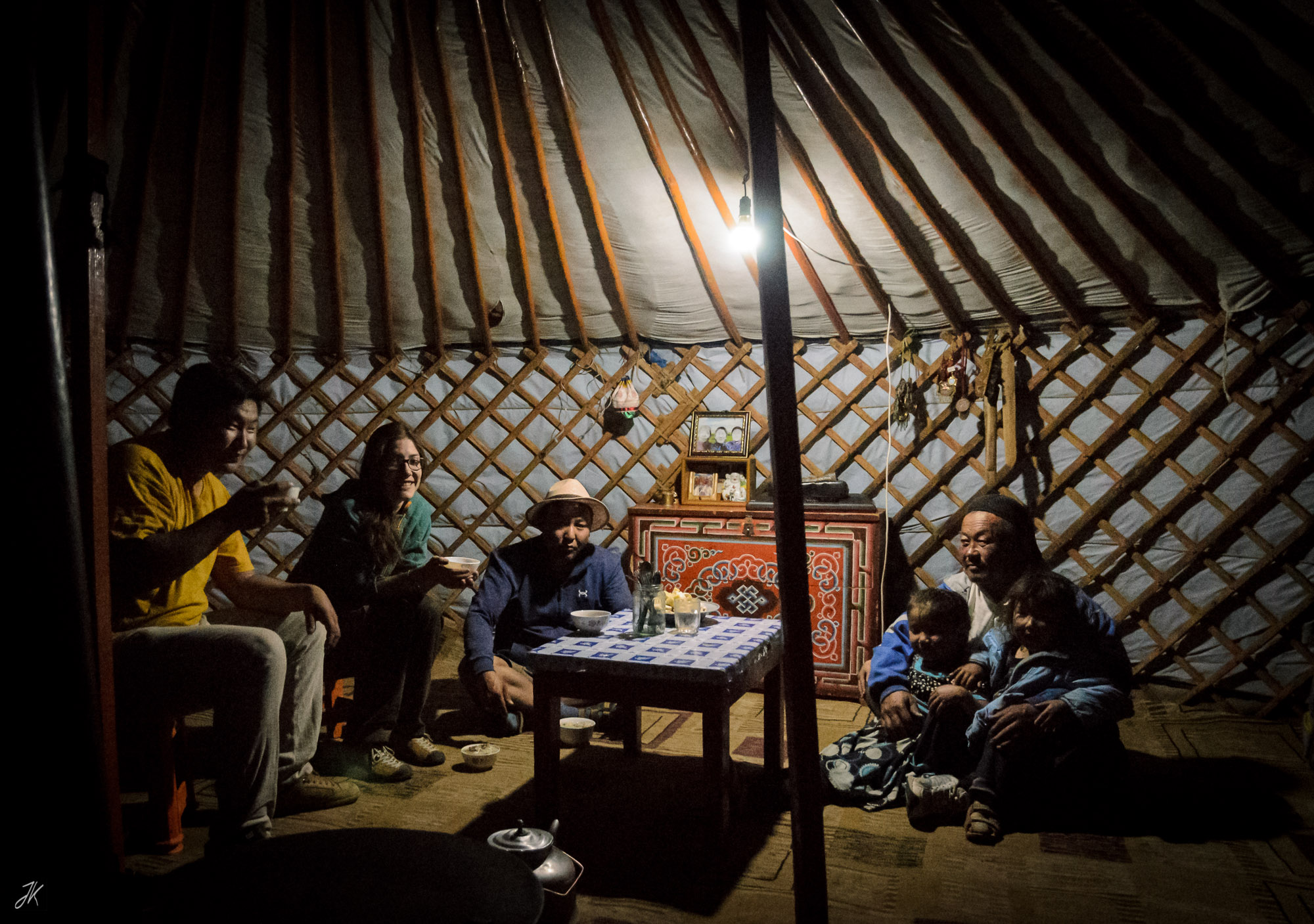
In Mongolia it is customary for locals to invite travellers for rest and refreshment (milk tea and dried sheep/goat cheese) into their ger.
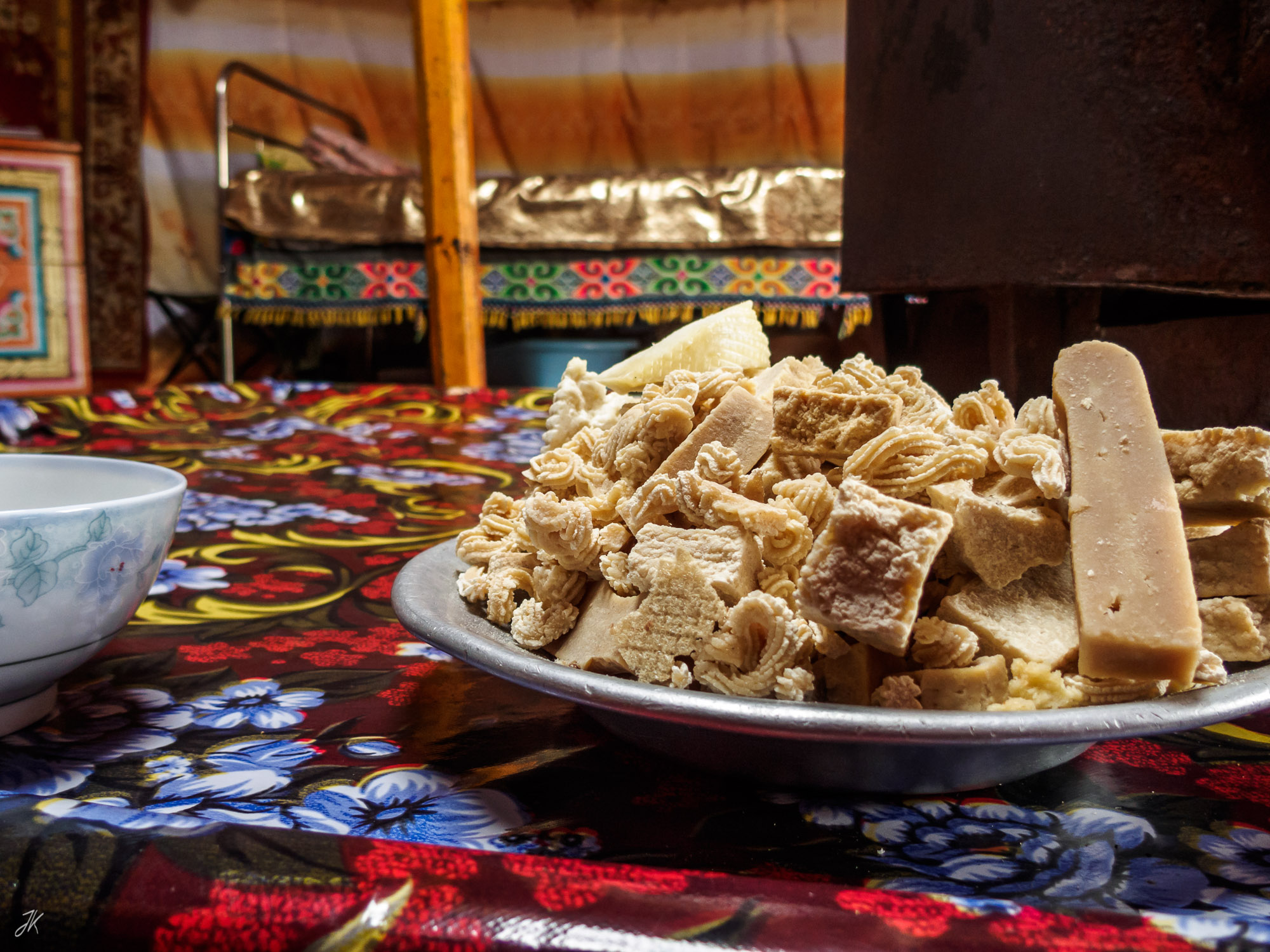
Arrol, Mongolian traditional cheese made from sheep and goat milk, is usually served to travellers as a gesture of hospitality.

Inside a ger, the centre is occupied by a stove and colourful cloths decorate the walls. Our host prepares a stew. Stones are heated in the fire and then placed in the pot for a special taste.
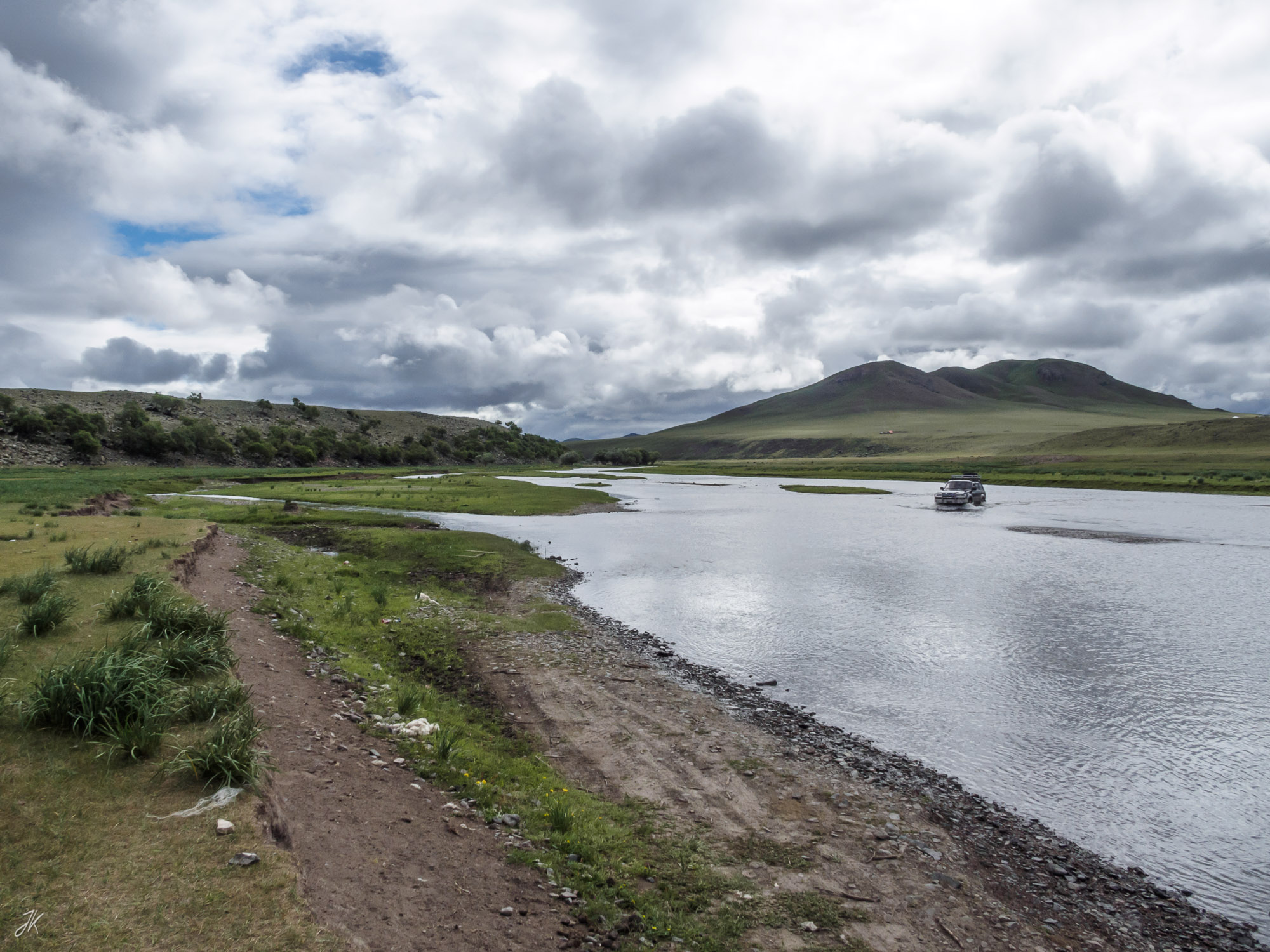
Rivers aplenty but few bridges in the Mongolian wilderness. Fording is unavoidable if you want to get anywhere.
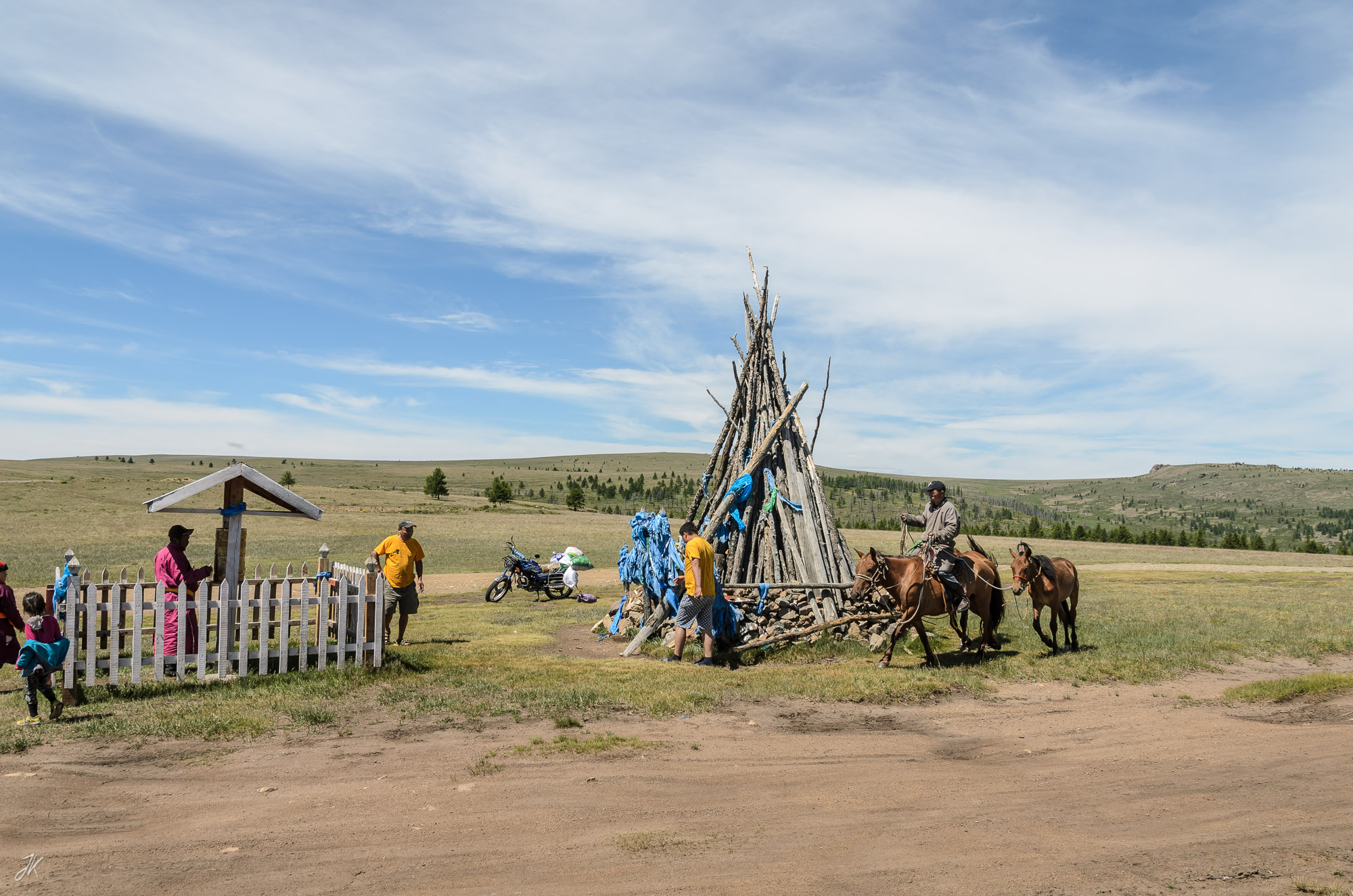
The Mongolian ovoo is a sacred heap of stones and wood, often raised on mountain tops or passes, and serves as a place of worship in the Mongolian tradition. For travellers it is customary to circle the ovoo thrice in clockwise direction and place stones or offerings on top. Here, a Buddhist prayer wheel is placed alongside the ovoo.

Buddhist temple, most of them were destroyed during soviet times. Today some are reconstructed and Buddhism coexists peacefully besides traditional shamanistic/naturalistic religions.
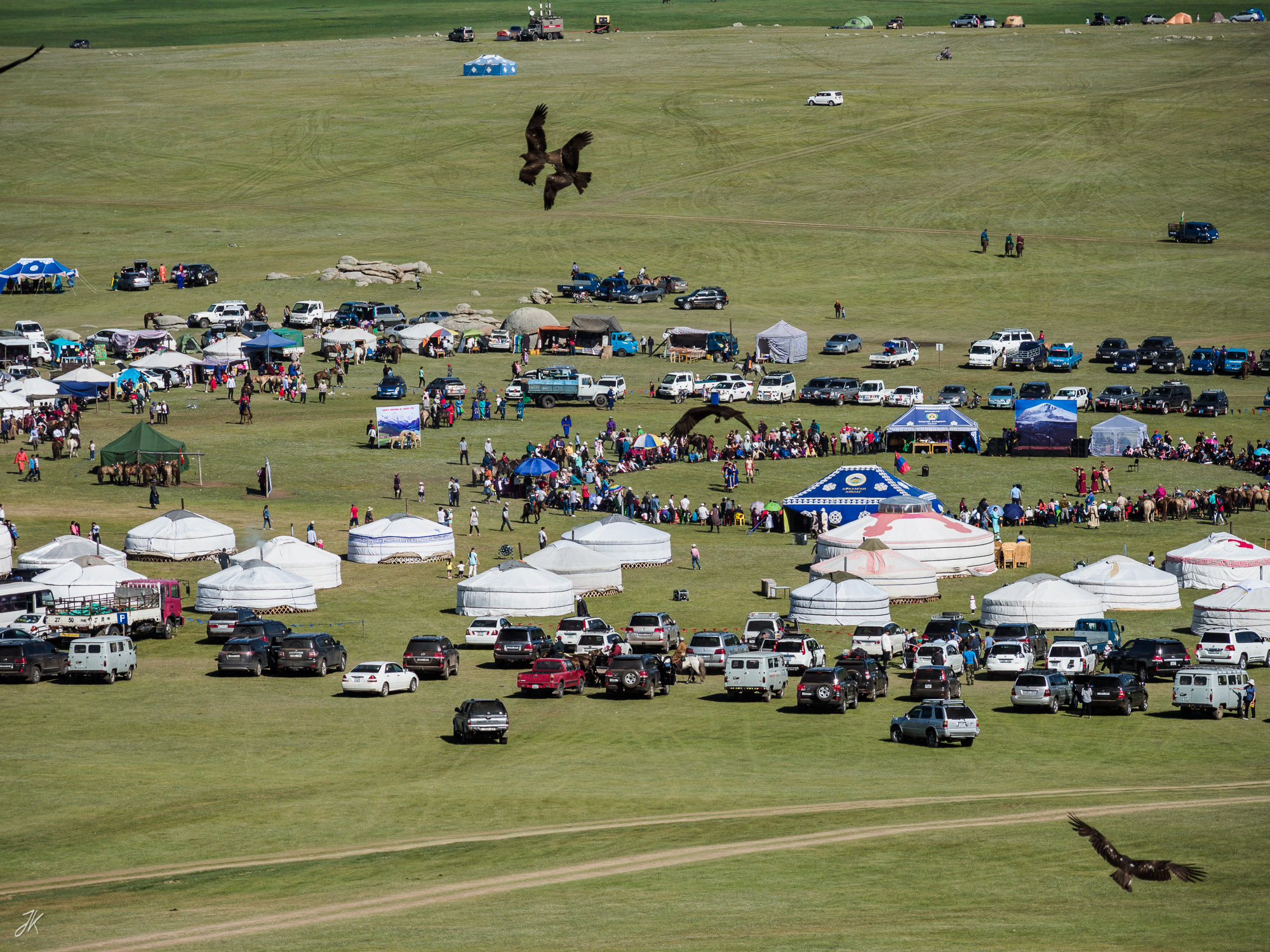
Naadam, the national holiday, is probably one of the best occasions to get a glimpse of Mongolian customs. Archery competitions, horse racing and wrestling are the highlights of the festivities. While Ulaanbaatar hosts the largest Naadam, smaller rural festivities are much more immersive.
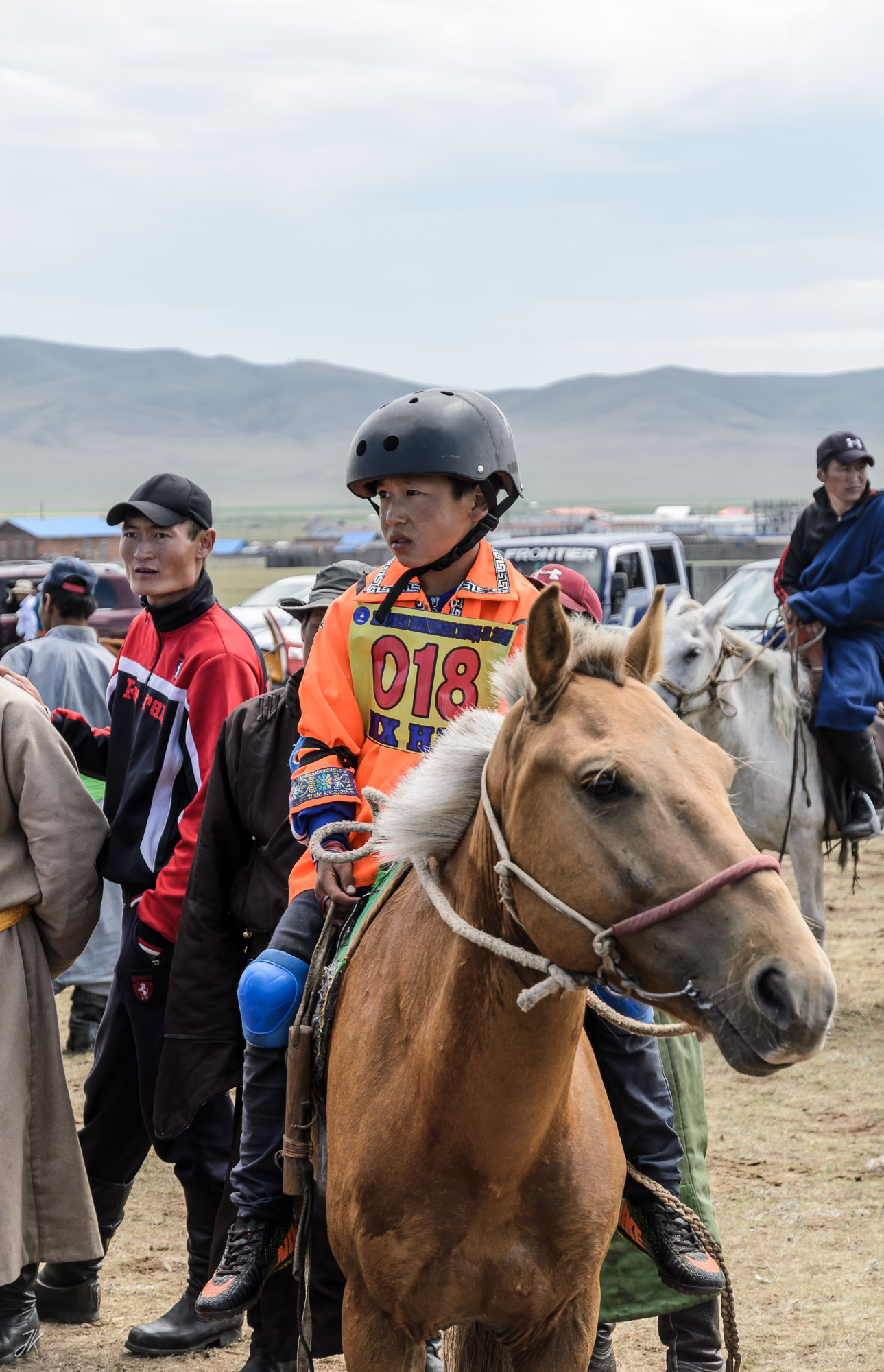
Horse races are one of the highlights during Nadaam, the Mongolian national holiday. Nomadic families show off their horses and the entire village gathers at the finish line to see the winner.
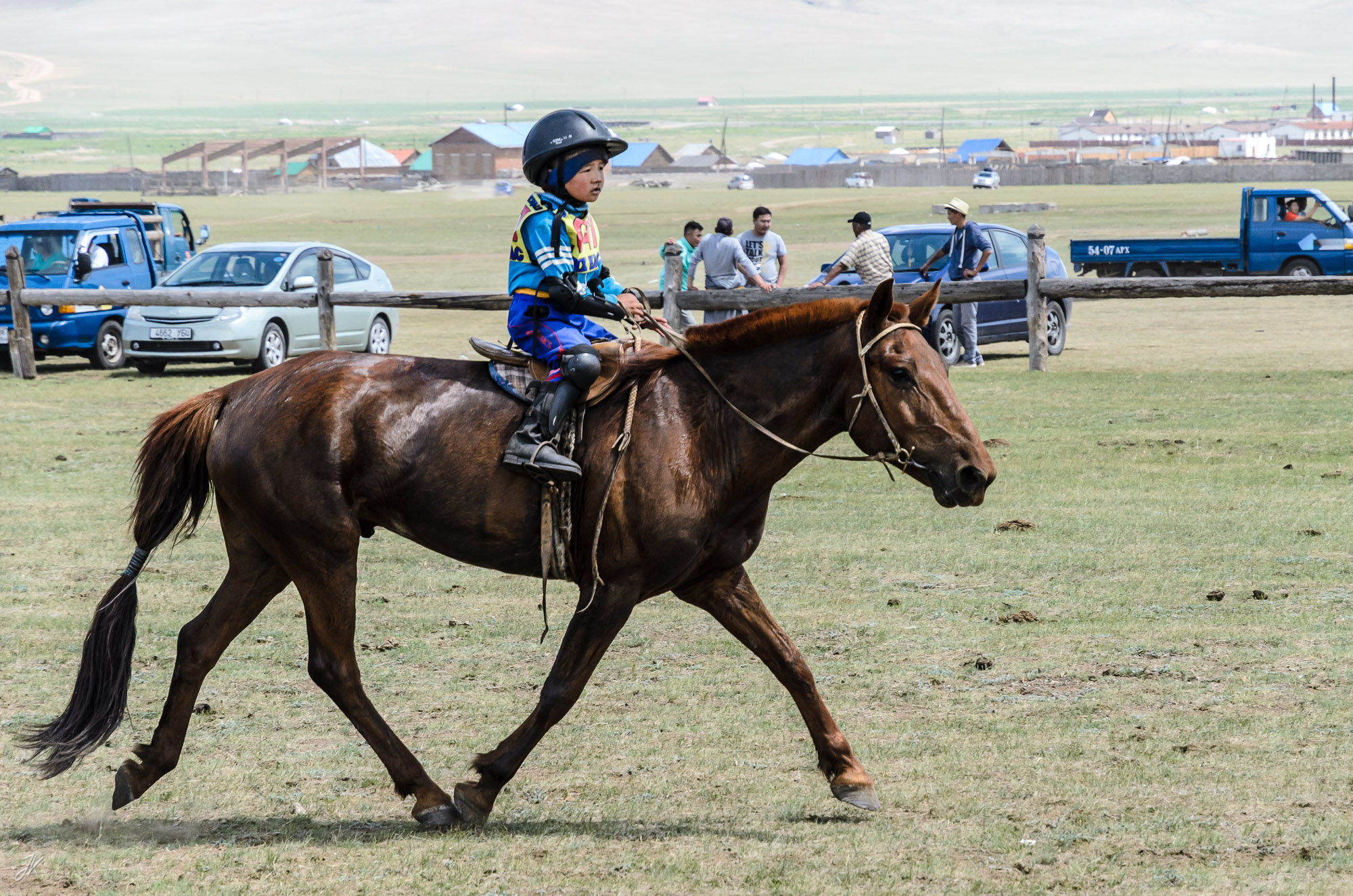
For the horse races during Nadaam, the Mongolian national holiday, the horses are ridden by children. Lighter jockeys mean faster horses.
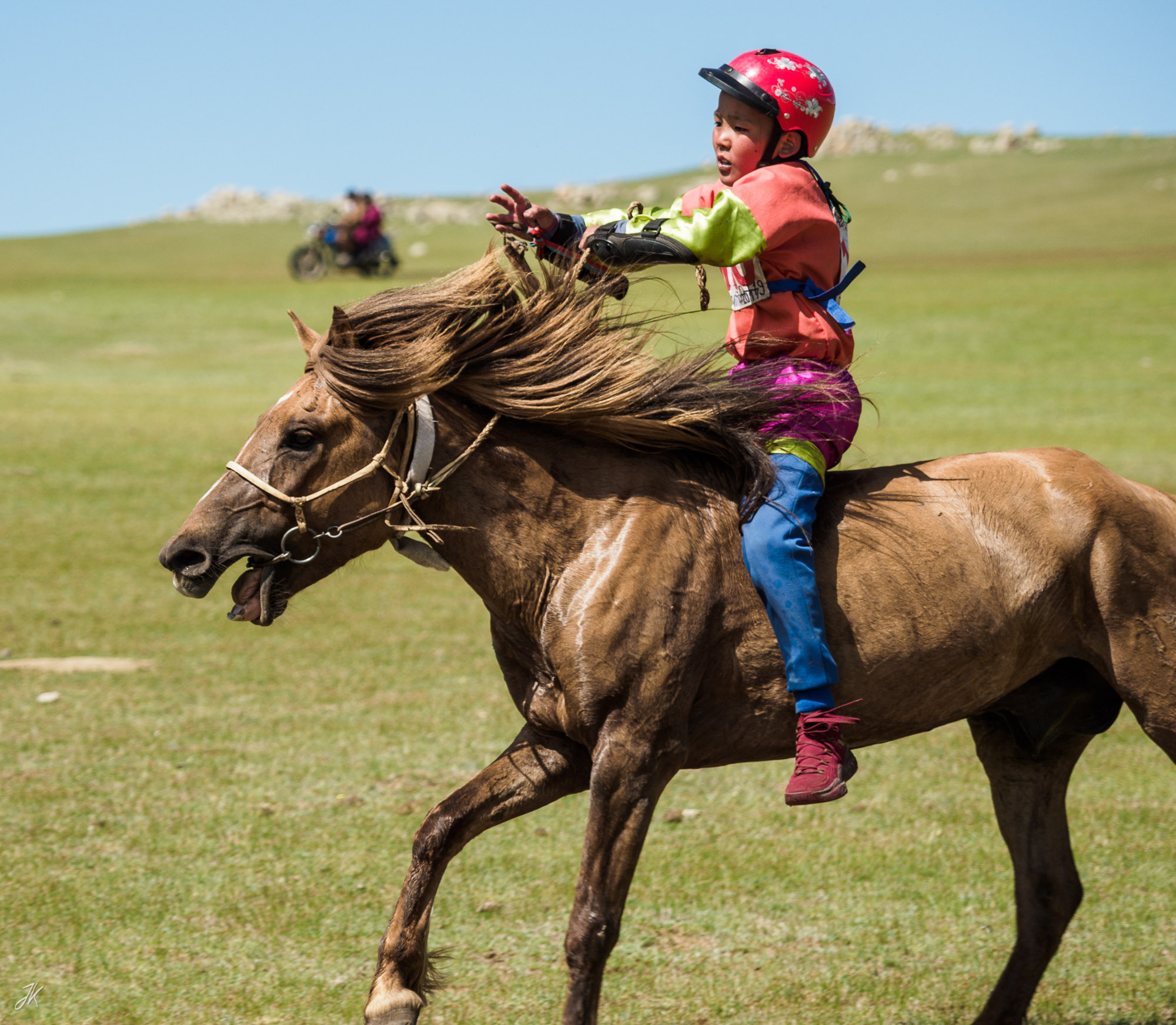
Exhausted horse and rider shortly before the finish line. Depending on the age of the horse, the races can be as long as 30 to 40 km.
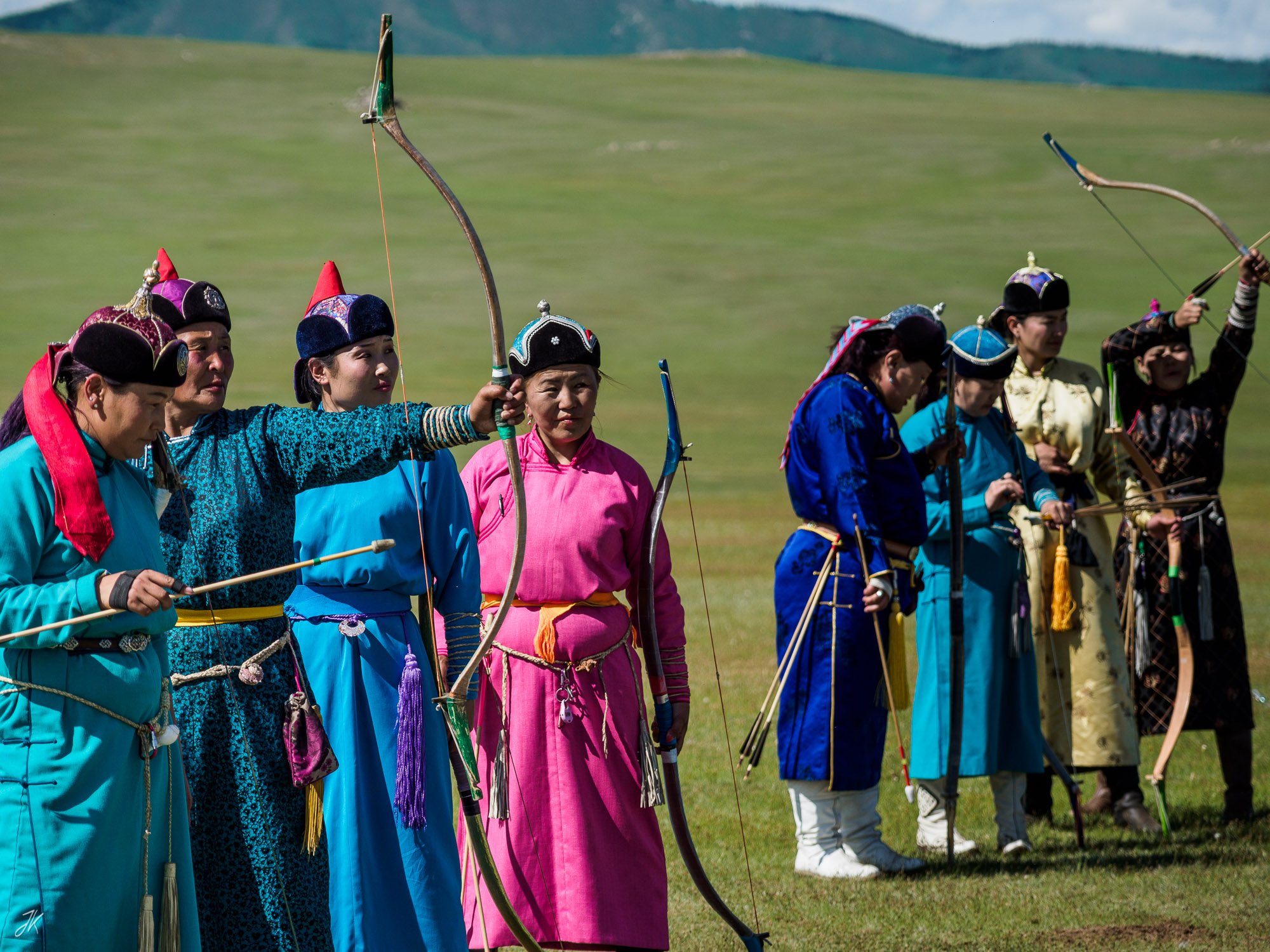
Naadam archery competition, the only one of the competitions, where women are allowed to participate.

Horsetail banners, according to the legend, the use of these banners can be traced back to Genghis Khan.
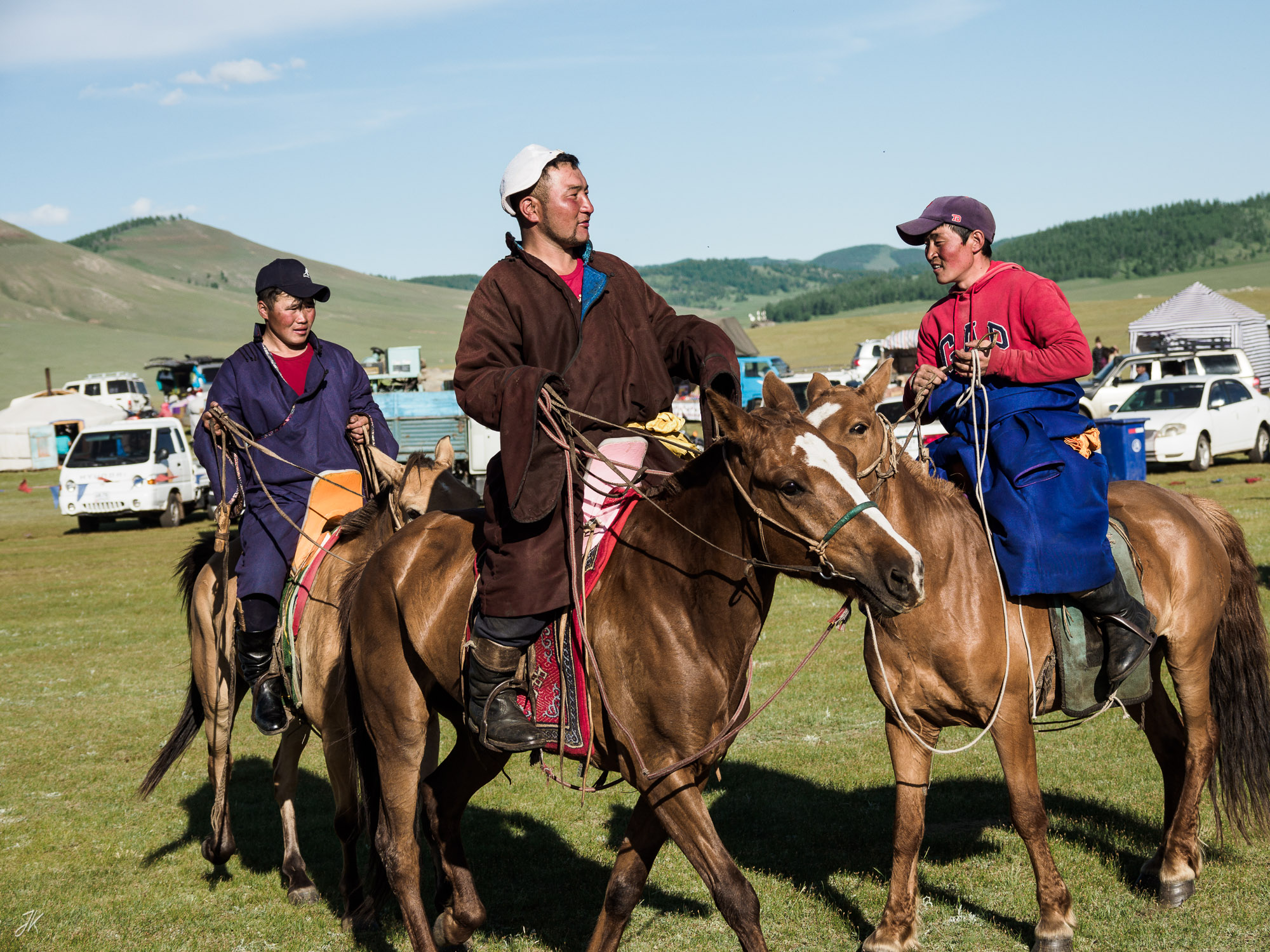
Horses are an important part of the Mongolian culture and especially young men like to parade on horseback in front of the audience at Naadam (including foreign photographers)

Wrestling finalists, the Wrestling championships are the other one of the highlights at Naadam. The Winner earns fame, glory and a fat prize.
